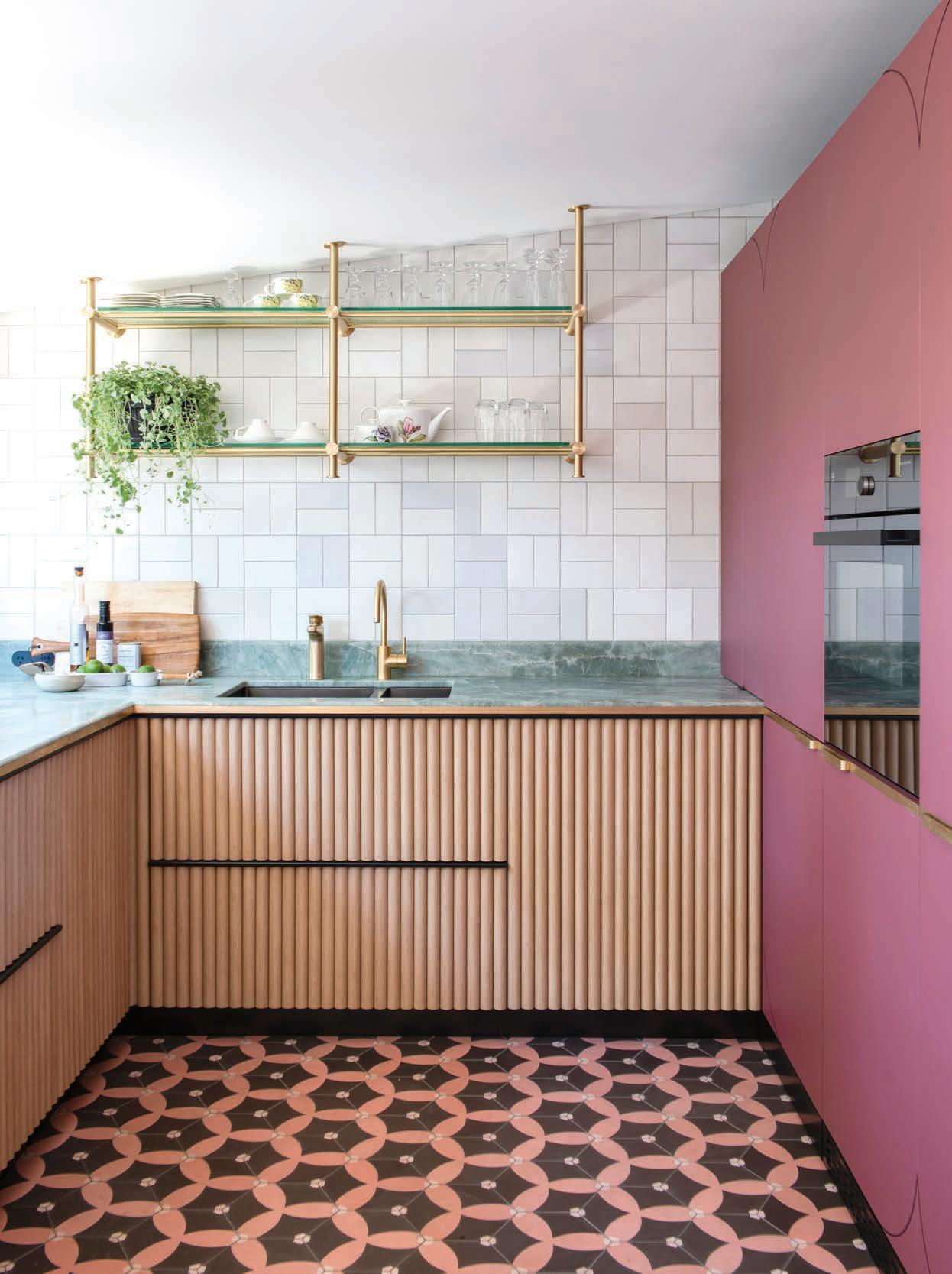

THE BUSINESS OF COLLABORATION
Bridging craft and vision between cabinet makers and interior designers
HANDLE RANGE
EXPRESS YOUR STYLE IN ANY SPACE WITH OUR DESIGNER, EVERYDAY, TRADITIONAL AND PROFILE RANGES.
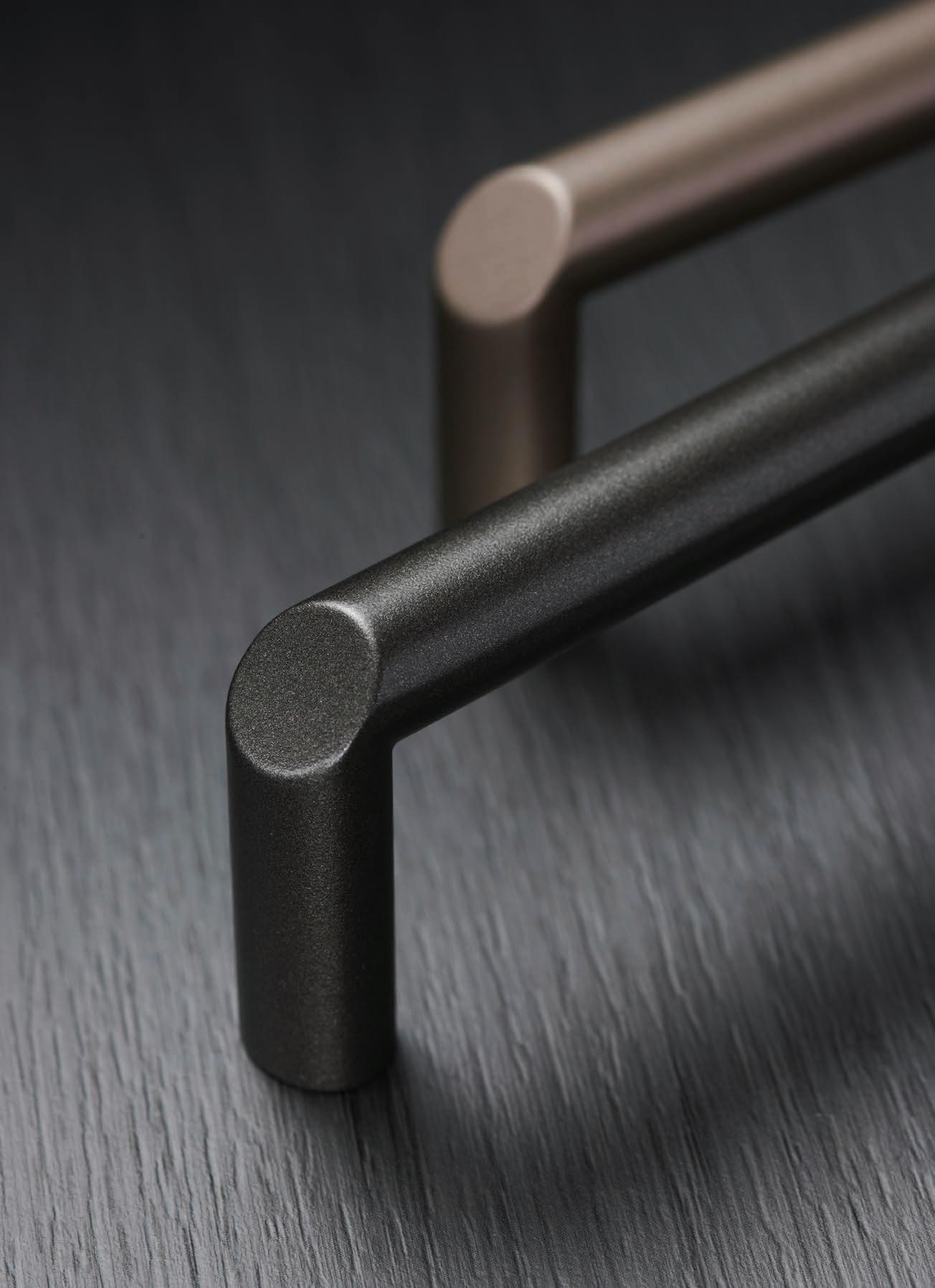
Engineered with meticulous attention to detail, the comprehensive Modar ® handles selection offers unique choices for residential, commercial, retail and custom furniture applications.
From modernising an existing room right through to a new build, Modar ® has the solutions that will suit your space beautifully.
EXCLUSIVELY BY LINCOLN SENTRY
From the editor
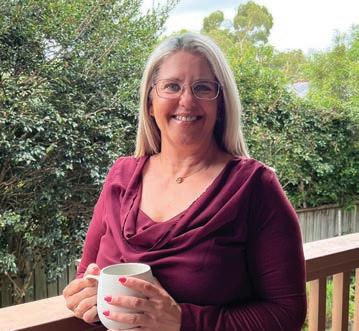
Welcome to issue 3 of Connect magazine! I have truly been humbled by the amazing feedback from our industry this magazine is such a passion project for me and it’s wonderful to have that enthusiasm and joy mirrored in our readers.
Get comfortable and grab a cuppa as this is a feature-packed issue!
As the weather turns chilly, we focus on the business of business as our major theme this issue. With the majority of our industry made up of sole traders and small-to-medium businesses, it’s common for the busy-ness of running a business to be a hot topic among members.
I had the pleasure of speaking with a pretty fantastic group of tradesmenturned-designers for a story on collaboration between the design and cabinet making sectors. Their insights are fascinating and they were able to bring their experience on both sides of the fence to provide some very interesting commentary.
Our contributing writers also turned their attention to a range of business issues Selina Zwolsman breaks down the essential skill of business writing and how to craft words that work; Ben Fewtrell takes us on a journey through business financials; and Pam Kershaw looks at how to maximise your business branding.
Our incredibly diverse industry comprises a wide range of different types of business, so we wanted to know more. Rob Ditessa spoke to Gareth Krost from Krost Business Furniture about this successful family business. And I was privileged to speak to four completely different individuals and businesses to look at their origin stories and celebrate the different ways they contribute to our industry.
Plus, catch up on progress with the ACFA/KBDi merger, enjoy the ISH Design Plus Award winners from the show earlier this year, and soak up the Vivid Emerging Designer winners from 2024 (ahead of the 2025 awards later this year). The ACFA Workplace Advice Team has an update on Casual Employment Law changes, and our friends at KBDi look at the range of pathways into our industry and explore how we can encourage more participation from school leavers. The HIA Economics team has provided a very interesting update on market confidence in the kitchen and bathroom sector.
And, you won’t want to miss all the fabulous updates from our advertisers please support these wonderful businesses who support our organisations and make it possible for us to continue to do what we do best. Enjoy!

Connect magazine is published by the Australian Cabinet & Furniture Association.
ABN 80 000 071 787
Publisher: Dean Brakell, CEO, ACFA
Editor: Melanie Gardener
Advertising Sales: Fiona Joynes
Art Director: Liza Jane Smith, liza@monava.com.au
Contributing Writers: Rob Ditessa, Pam Kershaw, Selina Zwolsman, Ben Fewtrell, Dean Brakell, Monique Penton, Tom Devitt (HIA)
Printer: Neo Pty Ltd
Correspondence to: PO Box 157, Gosford NSW 2250
Front cover: Minosa (Nicole England Photography)
Subscriptions: Connect magazine is produced as a hard-copy print publication as well as an online digital magazine. If you wish to subscribe please visit connectmagazine.com.au/
@connectmagazineaus @connect-magazine-aus


Copyright © Connect magazine (Property of the Australian Cabinet and Furniture Association). All rights reserved. The magazine or any part thereof may not be copied or reproduced without written permission from the publisher. Any specifications and/or claims here within are those of the manufacturer and/or supplier. Disclaimer: Statements by advertisers, expressed editorial opinion and/or contributors’ comments are not necessarily representative of those of ACFA Ltd or its members unless expressly stated. The publisher and editor assume no responsibility for errors or omissions or any consequence of reliance on this publication.
The Australian Cabinet and Furniture Association Ltd is a trade association that represents the interests of the cabinet making, kitchen, design, joinery, furniture, fit-out, and other wood, timber, stone and panel processing industries. Membership and advertising enquiries are welcome.
FEATURES
6 The Business of Collaboration
The power of collaboration to bridge craft and vision between cabinet makers and interior designers. By Melanie Gardener.
14 Words that Work
The art of business writing for cabinet makers and designers. By Selina Zwolsman.
18 Know Your Numbers
The five financial foundations every business owner should master. By Ben Fewtrell.
22 Business Branding
Your brand is the heart of your business, but is it driving business growth? By Pam Kershaw.
26 Brothers at Work
When brothers Colin and Steve Krost immigrated to Australia, they found that their family’s expertise and passion for designing and making office furniture had “stuck”. By Rob Ditessa.
32 Crafting Success
Stories of entrepreneurs in the cabinet making and furniture industries. By Melanie Gardener.
50 2024 Vivid Emerging Designer Awards
Held as part of Décor + Design, the Vivid Emerging Designer Awards celebrate the future of Australian design.
52 Product Update
Give your next project a lift with our editor’s pick of the latest kitchen, bathroom and interior products.
56 ISH 2025 Designplus Awards
From more than 160 entries, 13 outstanding solutions have been selected.
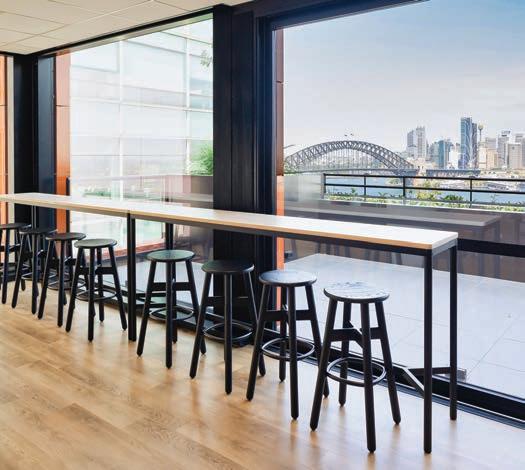
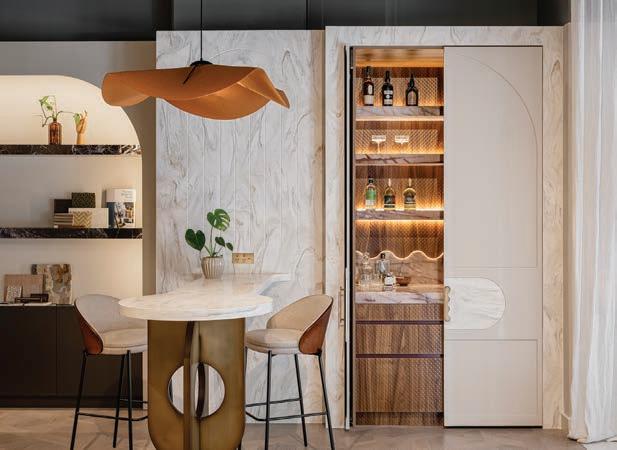
63 Kitchen+Bath Show is coming to Melbourne in June 2025
As the premier event dedicated to the kitchen and bathroom industry, Kitchen+Bath Show brings together the best brands for three days of inspiration, innovation and networking.
81 The Last Word: Sharpening Your Personal Saw — Part 2
Creating better business owners by establishing good habits and routines and asking for help when you need it. By Dean Brakell.
ASSOCIATION UPDATES
42 Pathways to a Productive Future with KBDi Building a career in the kitchen and bathroom industry
46 Improving Market Confidence to Drive Kitchen and Bathroom Activity
HIA has just released its annual Kitchens & Bathrooms Report for 2024/25, providing insight into this important sector, as well as the broader housing and renovations markets and economy. By Tom Devitt, HIA senior economist.
48 ACFA + KBDi Merger Update
With KBDi members voting in May, the merger is moving ahead with confidence.
54 School-Based Apprenticeships & Traineeships
Educational Pathways Program for MSF30322 — Certificate III Cabinet Making (Kitchens & Bathrooms).
62 NCVER 2024 R TO Outcomes Explorer
A summary of ACFA’s results in the recent NCVER 2024 training survey.
64 AFRDI Green Tick Update
ACFA has received an update from the Australasian Furnishing Research and Development Institute (AFRDI) regarding its Green Tick certification program.
68
Casual
Employment Law Changes
With the upcoming changes to casual employment laws, it’s important that employers understand their obligations.
INDUSTRY NEWS
60 Hideaway Floor Mount Range
Striking the balance between premium design and great value.
65 Salice Exedra Pocket Door System
The Salice Exedra Pocket Door System from Nover Australia features a cam-assisted sliding mechanism complemented by a linear damping system.
66 WingLine L — The Folding Door you Love, UPGRADED!
Hettich is proud to announce the latest enhancements to its most popular folding door system, WingLine L.
69 Modar® Handles at Lincoln Sentry
Styles and finishes for all types of projects; Modar® Handles are exclusive to Lincoln Sentry.
70 The Home of Beautiful Natural Stone CAV’ART Designer Stone has established a reputation as a leading supplier of natural stone with an incredible range.
72 Transforming the Joinery Industry with VORTEK Spaces and CABINET VISION
In the ever-evolving world of joinery and interior design, staying ahead of the curve is crucial.
74 Reimagine the Possibilities for Dynamic, Multifunctional Spaces with REVEGO REVEGO by Blum is designed to optimise room functionality while maintaining a sleek, contemporary aesthetic.
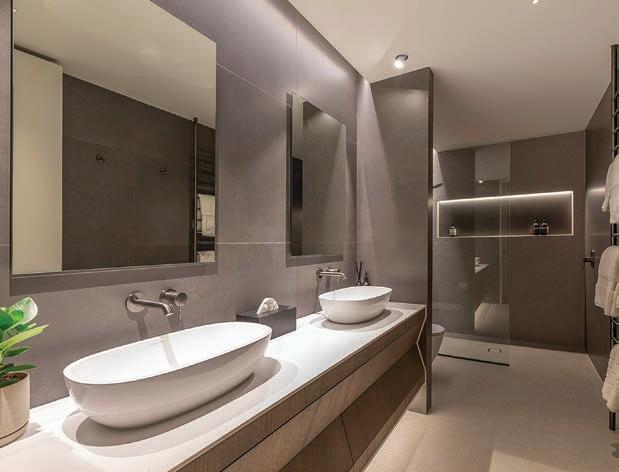
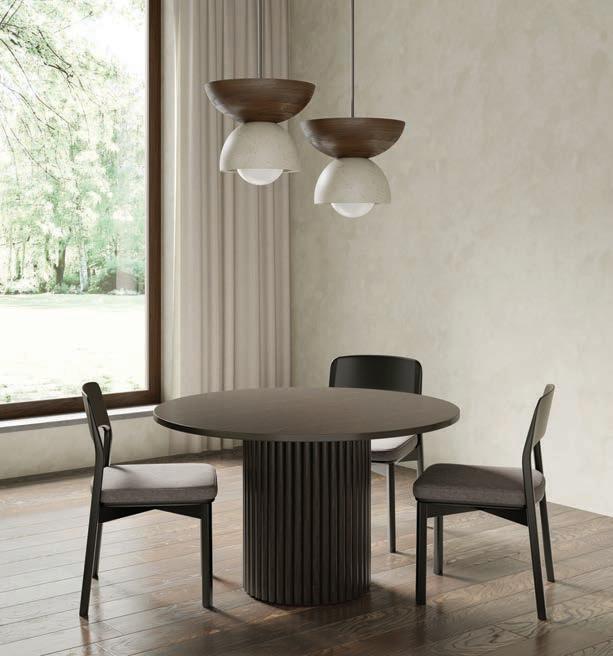
76 Stair Innovations Reaches New Heights with Staircon Digitalisation is transforming how stairs are designed and built — thanks to Staircon.
77 What are the Most Profitable Cabinetry Businesses Doing Differently?
Join the Cutting Edge Expo — an event connecting close to 100 of Australia’s most innovative cabinet makers and manufacturers.
78 Saving Cabinetry with Removable Labels
Say goodbye to sticky residue and leftbehind bits of label with industry-tested removable labels, reducing labour costs and damage for cabinet makers.
79 Want to Be the Go-To Manufacturer for Cabinets?
Cabinetry.Online’s new 3D Room Planner lets cabinet makers and tradies create cabinetry designs directly from their website — without needing to purchase or install software themselves.

80 Owning vs Renting a Factory: What’s Right for Your Business
Deciding whether to own or rent your factory can have a major impact on your long-term finances and business flexibility.
82 Index
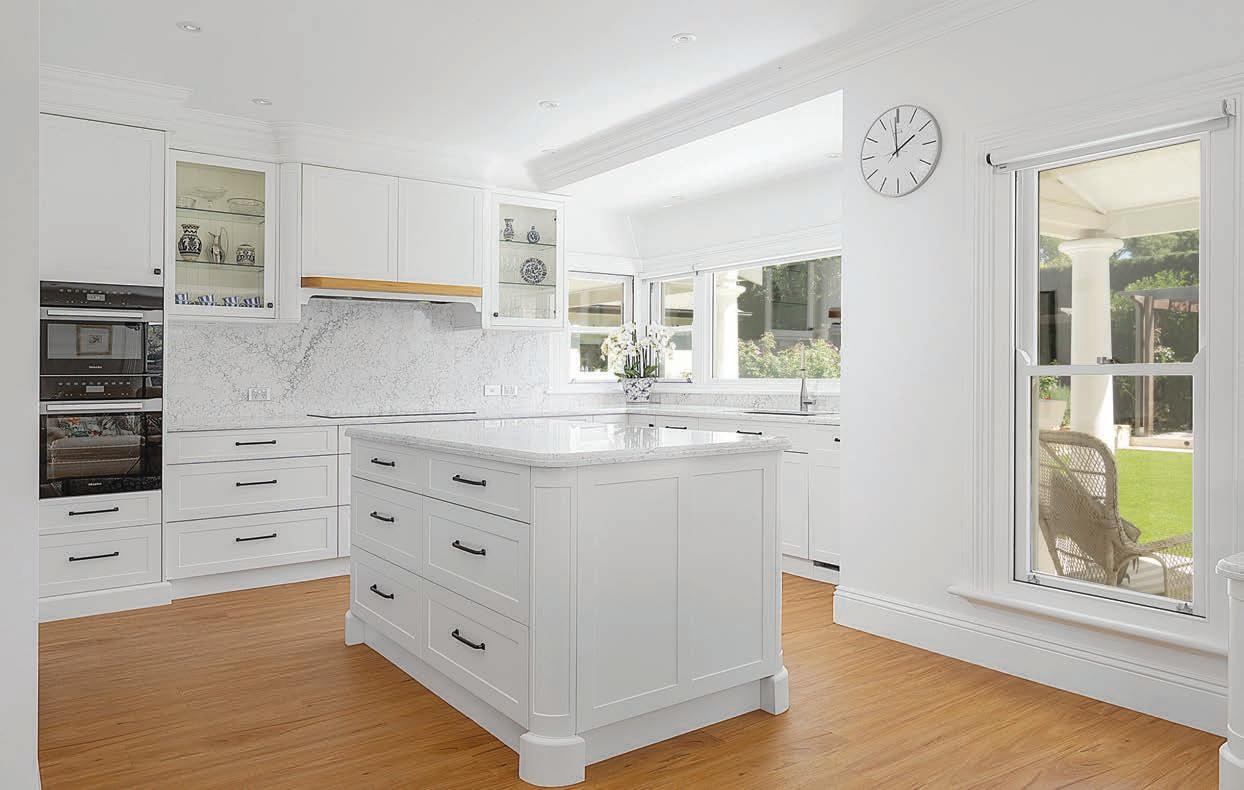
The Business of Collaboration
The power of collaboration to bridge craft and vision between cabinet makers and interior designers
By Melanie Gardener
The partnership between cabinet makers/ joiners and interior/kitchen/bathroom designers should extend far beyond the mere assembly of timber components and the arrangement of spaces. In an ideal world, this synergy should embody the seamless integration of creative vision with meticulous craftsmanship. Although we don’t always live in a perfect world, it’s worth reiterating the benefits of collaboration
Andrew Wright

between these two essential sectors of our industry, as this will ultimately benefit both professionals as well as elevate the final outcome for clients.
To get a broad view of how these relationships can best be established, we spoke to a range of professionals who have been both tradespeople and lauded designers. These wonderful people gave their time freely to examine the best of each sector and give their opinions on how we can foster communication and collaboration more broadly in the future.
Our expert contributors
Andrew Wright from Wright Designed undertook his apprenticeship as a furniture craftsman majoring in Cabinet Making in the late 1970s. He progressed from tradesman to foreman and installation supervisor and is now a Certified Kitchen Designer (Au) and Certified Bathroom Designer (Au). He is a self-employed feefor-design kitchen and bathroom designer and is a multi-award winner across a range of industryjudged competitions.
Darren Genner from Studio Minosa started his apprenticeship as a wood machinist in the late 1980s then became a leading hand and worked his way up to production manager, contracts administrator and briefing designers. He made the transition to full-time
design following exposure to exciting new design software. Studio Minosa was established in 2001 as a fee-for-design interior studio, breaking away from the commission-based model that dominated the kitchen and bathroom landscape at the time. Studio Minosa is one of the most highly awarded design studios in Australia with a multitude of accolades — currently HIA NSW Kitchen Project of the Year and a finalist in the HIA Australian Kitchen & Bathroom Awards 2025.
Gavin Hepper from Concepts by Gavin Hepper completed his apprenticeship in Shopfitting and Detailed Joinery in the mid 1990s and a move to a large kitchen company opened his eyes to the complexity of quality joinery work. He moved into joinery installation and discovered the beauty of quality joinery that was backed by good design. Gavin went on to establish a design and construct business, which has today become a full-service interior design
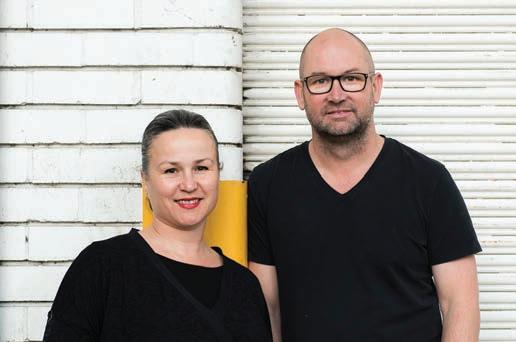
Business & Finance
business. Highly awarded, Gavin is currently HIA Australian Bathroom Designer of the Year 2024.
Mal Corboy from Mal Corboy Design undertook his apprenticeship in Cabinet Making in Perth from the late 1970s through to the early 1980s. Following a move to New Zealand, he started labouring in contract manufacturing roles before setting up his own feefor-service design company specialising in kitchens, bathrooms and full interiors as well as freestanding furniture pieces. Mal is a Certified Kitchen Designer (Au) and a multi-award winner in industry-judged competitions across Australia and New Zealand, as well as a finalist and winner in many significant international awards programs. He is also a professional member of the Designers Institute of New Zealand.
Nathan Wundersitz from SpaceCraft Joinery started his Certificate III in Furnishing in the mid-1990s. Today, he enjoys success with his wife and business partner, Ellen, in their business which provides full design, manufacture and renovation services from their own factory. Nathan’s love for craftsmanship started in high school with a Year 12 woodworking project and, although offered a university place, deferred that offer and took on an apprenticeship instead. Nathan is the current KBDi Certified Designer of the Year and 2024 Design Spaces Commercial winner.
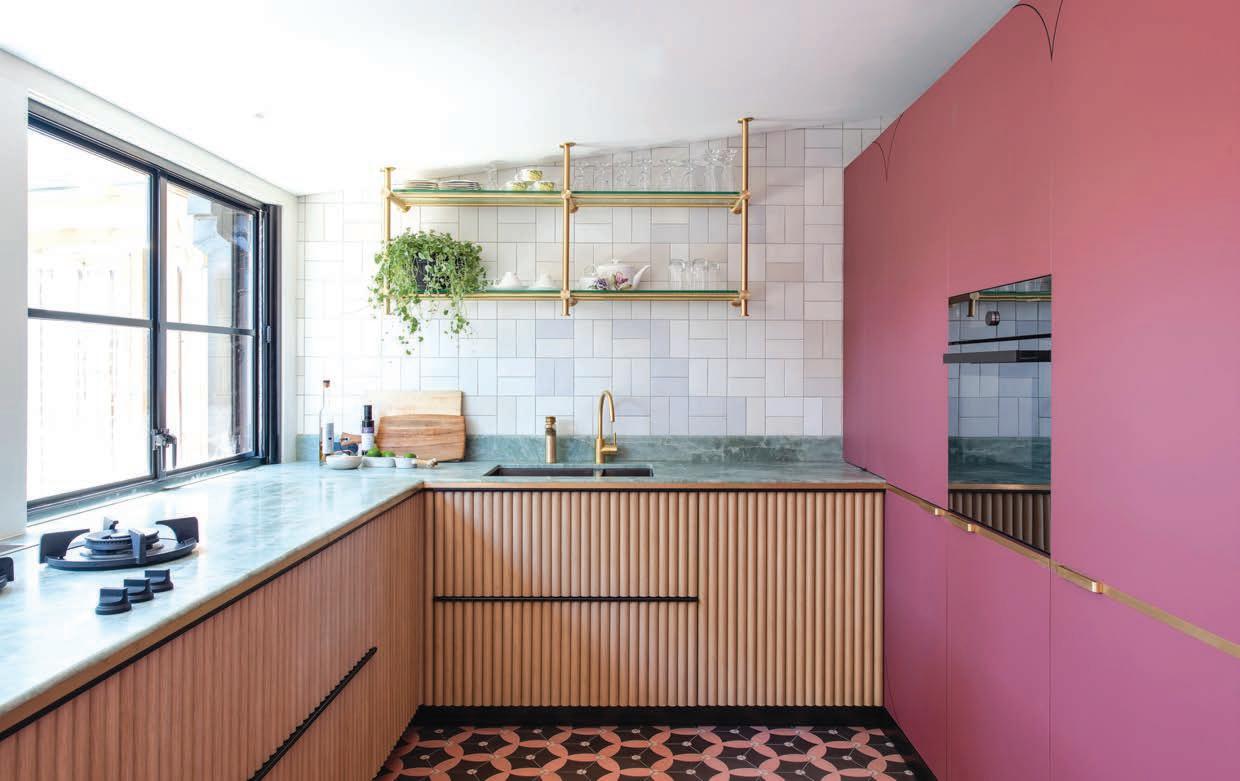
Image: Minosa (Nicole England Photography)
Darren Genner & Simona Castagna Image: Nicole England Photography
Business & Finance
Enhanced Design Aesthetics and Functionality
When cabinet makers and joiners collaborate closely with interior designers from the inception of a project, the results speak for themselves. Interior designers bring their expertise in spatial planning, colour theory, and overall aesthetics, while cabinet makers/joiners contribute their technical proficiency in woodworking, material selection, and structural integrity.
Darren Genner feels that it’s imperative that designers understand the technical background of what they are designing. “You don’t want to design something that can’t be built,” he says. “We are deliberately a very technical studio so we always aim to design from knowledge while being open to learning as well."
This synergy allows for the creation of custom freestanding and built-in pieces of furniture and joinery that not only complement but enhance the overall design scheme of a space. Collaborative efforts ensure that each piece of furniture not only
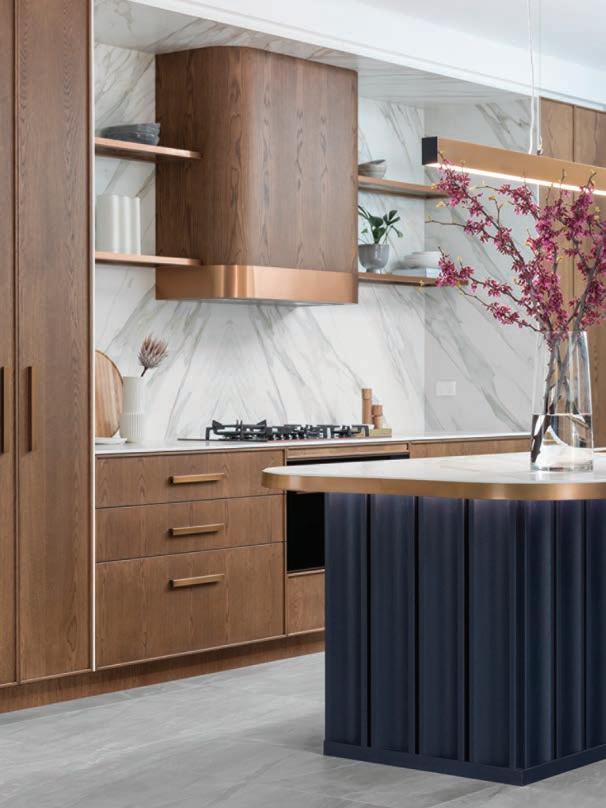
Gavin Hepper
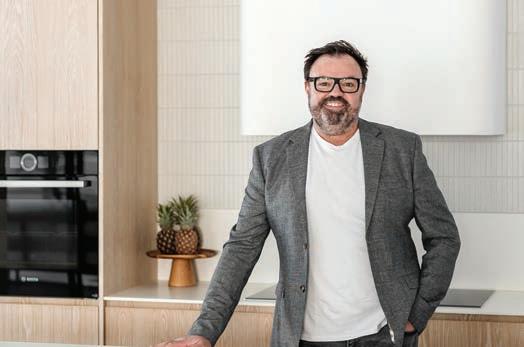
looks stunning but also functions optimally within the space.
“The whole industry benefits when we collaborate more,” says Mal Corboy. “We need to show that we’re more professional and we offer a better solution than an imported option. For me, the best products are designed locally and made locally with an understanding of the environment in which they will be installed."
Technical Expertise: Harnessing the Best of Both Worlds
One of the greatest strengths of collaboration between cabinet makers/joiners and interior designers is the merging of technical expertise. While interior designers excel in conceptualising layouts, ensuring aesthetic cohesion, and optimising spatial dynamics, cabinet makers and joiners bring in-depth knowledge of materials, joinery techniques, and structural feasibility.
Andrew Wright feels that cabinet makers should be more actively helping designers by making themselves available for consultations and providing feedback to the designer, so the designer can help the homeowner make good decisions. “It all comes down to the quality of the plans and the specifications,” he says. “Cabinet makers shouldn’t have to guess at what the designers mean if it’s not on the plans or the specifications, then it doesn’t exist."
A cabinet maker’s expertise ensures that design ambitions do not exceed practical limitations, resulting in a finished product that is both beautiful and structurally sound.
“My background has taught me to simplify things,” explains Gavin Hepper. “From a design perspective, I concentrate on the function and the form first to
Image: Concepts by Gavin Hepper (Louise Wellington Photography)
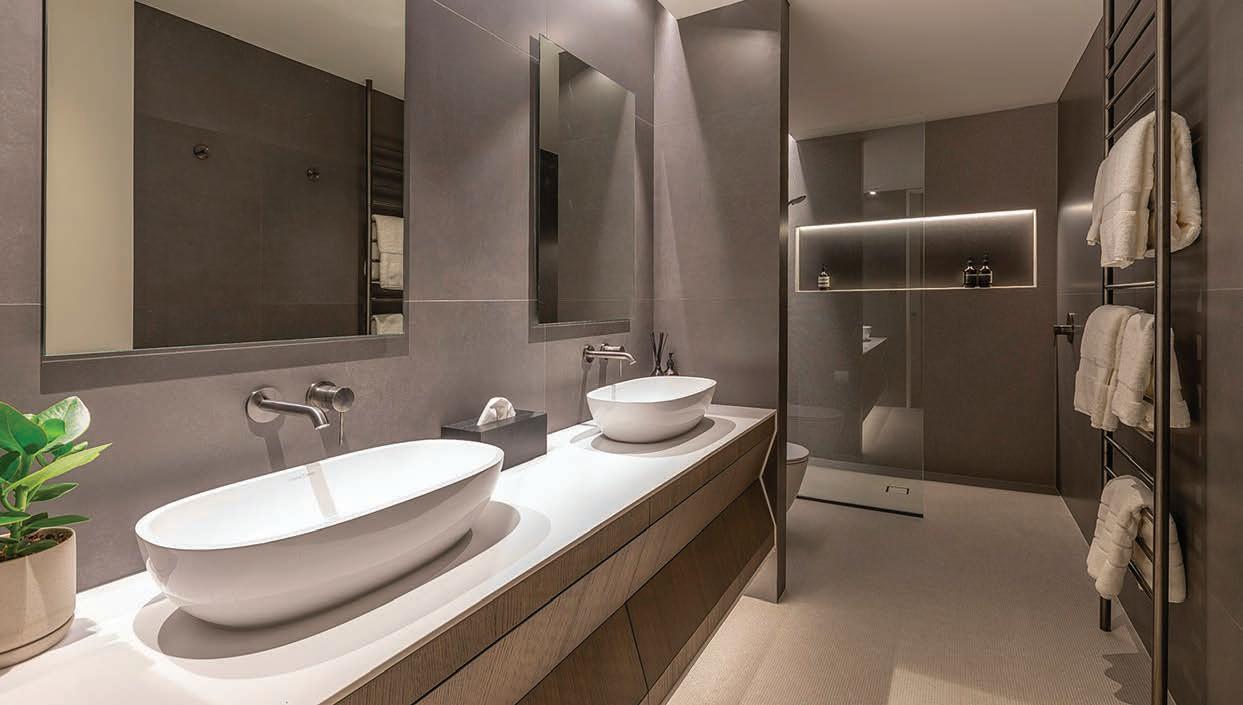
ensure it’s fit for purpose for the clients. Then we’ll add layers of materials to make it right for the look and style the clients want to achieve."
Similarly, new materials and techniques emerge regularly in the industry, from sustainable timber options to advanced joinery methods such as CNC machining and laser cutting. Cabinet makers/joiners keep abreast of these developments, advising designers on what’s possible and helping to push the boundaries of innovation.
“When I’m conceptualising something I intuitively know if it’s achievable,” says Darren. “Anything can be drawn in CAD but ultimately it has to be buildable and it’s always about the client we design for people and places so we’re focused on the outcome."
Conversely, interior designers introduce cabinet makers to emerging trends in finishes, textures, and overall styling, ensuring their craftsmanship remains in line with modern design demands.
“Designers need to specify carefully and be very clear when drawing their plans but be open to suggestions from the cabinet maker,” says Andrew. “Cabinet makers should be adventurous and open to new ideas and new materials consult with the designer and work towards a solution."
By combining these skill sets, projects benefit from both creative ingenuity and technical excellence, resulting in a harmonious fusion of form and function.

Mal says having a technical background and an understanding of how items can be built is a huge advantage when it comes to designing spaces.
“Every time I’m designing, I’m actually building it in my head,” he adds. “It’s so much more than just drawing lines on a page and if there is a stumbling block I have a good chance of being able to solve it."
Tailored Solutions for Client Needs
Every client is unique, with specific preferences, lifestyles, and functional requirements for their spaces. By collaborating, cabinet makers/joiners and interior designers can tailor their creations to meet these individual needs effectively. This customisation extends beyond aesthetics to include ergonomic considerations, storage solutions, and even sustainability preferences.
“Designers should be asking questions of their joiners — how can I make this better? Will this work? How will this function?” Darren advises. “Cabinet makers need to be open minded ask leading questions to understand the design intention and be open to exploring all avenues towards a solution."
Image: Mal Corboy Design
Mal Corboy
Business & Finance
The ability to offer bespoke solutions not only enhances client satisfaction but also sets a benchmark for quality and exclusivity in the industry.
“The benefit of all those years in the trade is the understanding of materials and what they can do and how much they cost,” adds Gavin. “This means we make better use of the budget and we know how to push boundaries when we need to."
Seamless Project Management and Execution
Successful interior design projects require meticulous planning and seamless execution. Collaboration between cabinet makers/joiners and interior designers streamlines this process significantly. Each side brings distinct strengths that contribute to a smoother workflow, ensuring deadlines are met and costly mistakes are avoided.
Mal chooses to work with a small handful of manufacturers with whom he has built a relationship over time. “It’s important to match the project with the manufacturer as everyone has different capabilities,”
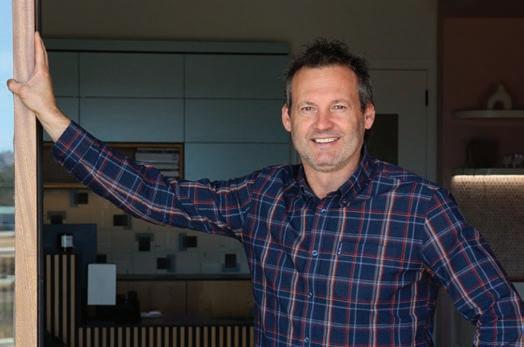
he explains. “And we need to be talking all the time and working to the mutual benefit of the client."
Darren says that it all comes down to trust. “If you want to be able to push the envelope you really have to have the marriage of designer and joiner correct there has to be a synergy,” he says. “And that means making sure everyone on the project is aligned to a common goal or outcome."
Andrew agrees that the benefit of enhanced communication is a smoother and more managed installation process which ultimately benefits the client. “We will have a more efficient industry if everyone understands the products they are using so both designers and cabinet makers should be reaching out to the product suppliers to stay up to date with the latest technical updates,” he says.
The Interior Designer’s Strengths
Concept development and client liaison: Translating a client’s vision into a coherent design plan that aligns with technical feasibility.
Material and finish coordination: Ensuring aesthetic harmony while balancing functionality and durability.
Space planning and integration: Ensuring cabinetry and joinery elements fit seamlessly into the overall design.
Project oversight and communication: Managing timelines and keeping all trades aligned for smooth execution.
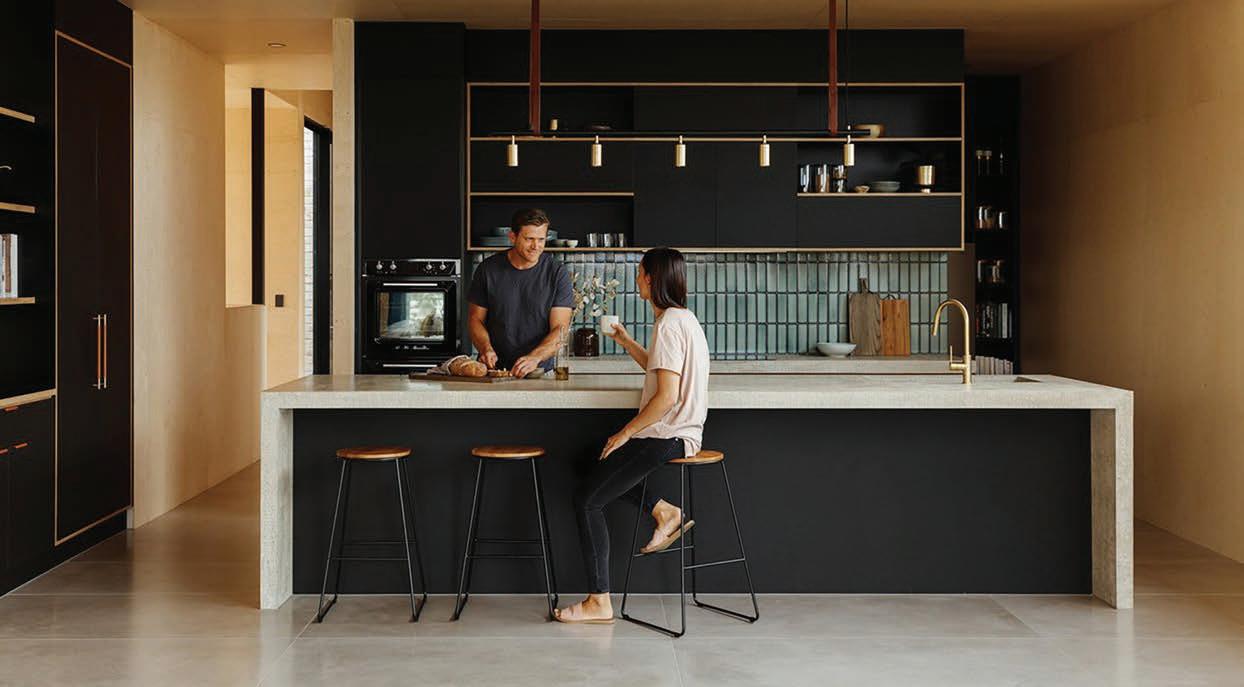
Nathan Wundersitz
Image: SpaceCraft Joinery (Jonathan VDK Photography; Styling by Swell Studios)
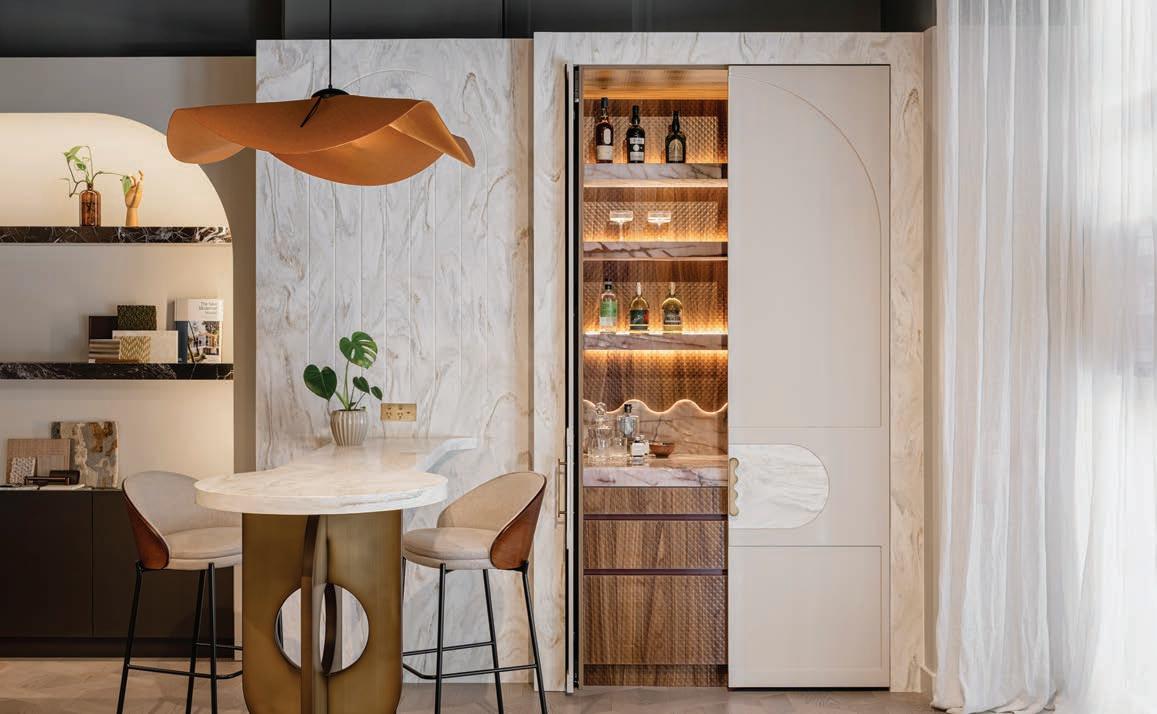
Mal adds that it’s part of his job as a designer to ensure a seamless and smooth process. “I’m working with and talking to the manufacturer all the time through a project, collaborating with them to make sure everyone is going to be happy with the end result."
The Cabinet Maker/Joiner’s Strengths
Precision and craftsmanship: Translating technical drawings into real-world applications.
Structural integrity and engineering know-how: Ensuring furniture and fittings are safe, durable, and practical.
Problem-solving and on-site adjustments: Adapting designs to real-world conditions without compromising quality.
Installation and final touches: Ensuring a flawless finish, from alignments to integrated mechanisms.
Working together on the project avoids costly revisions, prevents miscommunication, and results in a finished space that is both visually stunning and technically sound.
Nathan Wundersitz says his background in cabinet making gives him an intrinsic insight into the element he’s designing. “I can visually see it in my head as I’m designing it,” he says. “I always know if it will work or it won’t and I can usually pick up issues at an early stage and that avoids unwanted issues down the track."
Expertise Exchange and Professional Growth
Collaboration between cabinet makers/joiners and interior designers is a continuous learning experience, benefiting both parties in numerous ways.
“Find people who are like minded,” advises Gavin. “As a designer, understand the complexities of the project and pick your joiner carefully. Joiners should be emboldened to ask questions of their designers and actively be a part of the solution be confident in your own expertise to collaborate on the project."
How Interior Designers Benefit from Collaborating with Cabinet Makers/Joiners
Deeper understanding of craftsmanship: Working with skilled cabinet makers gives designers a richer appreciation for joinery techniques, material characteristics, and finishing processes. This
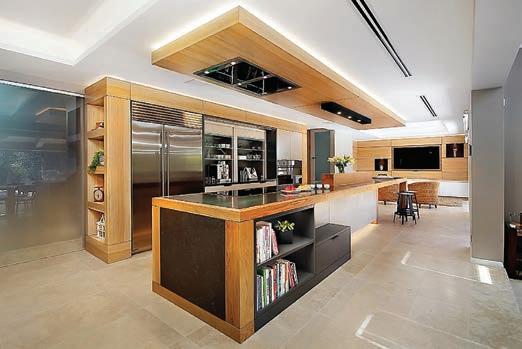
Image: Concepts by Gavin Hepper
Image: Wright Designed
Business & Finance
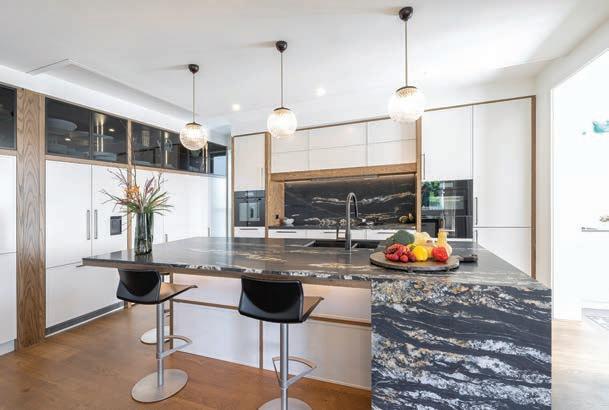
knowledge helps them create more practical and achievable designs.
Innovative material insights: Cabinet makers often work with cutting-edge materials, from engineered timbers to composite panels as well as the latest hardware innovations, and can introduce designers to new possibilities for sustainability, durability, and aesthetic appeal.
Structural feasibility awareness: By collaborating, designers gain a better grasp of weight loads, fixing methods, and construction constraints, allowing them to push boundaries without risking structural failure.
Practical cost considerations: Cabinet makers provide real-world cost implications of different materials and designs, helping designers create stunning interiors while staying respectful of budget constraints.
Problem-solving on site: Seeing how cabinet makers and joiners troubleshoot unexpected challenges gives designers insights into more flexible and adaptable design approaches.
Nathan adds that collaboration puts everyone on the same page and allows each party to contribute their expertise. “Building trust and respecting everyone’s time is important,” he says. “We all come away with a better understanding of the finer details and we can ensure a seamless and smooth transition to the finished product."
How Cabinet Makers/Joiners Benefit from Collaborating with Interior Designers
Exposure to new design trends: Interior designers keep a pulse on emerging trends, from minimalist aesthetics to bold statement pieces, inspiring cabinet makers to expand their style repertoire.
Refined finishing techniques: Working with designers often encourages cabinet makers to refine their finishes, incorporating high-end lacquers, specialty veneers, and detailing techniques that elevate their craft.
Understanding of spatial design and client needs: Exposure to the bigger picture of interior design helps cabinet makers see beyond individual pieces to appreciate how their work integrates into an entire space.
Business growth and market expansion:
Collaborations with designers often lead to more projects, as designers bring cabinet makers into highend residential and commercial jobs. This expands their client base and portfolio.
New business opportunities: Many cabinet makers establish long-term working relationships with designers, leading to repeat work, referrals, and co-branded marketing opportunities.
“It’s really about respect,” says Gavin. “The broader building industry is segmented down into micro specialists and respect should always go both ways. No one is on a higher pedestal than anyone else respect each other’s expertise."
By sharing knowledge and expertise, both cabinet makers/joiners and interior designers elevate their craft, expand their professional capabilities, and ultimately enhance the quality of the interiors they create.
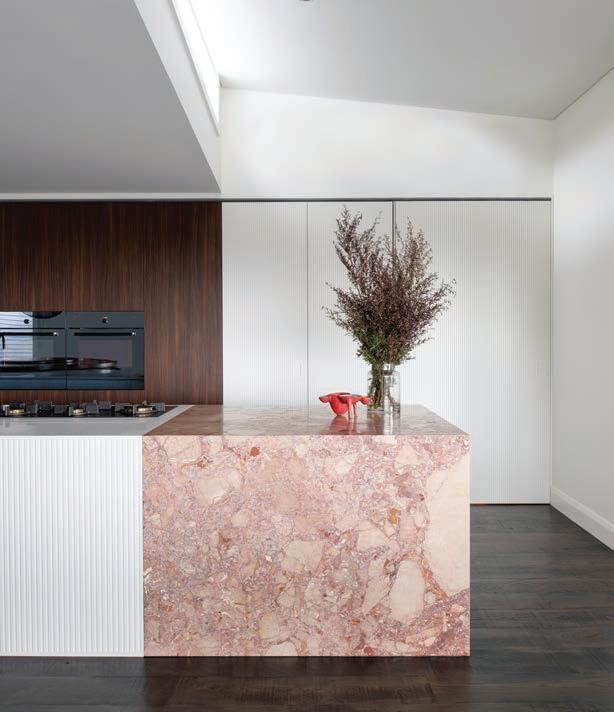
Image: Minosa (Nicole England Photography)
Image: Mal Corboy Design
Nathan says clear communication goes both ways. “Cabinet makers and designers talking in the early stages of any project will ensure the ideas on the table are achievable and practical and we can avoid any costly reworks that might come up,” he adds.
Andrew feels suppliers can play a role in ensuring both sectors are adequately educated on the products available and, most importantly, on their proper application. “There are a lot of technical aspects with some products and new materials are coming out all the time,” he says. “It can be hard to keep up with everything but we won’t see successful application of products unless the designers and manufacturers fully understand how they should be used."
Competitive Advantage in the Market
In a competitive market where differentiation is key, the ability to offer integrated design and craftsmanship solutions provides a distinct competitive advantage. Clients increasingly seek personalised, high-quality interiors that reflect their tastes and lifestyle preferences.
Gavin says that both sectors have an extraordinary amount of knowledge and passion that can be applied for the greater good of the client. “If both parties can be willing to share and collaborate, be open and transparent, and tap into learnings along the way, that will build both portfolios as one,” he says.
“The end result for everyone is a better outcome for the clients, for the joiners and for the designers,” adds Darren. “If there is a synergy between the designer and the joiner that leads to transparency and honesty, and both businesses win through a more professional reputation and increased referrals and leads."
By showcasing a portfolio enriched by collaborative projects, both cabinet makers/joiners and interior designers can position themselves as trusted partners capable of delivering superior outcomes. This reputation not only attracts discerning clients but also strengthens brand credibility and fosters long-term client relationships.
“Pricing and quoting a job is where the relationship can start to unravel so it’s really important that there is a clear understanding of the client’s budget — even if it’s a range — so we can make sure we’re focused on solutions,” says Nathan.
“If you are specifying well and you understand the products you are specifying, plus how they are made
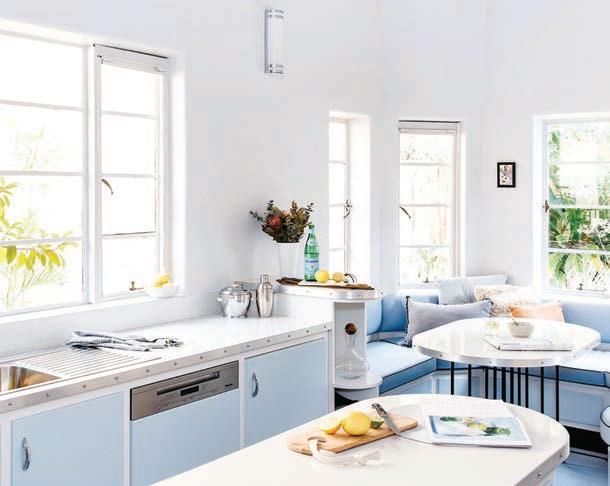
and applied then there are efficiencies through the manufacturing process which can reduce mistakes or costly remakes, leading to cost savings and increased profitability,” adds Andrew.
The collaboration between cabinet makers/ joiners and interior designers transcends traditional boundaries to create synergistic partnerships that elevate the art of interior design. Through enhanced aesthetics, tailored solutions, technical expertise, efficient project management, and continuous professional growth, this partnership not only meets but exceeds client expectations.
“I’ve seen a range of manufacturing premises around the world and the Australian/New Zealand industry is up there with the best,” Mal says. “And that’s thanks to designers stretching what can be done and cabinet makers being open to go there with them."
As the demand for bespoke craftsmanship and personalised interiors continues to rise, embracing collaboration becomes not just a strategy but a cornerstone of success in the dynamic world of interior design and woodworking.
“If you have a good relationship between designer and cabinet maker there is no resistance as all parties have been involved right from the start,” says Nathan. “The long-term impact from this collaboration is a harmonious working relationship that doesn’t step on anyone’s toes."
In essence, when craft meets vision, the possibilities are limitless, and the results are nothing short of extraordinary. ■
Image: SpaceCraft Joinery (Jonathan VDK Photography; Styling by Swell Studios)
The art of business writing for cabinet makers and designers
Words that Work
By Selina Zwolsman

In the world of kitchen design and manufacturing, it’s easy to think that the most essential tools in your belt are your CAD software, your colour samples, or your tape measure. But there’s another tool that quietly shapes your business every single day your words.
Business writing is often overlooked in trades or visually driven industries. However, clear and professional communication can be the difference between a seamless project and a stressful one. It can mean landing a dream client or losing them to someone else. Whether you’re drafting a client email, preparing a proposal, or sending specifications to a supplier, how you write matters.
In this article, we’ll unpack how business writing can enhance your design or cabinetry business, saving you time, elevating your brand, and helping you
create better experiences for your clients, teams, and trade partners.
Why Writing Matters in Manufacturing and Design
Let’s face it — most people don’t enter the cabinet making or design industries because they love paperwork. But writing is everywhere in your business: emails, quotes, design briefs, social media captions, invoices, installation notes, warranty information, award entries and more.
Good writing helps people trust you. It shows you’re organised, detail-oriented, and professional and is especially helpful to clients who may not understand what goes into a build or fitout. If you can explain your process clearly and confidently in writing, you instantly set yourself apart.

Poor communication, on the other hand, creates confusion, and vague instructions can lead to expensive mistakes. Overly technical language can overwhelm a client, and a rushed or sloppy email can make your business look careless.
Strong writing doesn’t mean flowery or corporate, robotic language; it means clarity, empathy, and getting to the point.
Step 1
Know Your Audience — Clients, Suppliers, and Teams
Writing well starts with knowing who you’re writing for. In this industry, you’re often switching between very different types of readers:
Clients
Clients are emotionally invested in their projects, and often unfamiliar with technical jargon. They need reassurance, transparency, and straightforward explanations. They also need to feel included and confident in their decisions.
Suppliers and Trades
These readers are detail-driven and need precision. Use technical terms and straightforward instructions. Where possible, set out your requirements in table format (to keep the details aligned and perfectly clear). Most importantly, avoid ambiguity.
Team Members and Subcontractors
This writing needs to be instructional and time-aware (i.e. get to the point assume the reader has 30 seconds to understand what you want). Use bullet points or numbered lists and clear formatting to avoid misinterpretation.
Adjusting your tone and detail level to suit each audience is a genuine business skill that will pay off with fewer mistakes and better working relationships.
Apply Order and Structure
Step 2
Applying structure to your writing is as essential as having processes for your manufacturing. With a set order, you’ll make sure your written task includes all the important details and is seamless from beginning to end. This is especially important in emails.
Client emails are a daily reality, and they’re often sent on the fly. However, a well-written email can set expectations, correct misinterpretations, and prevent bigger issues down the track.
The Structure of a Clear Email
• Send List: Let’s start with who you’re sending your email to. The ‘to’ field is for people who are directly affected by the contents they’ll need to understand the information, respond to a query or take action. The ‘CC’ (carbon copy) field is for people who simply need to be kept in the loop. It’s more of an ‘FYI’ email. Finally, the ‘BCC’ (blind carbon copy) should be used when you want certain people to receive the message but don’t want other recipients to know. Keep in mind that someone who has been bcc’d in an email may reply to join in the conversation, and this could offend other recipients who were unaware someone was effectively eavesdropping on the conversation. BCC should be used with care.
• Subject Line: To reflect the goal of the email e.g. Response Required: Colour Selections
• Heading: A very brief summary of what your email is about. (Remember, the first line of your email often appears directly under the subject line in your reader’s inbox.)
e.g. Colour Selections: Rubble Project (to be determined by 30 June)

Business & Finance
• Salutation: Friendly but professional.
e.g. Dear Betty (formal) or Hi Betty (less formal) Jumping straight into the body of an email without a basic greeting can come across as abrupt or a little ‘gruff’.
• Body: This is the update, question, or next step.
• Close: This usually depends on the intent of your email — is it formal or less formal/casual?
Formal: if you’ve started your email with a ‘Dear Betty’, you may wish to close your email with ‘Yours sincerely’ (very formal and a little oldschool), ‘Best regards’ or ‘Kind regards’. Or just plain old ‘Regards’ for a neutral and professional option.
Less Formal/Casual: if your greeting was of the ‘Hi Betty’ kind, you can close your email with the very popular ‘Cheers’ or ‘Warm regards’.
Step 3
Proofread Your Writing
Always, always, always proofread what you’ve written before you hit send. Use tools such as Grammarly to help with spelling and structure, and use your computer’s text-to-speech function to hear your words read aloud. If you’re a fan of ChatGPT, check technical references and ask for sources AI has a tendency to fabricate facts.
Strong business writing doesn’t mean sounding like a corporate robot — it means being clear, consistent, and kind in how you communicate. In our industry, well-worded writing can help you:
• Win more clients
• Avoid costly mistakes
• Build trust across every touchpoint

Remember, you don’t need to be a writer to write well. You just need to consider your reader, be mindful of your mission (what you hope to achieve) and be willing to improve.
Challenge: Select an email or document you’ve recently sent and quickly rewrite it using the tips above. A small adjustment in how you communicate can result in significant shifts in how your business is perceived and how smoothly your projects run.
Our Most Important Writing: Estimates, Quotes and Fee Proposals
An estimate, quote, or fee proposal is often the first document we share with new clients and is potentially the most important. This piece of writing could be the foundation of a significant business relationship, so it is essential to get it right.
While the terms estimate, quote, and proposal are often used interchangeably, they have important technical differences. Understanding these terms is valuable for establishing or refining your business processes. Regardless of what you call it, this document may serve as your initial point of professional contact with a potential client, so you will want to make a positive impression.
Estimates
An estimate can be viewed as a ballpark figure. As the name suggests, it’s simply an ‘estimation’ of how much a job will cost. Do you have limited information about the scope of work needed for a new project? Are you uncertain about the client’s commitment to moving forward with the job? In both cases, an estimate may serve as a practical way to avoid wasting time for both you and the client. Your estimate might outline a defined scope of work and allow for extras or upgrades to accommodate the extended scope. Alternatively, it could provide a range of fees to address various scenarios. Always clarify that your submission is merely an estimate and may be subject to change.
Quotations
While not always legally binding, a quotation is often seen as a more accurate representation of the costs associated with your services than an estimate. Quotes are ideal for easily quantifiable projects with few variables; if you have a clearly defined scope of work, a quote may be your best option. Since the cost of your services or related products can increase, be sure to include an expiry date for any quoted work.
(For instance, a quote issued in June this year might be inaccurate by next January, so ensure your quote isn’t open-ended.)
Fee Proposals
If you suspect you’re competing with others, consider preparing a structured and detailed proposal. A proposal might include a quotation or estimate, along with comprehensive information about the project and the services you provide. Your proposal should feature a work schedule, indicating how long you’ll need for the different stages of the project. If your schedule includes any assumptions — such as receiving prompt responses from your client — you’ll want to ensure this is clearly communicated. Additionally, if your project timeline relies on a specific start date, ensure your client understands precisely when you’ll need an official ‘go-ahead’ to secure the time frame.
Regardless of the option you present to your client, it’s essential to include the following in quotes, proposals, and any subsequent contracts:
• Business details: Providing your A.B.N. and contact information is a legal requirement.
• Costs: Detail the specifics of your services and outline inclusions and exclusions. If your business is registered for GST, you cannot exclude this tax from your estimate, quote or fee proposal. Business-toconsumer (B2C) prices must include GST.
• Variations: Explain how different scenarios or variations may influence the price and how they will be addressed contractually.
• Payment terms and conditions: Specify when you will require payments and the terms under which you operate (e.g., seven-day payment terms).
• Quote expiry date: Clearly note the date by which the quotation must be accepted,
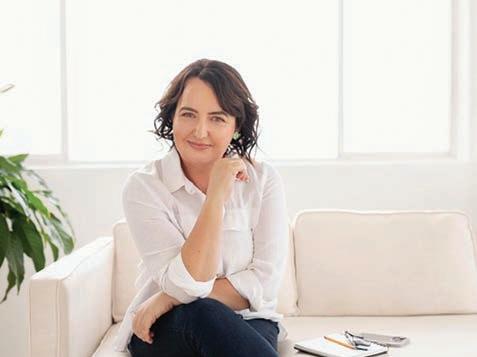

especially if you need advance notice to fit the project into your schedule.
• Payment methods: Specify your preferred payment method if you require a deposit upon acceptance of the quotation.
• Customer acceptance signature: Include a ‘sign here’ statement to confirm the agreement.
Words may not build cabinets or install kitchens, but they do build trust, clarity, and confidence, and these are the foundations of any successful project. Whether you’re briefing a supplier, sharing instructions with your team or preparing a proposal for a new client, taking the time to communicate clearly is an investment in your business. Like any skill, good writing becomes easier (and better) with practice. So keep refining your words; they might become one of your kit’s most powerful tools. ■
Selina Zwolsman CKD Au, CBD Au is a qualified interior designer and experienced writer specialising in design and building-related content. She produces technical and editorial content for industry and training organisations, and assists small to medium business owners with web and media copy, email marketing campaigns and more. Selina has shared many design-related presentations with trade and consumer audiences and loves to promote the work of Australia’s best designers and manufacturers. Contact Selina via her website at nicelysaid.com.au.
Know Your Numbers
The five financial foundations every business owner should master
By Ben Fewtrell
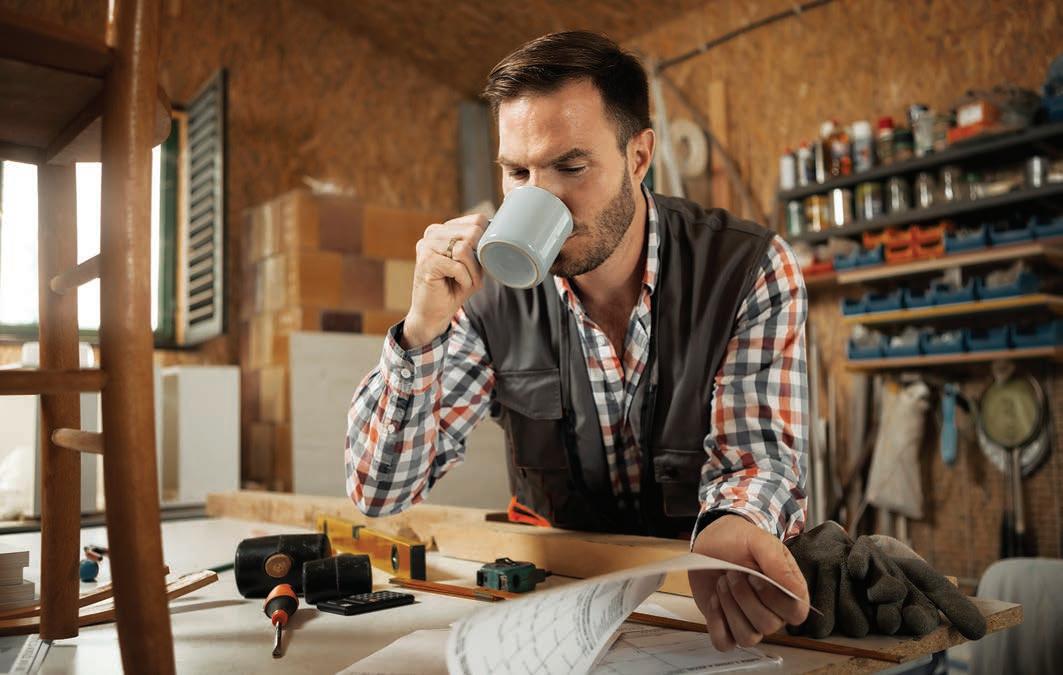
Running a business without knowing your numbers is like building a kitchen without a plan. You might get the job done, but chances are you’ll waste time, money and materials, and possibly end up redoing things down the track.
The good news is, you don’t need to be an accountant to stay in control of your business finances. With a few simple tools and a shift in mindset, you can take charge of your numbers and make faster, smarter decisions.
This article covers the five most important financial foundations every business owner should understand. Master these and you’ll build a stronger, more sustainable business.
1. Budgeting — Build Your Profit In, Don’t Hope for It
Most business owners treat profit like leftovers. They pay the bills, cover wages, buy materials, and if there’s anything left in the bank, that’s their “profit.” But that’s a risky and reactive way to run a business. Profit should be planned for, not hoped for.
The better approach is to budget for profit up front. That means deciding how much profit you want to
earn, ideally as a percentage of sales, and then building your budget around that number.
For example, if your target is a 10 per cent net profit margin, then for every $100 in sales, $10 should be left over as profit. You then work backwards: What are your fixed costs? What’s your cost of goods sold? What gross profit margin do you need to hit your profit goal?
Your budget should cover:
• Sales (realistic based on past performance)
• Cost of Goods Sold (COGS): direct materials, subcontractors, and production labour
• Fixed Expenses: wages, rent, insurance, power, subscriptions
• Net Profit: what you want to keep after everything is paid
Tip: There are only three ways to improve your net profit, and your budget helps you spot where to focus:
• Increase sales
• Improve your gross profit margin (e.g. by increasing prices or selling highermargin services)
• Reduce your fixed or operating expenses
Budgeting isn’t about restriction. It’s about control. It gives you a framework to make confident decisions all month long.
2. Break-Even — The Exact Point Where Profit Begins
Most people think of break-even as the point where sales equal expenses. That’s technically true, but the real value of knowing your break-even point is this: it tells you exactly when you start making money.
Knowing your break-even helps you plan your sales targets with precision. Once you pass that point, whether it’s a certain number of units, days worked or dollars earned, every additional sale brings in profit (after covering variable costs).
The mistake many business owners make is guessing their break-even or calculating it incorrectly. A common error is putting expenses in the wrong category — for example, including fixed costs in cost of sales or vice versa. This gives you a false break-even figure and can lead to undercharging or chasing the wrong sales targets.
To get it right, you need to understand the difference between:
• Fixed Costs: rent, salaries, insurance, admin overheads
• Variable Costs (COGS): materials, casual wages, freight, production costs
A simple formula to calculate break-even sales is: Break-Even Sales = Total Fixed Costs ÷ Gross Profit Margin (%).


Once you know your break-even, break it down further. How many jobs do you need per month or week to cover your costs? What does that look like in terms of units or sales value? This turns vague targets into clear, actionable goals.
3. Cash Flow — Your Business Fuel Gauge
If profit is the reward, cash is the fuel that keeps your business running. And just like a car, if the fuel runs out, everything stops, no matter how profitable the trip might have been.
That’s why cash flow forecasting is essential. Think of it as your business’s fuel gauge. When you can see in advance that you’re getting low, you’ve got time to do something about it — whether that’s chasing overdue invoices, delaying a purchase, or bringing in extra work.
A 90-day rolling cash flow forecast gives you a forward view of:
• What’s coming in: customer payments, grants, loans
• What’s going out: wages, rent, materials, tax
• Where any shortfalls may occur
Many business owners rely on their bank balance to tell them how they’re doing. But the balance today doesn’t show what’s coming tomorrow. A forecast helps you look ahead.
This doesn’t need to be complicated. A simple spreadsheet or accounting software can help you build and maintain your forecast. And once you get into the rhythm of updating it regularly, it becomes one of your most powerful planning tools.
Business & Finance

4. Cash Gap — The Hidden Danger Between Paying and Getting Paid
You’ve paid for your materials, paid your team and completed the work. Now you’re waiting to get paid.
That waiting period is your cash gap, and it can be a major threat to your business’s financial health, even if you’re profitable on paper. The cash gap is the time between when money goes out and when money comes in. The longer the gap, the more you need to fund that difference from your own reserves, overdraft or credit.
In businesses with long job cycles or payment terms, the cash gap can quickly become a problem. Fortunately, there are ways to shorten it.
Here’s how:
• Take a legal, fair deposit. In many states, you’re limited by law to a 10 per cent deposit for residential projects. But even that can help offset initial costs.
• Use progress payments. Don’t wait until the end of a job to issue an invoice. Instead, break the job into stages and invoice along the way.
• Invoice promptly. The sooner you invoice, the sooner you can get paid.
• Negotiate supplier terms. Try to align your outgoings with your expected incoming cash to ease the gap.
• Tracking your average “Debtor Days” (how long it takes to get paid) will help you see if your gap is growing and where you need to tighten up.
5. Profit & Loss — More Than a Tax Tool, It’s Your Monthly Report Card
Most business owners have a Profit & Loss (P&L) statement, but it’s often used just for tax time or when the bank asks for it. That’s a missed opportunity.
Your P&L should be a monthly tool you review by the 10th of the following month. With cloud accounting software, there’s no reason you can’t have up-todate, reconciled figures on time.
Once you’ve got the numbers, compare them to your budget. If your sales were lower than expected or your expenses blew out in a particular area, this is your chance to investigate and adjust for next month.
Your P&L should also be set up in a way that makes sense to you, not just your accountant. That might mean reworking your chart of accounts so income and expenses are grouped in ways that reflect how you think about your business. Avoid vague categories such as “miscellaneous” or “sundry.” They don’t help you understand where your money is going.
Used properly, your P&L becomes a monthly review tool that helps you stay accountable, spot problems early and fine-tune your business strategy.
Know Your Numbers — Monthly Checklist
Use this checklist each month to stay in control of your business finances:
Budgeting for Profit
❑ Have I set a clear monthly profit target?
❑ Is my budget built around that target?
❑ Am I reviewing actual vs budget figures each month?
Break-Even Clarity
❑ Do I know the exact point where I start making a profit?
❑ Have I correctly separated fixed and variable costs?
❑ Can I express break-even in units, days or dollars?
Cash Flow Forecasting
❑ Do I have a 90-day cash flow forecast?
❑ Am I updating it weekly?
❑ Do I check it before making major spending decisions?
Managing the Cash Gap
❑ Do I know how long it takes to get paid (Debtor Days)?
❑ Am I using fair deposits and staged payments where possible?
❑ Are my supplier and customer terms aligned?
Using My P&L
❑ Is my P&L reconciled and ready by the 10th?
❑ Do I compare it to my budget every month?
❑ Is it structured in a way that’s meaningful to me?
Know your numbers. Own your decisions. Grow your business. ■
Ben Fewtrell is the co-founder and managing partner at MaxMyProfit. With more than 20 years of experience in business growth, Ben is also the co-creator of the “Business Exceleration™ Blueprint” and co-hosts the Max Your Business Podcast. He’s known for his dynamic presentations and effective business coaching, helping companies boost their sales and efficiency.
Max My Profit maxmyprofit.com.au/

Business Branding
Your brand is the heart of your business, but is it driving business growth?
By Pam Kershaw

When people think of a brand, a logo usually springs to mind the Apple icon, the Nike swoosh, the Mercedes three-pointed star.
But behind every great logo is a branding strategy that differentiates the business and communicates its value to customers.
“Branding is not just about visibility, it’s about building recognition, trust and a competitive edge in the market,” says Liza Jane Smith, founder and creative director of Monava Design and Connect magazine’s art director.
“It’s the perception clients and customers form when they encounter the business name, products or services. It’s what transforms a business from just another service provider into a recognised name in the industry.
“A strong brand creates credibility, making potential clients feel confident in their choice even before they see the finished work. With a well-defined brand, a small business can position itself as an expert in its field, attract valued clients and build long-term
relationships rather than competing on price alone,” she says.
Helen Watts, director and art director of Watts Design, says strong branding can make even the smallest start-up look well-established.
“I’ve had businesses that are one-man bands come to us. Because we’ve made them look the part from day one, they already appear like an established business and are getting work well beyond their expectations,” she adds.
Both designers agree that amateur-looking logos and brands rarely connect with customers.
“The market is flooded with cheap designers and budget branding options that promise a quick fix but lack the strategic expertise needed to build a strong, lasting brand,” Liza Jane says. “A true brand specialist does more than create a logo — they craft an identity that positions a business for long-term success."
Every customer touchpoint — business cards, website, social media, brochures, letterheads for quotes, presentation folders, signage on buildings,
work vehicles and employee uniforms should reinforce the same quality and professionalism. Consistency is key.
The Brand Development Process
At Watts Design, branding starts with a client factfinding session. The designers need to understand the business and its customers, the company’s longterm goals and if the intention is to sell the business in the future.
“This helps clients see their business from another perspective because things arise in that session which they realise they haven’t tackled,” Helen says. “They can rectify things that might prevent them from connecting effectively with the customer."
The process also addresses problems or challenges in their sector, a competitor analysis, the global market if relevant and the business’s point of difference. If there’s no point of difference, Watts Design will create one.
For example, a rural kit home company offered generic Federation-style designs that lacked a defining feature. Watts suggested adding an indoor/ outdoor fireplace and built a brand around the strapline “Home is where the hearth is."
“We designed the company’s stand for a home expo around this feature, and a large number of customers signed up,” Helen says.
In another case, a solo furniture maker needed materials for an expo. Watts developed the brand Mood Furniture around how his individually crafted furniture affected a room’s mood and feel. The strapline was “Contemporary Concept Furniture”.
The branding used a colour palette based on timber tones, with a beautiful catalogue, website and stationery range.
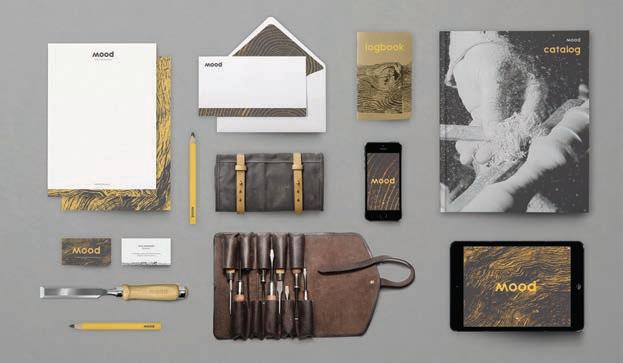
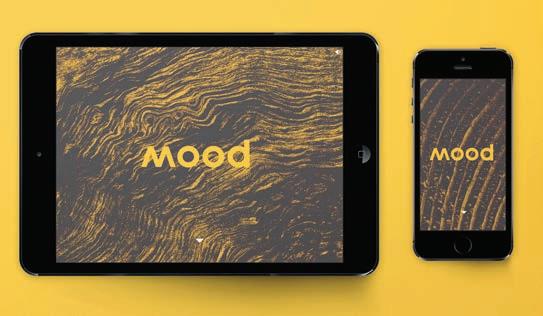
The client called up after the expo and said he’d won an agent to represent him after this single business contact. “I cannot believe that everyone thinks I’m massive and they love my branding. I’ve picked up so much work,” he says.

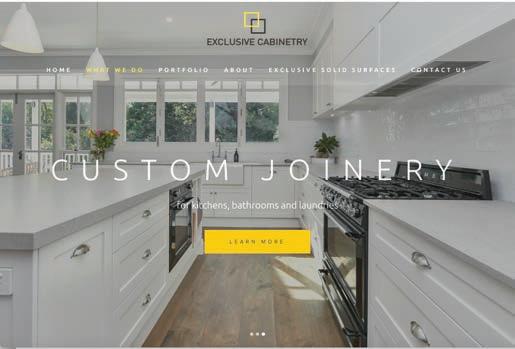
Liza Jane was involved in the rebranding of Exclusive Cabinetry, a company founded in 2014 and specialising in high-end cabinetry for kitchens, bathrooms and interiors.
“The goal of this branding project was to create a visual identity that reflected the company’s craftsmanship, professionalism and contemporary aesthetic,” she says.
The clean logo design had a minimalist aesthetic, with mustard yellow and dark grey providing a contemporary feel, strong visual contrast and good
image credit: Watts Design
image credit: Watts Design
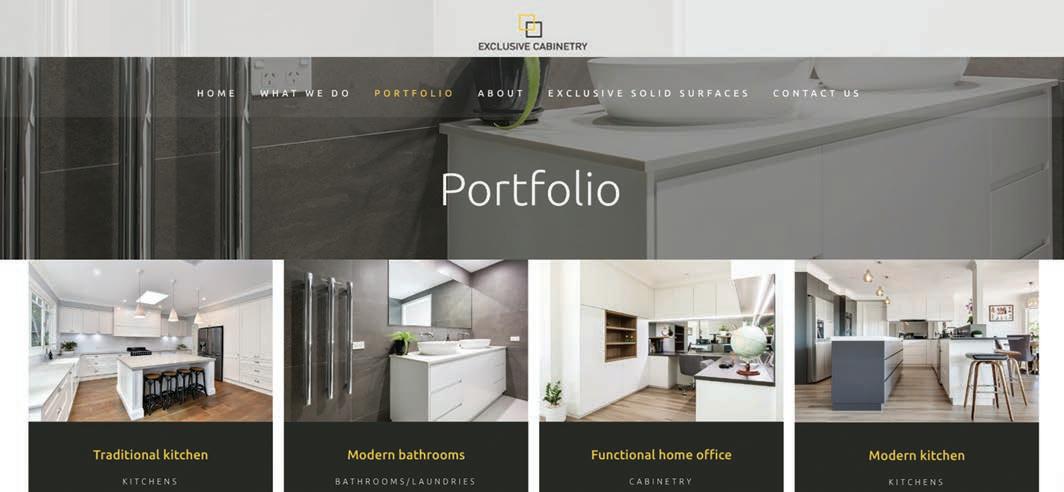
brand recognition. The new, highly functional website layout included:
• Intuitive user interface
• Premium product images
• Easy navigation and prominent call-to-action buttons to encourage engagement
• A balance of white space and structured content
“The rebranding resonated strongly with existing and prospective clients, contributing to a noticeable increase in enquiries and new business opportunities.
“It helped open doors to new contacts who were unaware of the company’s capabilities, marking a clear step forward in the business’s growth and market presence,” she adds.
Liza Jane is offering Connect readers 25% off a corporate identity design package — ideal for launching or refreshing your brand this Winter. Email liza@monava.com.au for details.
Consistency is Crucial
Once a brand has been developed, consistency is crucial.
A branding style guide shows how the corporate colours and specific fonts should be used. It may include a style guide for social media, the tone of voice and specific wording for promotional materials and the dialogue for salespeople.
Helen cautions clients against straying from this consistent identity: “Even when they have all the tools for social media, we sometimes find they fall back into the trap of creating their own content. It looks amateurish, it’s not in line with the language we’ve created."
“Language is a huge part. It’s the emotion people can buy into, it’s where you gain trust. It’s where you can pre-empt the concerns they may have, show them you’re concerned about them and how they’re going to benefit from your product,” she adds. “Clients need to stay with the look, the colours and the dialogue because that’s the brand, that’s how they are perceived.”
Now Let’s Get Social
Social media is one of the most effective — and affordable — ways to build trust, showcase your work and reinforce your brand. Yet many small businesses struggle to use it well, says Emily Cooke, Head of Strategy at social media specialists Brandshake.
“Many don’t have the time, strategy or confidence to do it well,” she says. Common mistakes include:
• No strategy: posting randomly without a clear plan
• Content paralysis: not knowing the audience or what to say
• Overthinking: waiting for the perfect photo
• Lack of time: social media becomes an afterthought
• Focusing only on followers: not realising your next client may be watching
Emily recommends starting with a clear strategy; ask yourself these questions:
• Who are you trying to reach? (Homeowners, designers, builders?)
• What do they care about? (Style, function, timelines, trust?)
• What sets you apart?
• What are the most common FAQs from customers?
• What are the industry stereotypes you want to challenge?
• Do you have stories, testimonials or awards to share?
Choosing the Right Platform
Use demographic data (search “social media demographics”) to find out where your audience is.
Then focus on one or two platforms:
• Instagram: non-negotiable for visual businesses. Use Stories to show work in progress, Reels to show process videos, and your grid to showcase finished work.
• Facebook: still highly relevant, especially Facebook groups for local businesses and referrals.
• LinkedIn: ideal for interior designers or manufacturing businesses building B2B connections.
• Pinterest: for high-end, visual work targeting renovators and new home builders.
• TikTok: increasingly relevant — it’s not just a Gen Z playground anymore.
Brandshake offers downloadable strategy templates and a content framework at brandshake.com.au.
Use code ACFA25 for 25% off.
Essential Tools For Great Content
You’ll need:
• Good photography
• Compelling copy
• Client testimonials
• A content plan to efficiently produce batches of posts
Brandshake recommends posting at least twice a week, ideally three to five times. Tip: use Stories on Instagram to stay top-of-mind without needing polished content.
“Don’t obsess over likes — focus on what leads to business,” Emily says. Track metrics including:
• Profile views
• Link clicks
• Enquiries mentioning social media
• Saved/shared posts
• Replies to Stories
If you’re getting visibility, traffic and leads, it’s all working. If not, tweak your content type, format or message.
Business & Finance
Google reviews are powerful — prompt happy clients to leave one. A quick end-of-project survey can also generate website and social media testimonials if you ask questions about the quality of craftsmanship and materials, service delivery, ontime completion, etc.
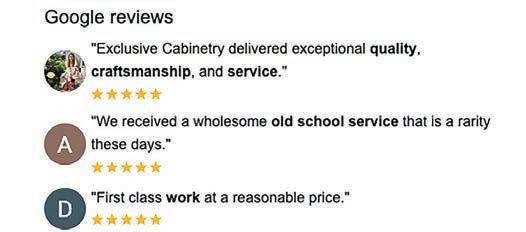
Are Your Posts Performing?
“Consistency and showing up on social media matter more than single results and performance,” Emily says. “We want content sitting on your profiles ready for when people have had a recommendation to work with your business and are in the research and validation phase."
Tracking performance can show that your posts are working, as these real-life examples from Brandshake reports show:
Searches: eg up 575 per cent in the last seven days. This indicates people are thinking about you and have entered the 'consideration' phase. Your awareness-level marketing is working and people are moving down the sales funnel.
Impressions: eg up 12.3 per cent month to month — so more people saw your content than in the previous month. Are you being more consistent? Are you doing community engagement and outreach, where you like and comment on other people’s content? Are you posting higher-quality content that gets better engagement and is shown to more people?
Engagement rates: eg 9 per cent this month compared to an average of 2.4 per cent on LinkedIn. Indicates high-quality engagement from likes, comments, shares, saves or interaction with your content. Valuable, relatable, inspirational and entertaining content encourages higher engagement.
Is your brand on track to perform well and support your business? If not, it might be time for a brand audit and reset to drive business growth. ■
Brothers at Work
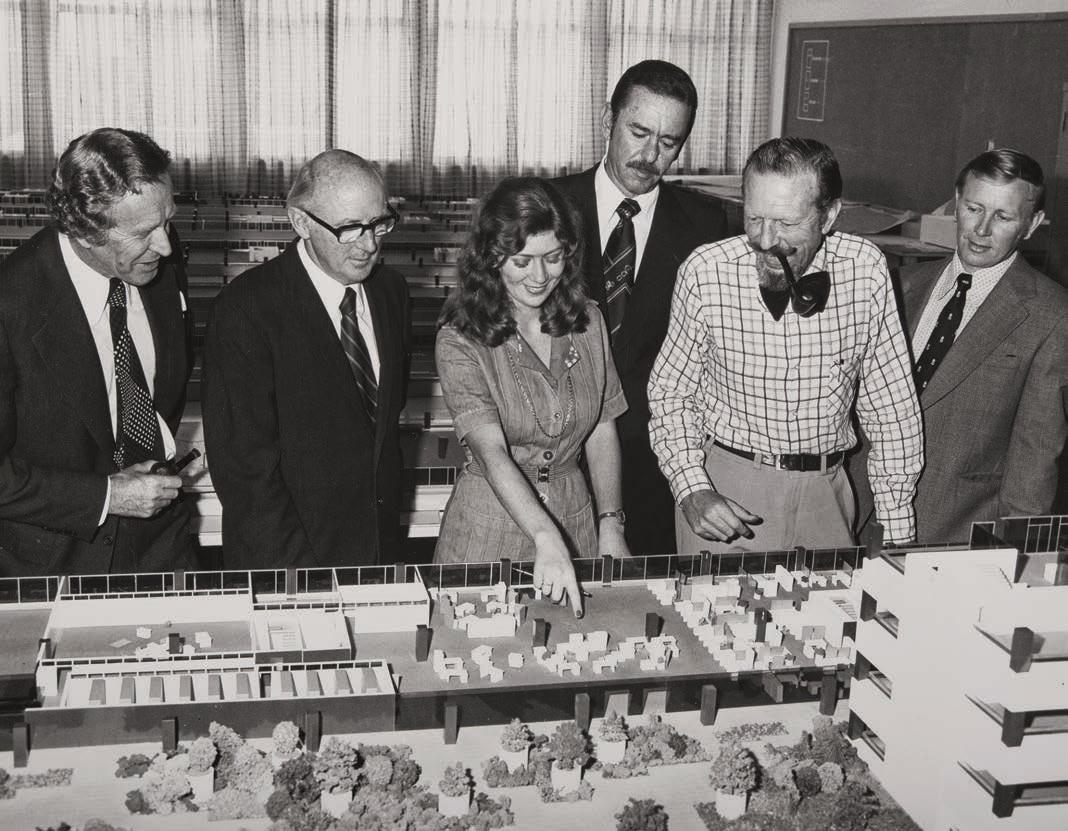
When brothers Colin and Steve Krost immigrated to Australia, they found that their family’s expertise and passion for designing and making office furniture had “stuck”
By Rob Ditessa
In 1989 the Krost brothers established Krost Business Furniture, totally independent from the Krost business back in South Africa, recounts Gareth Krost. He is one of Colin’s sons, and a director of the business that is headquartered in Sydney’s Mascot, with a staff of 95.
“Over the years, Krost has evolved from supplying traditional steel office furniture to designing and manufacturing products that meet the needs of a modern workplace. A shift towards locally made furniture, multifunctional designs, and solutions, that promote employee wellbeing has driven the innovations in our product range,” says Gareth.
Their success in staying profitable and relevant in an era of competition from cheap flat-pack furniture, he tells Connect, comes from maintaining a competitive edge by prioritising quality, service, adaptability, and complying with industry standards. Many products carry five- or 10-year warranties, and certifications such as AFRDI Blue, AFRDI Green, and GECA.
“We want clients to see Krost as an investment rather than a disposable purchase. We provide commercial-grade, fully assembled furniture that delivers a high return on investment by lasting longer, performs better, and that reduces the need for frequent replacements,” says Gareth. He adds that to eliminate a client’s costs associated with selfassembly, Krost offers an end-to-end “white glove” service where all products arrive fully assembled, and are installed into position, ready for immediate use.
He continues, “Our turnkey service is a core part of our business. We provide clients with a seamless service that includes consultation, design support, manufacturing, delivery, installation, and post-
Krost Family. Image supplied by Krost
installation care. It has become one of our key differentiators in the market. The demand for comprehensive project management continues to grow because businesses are looking for hassle-free, time-efficient, streamlined fit-outs. Our clients value our ability to coordinate with other trades and handle complex jobs."
He lists customisation supported by local manufacturing as another success factor. “In our state-of-the-art manufacturing facility, we can produce customised workstations, storage, and joinery, using high-quality, locally sourced materials. This guarantees that a client can achieve a bespoke look, and a tailored fit, without any compromise on lead times,” he says.
Maintaining that competitive edge requires a proactive approach to the business, stresses Gareth. “We don’t wait for the market to dictate change. We anticipate it. One of our key insights is the importance of operational agility. By investing in advanced manufacturing equipment and technology, and optimising our processes, we have significantly increased our capability to complete complex projects with short lead times. Our ability to efficiently scale up production has allowed us to win large
commercial projects where speed and precision are simply non-negotiable."
Decisions are “data-driven”. Through “real-time analytics and process automation”, Krost continuously refines operations, identifying areas for improvement in scheduling of production, use of material, and in logistics, “to maximise efficiency while maintaining high standards of quality."
But success does not come without facing then overcoming challenges.
One of the biggest challenges comes from disruptions in the supply chain, such as the ones in recent years when global logistics issues reduced availability of many materials and upset lead times across all industries, he says. With the strong relationships Krost has always fostered with suppliers, by surging local production, holding larger stock levels of key materials and components, and with a strategy of proactive stock management, Krost was able “to mitigate delays and maintain our industrybest lead times even during uncertain periods,” explains Gareth.
An ongoing challenge is balancing efficiency with customisation. “We have to retain the ability to offer
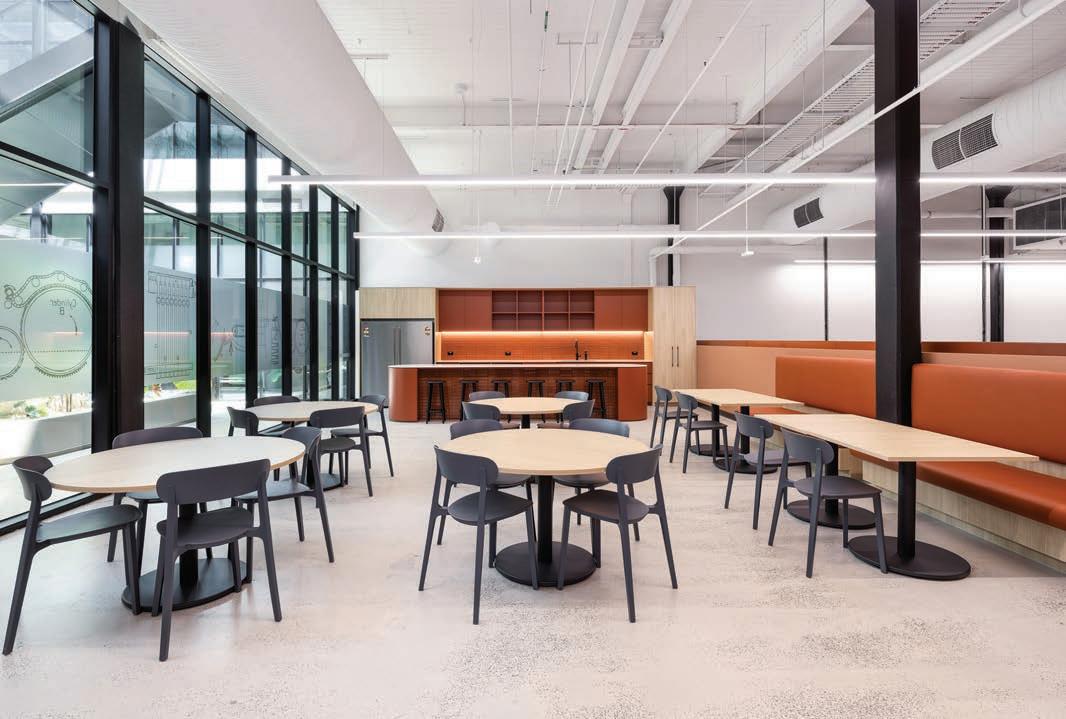
Yarra Falls Project — 452 Johnson St Photographer — Pixel Collective
Business & Finance

custom pieces at scale and at the same time remain cost-effective and efficient. To achieve this, we have invested in advanced manufacturing technology and software,” he points out.
Additionally, the shift to working from home, and the challenge of bringing people back into the office, has required a rethinking of workplace design. Businesses are now looking to create warmer, more inviting spaces that feel like an extension of home, leading to the rise of resimercial-style furniture, he explains. “We have responded by developing designs that prioritise comfort, use soft materials, and adaptable layouts, to make sure that offices remain attractive and engaging environments where employees will want to work,” he says.
Gareth sums up that these challenges have driven growth and innovation, underlain by a commitment to staff and technological development.
“We are committed to fostering a culture of learning, innovation, and professional growth,” he says. He details how the team regularly participates in certified training and professional development programs, and how they support employees to take
on specialist courses in manufacturing techniques, CAD software, project management, and workplace design. Through in-house mentoring and training, employees gain hands-on experience in different aspects of the business.
Krost contributes to the progress of the industry, says Gareth, by offering internships, and work placements for university students, to provide realworld experience in furniture manufacturing, design, and business operations. “We support apprenticeship programs, particularly in manufacturing, cabinetry, and upholstery, offering practical training and career pathways for young professionals entering the industry,” he adds.
Innovation has driven the way that Krost works, its manufacturing methods, product design, and operations, he continues. He describes how the manufacturing plant with its multi-million-dollar German-engineered equipment “has enabled us to refine our production processes to ensure consistency, accuracy, and the ability to create intricate design details that meet evolving workplace demands,” Gareth says.
Gareth is especially proud of the Remi and Casali ranges, which, he says, showcase how Krost integrated materials and methods to create a distinctive collection of tables and reception counters that are durable and elegant. He talks about the
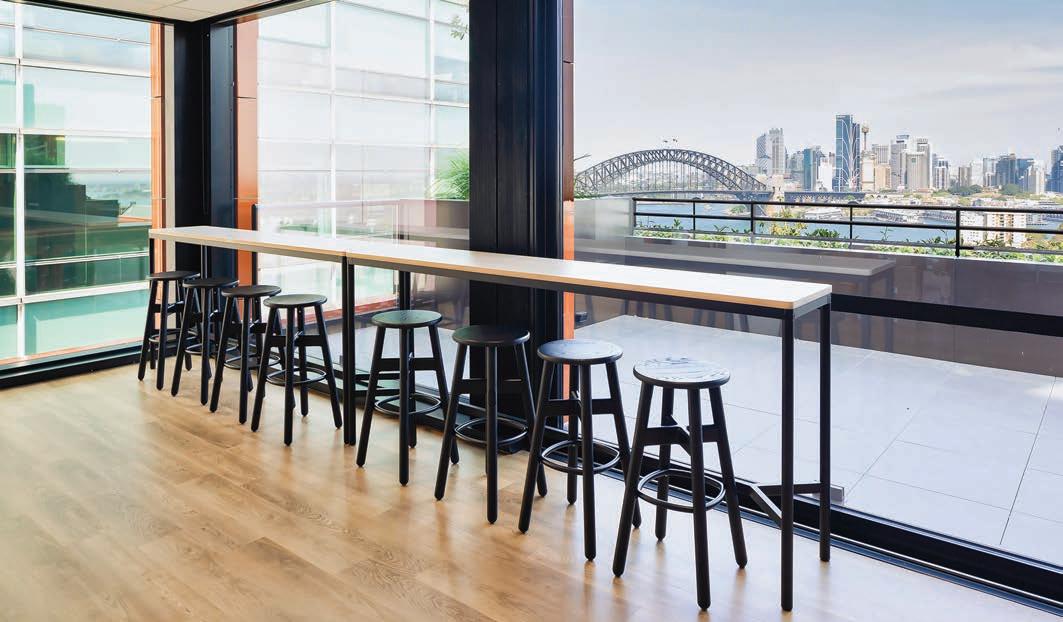
North Sydney Project — Equifax Photographer — Phu Tang
Gareth Krost Image supplied by Krost
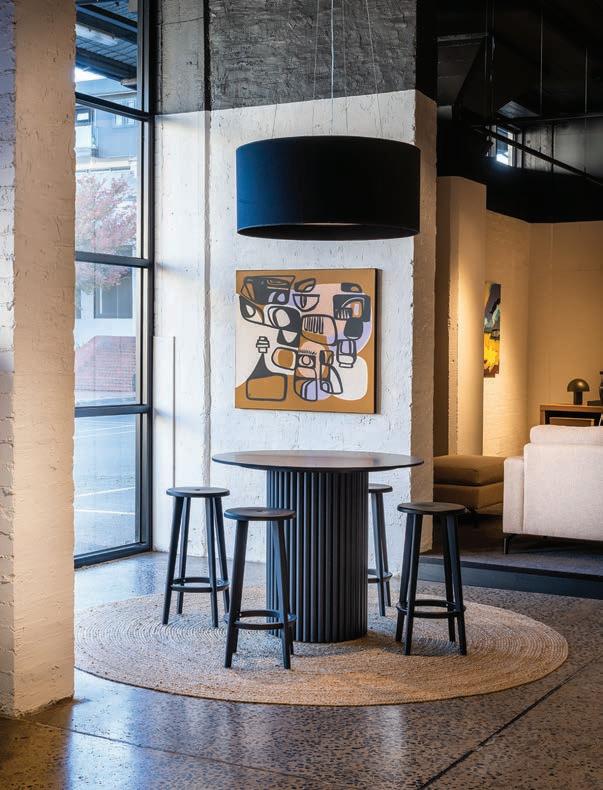
expanding range of height-adjustable products that cater for diverse working styles, and the latest addition to the range, two new height-adjustable workstations for collaborative work environments.
He says Krost wants employees “to customise their own work environment and promote movement to enhance workplace wellbeing”.
In the factory, among all the machinery and equipment Gareth specifically points out the recently upgraded edge banding machines which use laser edging technology, Edgetape, for “seamless, gluefree edge bonding for improved durability and aesthetics”, and the automated storage system that uses a “Kardex Remstar XP Vertical Lift Module, optimising material storage and retrieval for increased efficiency”. He adds, “We have integrated 3D CAD/ CAM software into our workflow. This allows us to design model digitally to generate machine-ready files that guarantee precise execution and minimal waste. With our advanced integrated management system, we can maintain rigorous quality assurance checks at every stage, from material inspection to final finishing."
He continues, “Beyond manufacturing, our customised ERP software has transformed the way we design, quote, and produce furniture. Our system optimises everything in the entire workflow, from order to final installation. It assures us seamless project management. And, our integration of manufacturing CAD/CAM applications for custom joinery design allows us to rapidly create prototypes, and refine products."
In the beginning the Krost brothers, Gareth points out, worked without their own manufacturing plant, instead partnering with existing local factories across Sydney to produce veneer products, partition screens, and other office furniture. As the business grew and industry trends changed, Krost recognised a shift towards more sustainable and cost-effective production methods, and that due to its cost, problems with durability and availability, the use of veneer was becoming less viable. Krost invested in its own manufacturing facilities around 2017 and moved to laminate-based production.
“This move marked a pivotal moment for Krost. It let them control quality, improve efficiency, and scale production. They could streamline operations,
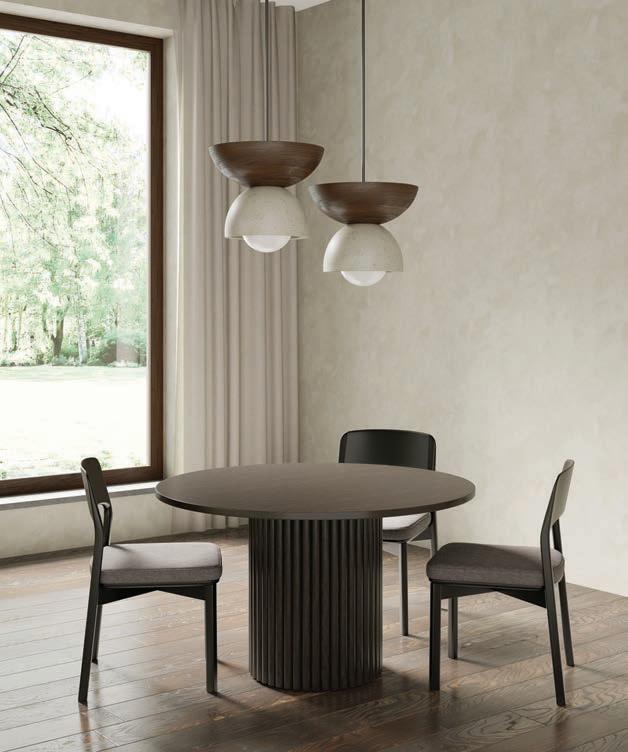
Remi Table Image supplied by Krost
Image supplied by Krost
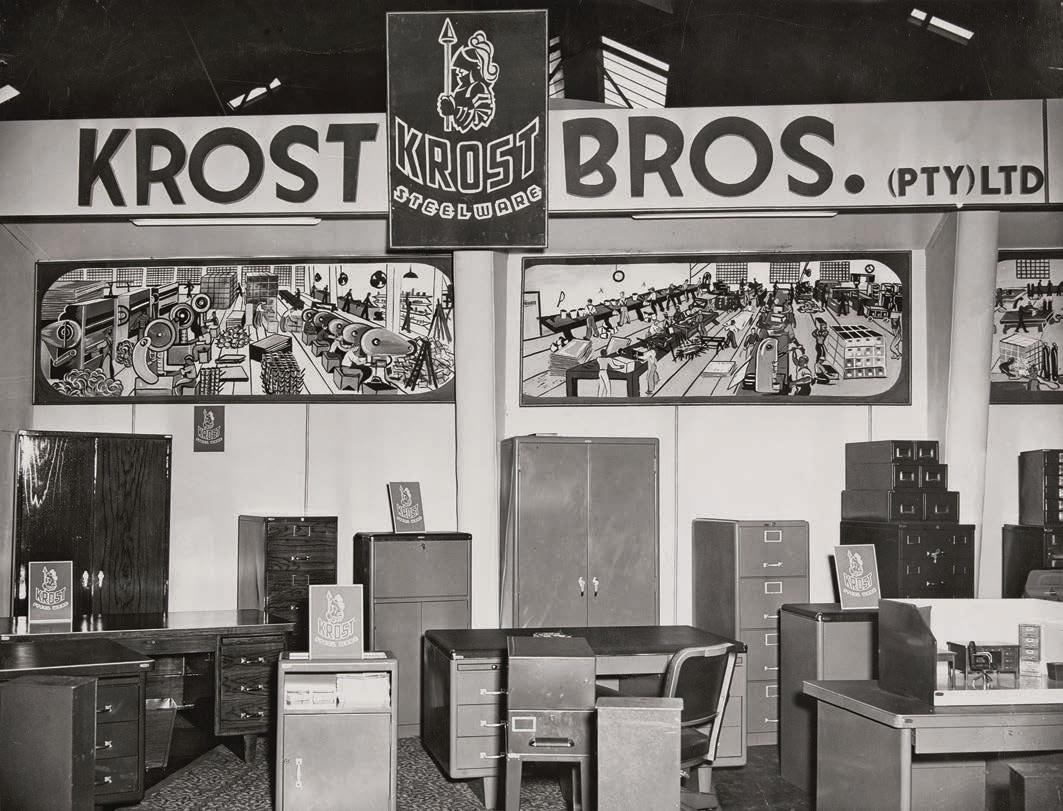
refine their products to respond more quickly to market demands. This shift laid the foundation for the advanced manufacturing capabilities that define Krost today,” says Gareth.
One of Krost’s most notable large-scale projects, he relates, was for a fit-out for the NSW Department of Communities and Justice. “We worked closely with architects, project managers, and trades to supply
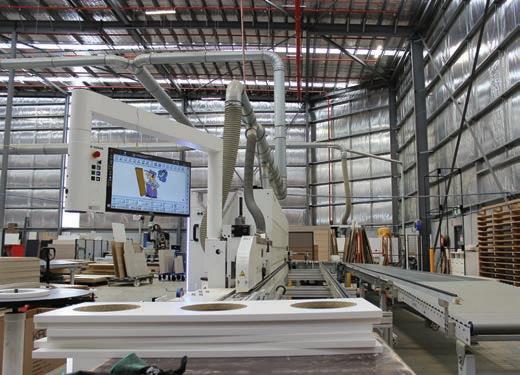
commercial furniture in 66 courthouses across the state. This project required careful planning, logistics coordination, and seamless execution, to meet the complex needs of government spaces,” Gareth explains.
The project began, describes Gareth, with detailed consultations with the department to comprehend the requirements for durability, functionality, and aesthetics, of furnishings in high-traffic courthouse environments for each site, paying attention to spatial layouts, compliance considerations, and the specific needs of users. Krost provided technical drawings, product samples, and layout suggestions for each courthouse to meet the brief’s goals for sustainability and costs.
With 66 locations across NSW, logistics planning was critical, reflects Gareth. “We worked with our delivery and installation teams to develop a staggered rollout schedule, ensuring minimal disruption to courthouse operations. Our project managers liaised with contractors, IT teams, and site managers to align
Image supplied by Krost
Image supplied by Krost
furniture installation with other trades. Our installation crews handled full assembly, placement, and waste removal at each site, so that all furniture was ready for immediate use. We continue to support the department with our ongoing furniture supply and service, which showcases our commitment to longterm partnerships,” he says.
From its experience and knowledge of the industry and market, what does Krost see for the future?
Gareth says businesses are prioritising multi-functional spaces, where furniture can be easily reconfigured to support different work styles, whether for focused individual tasks, collaborative teamwork, or hybrid working setups. "The rise of hot-desking, co-working, and remote working is driving interest in foldable and stackable furniture that can be stored when not in use. The next phase of office furniture will see more built-in technology solutions, such as wireless charging, integrated power hubs, and Internet-ofThings enabled desks that adjust settings based on user preferences. Environmental Product Declarations will play a growing role in ensuring transparency and accountability in sustainable furniture production, providing verified data on a product’s environmental impact throughout its lifecycle.”
With environmental concerns in mind, Gareth sums up: “Our goal is not to just create furniture, but to design for longevity, adaptability, and minimal environmental impact." ■
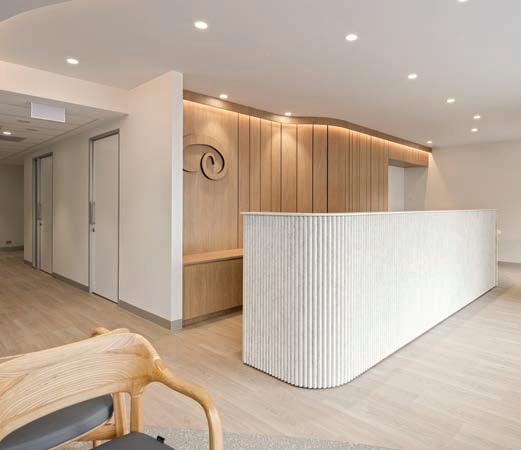
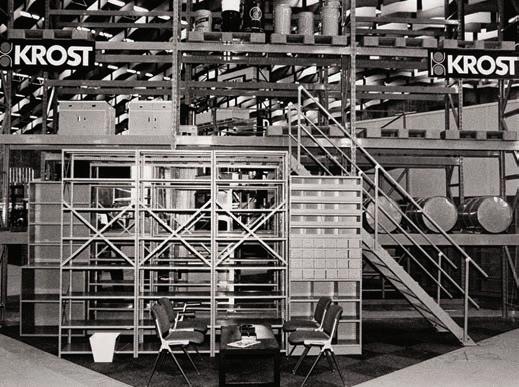
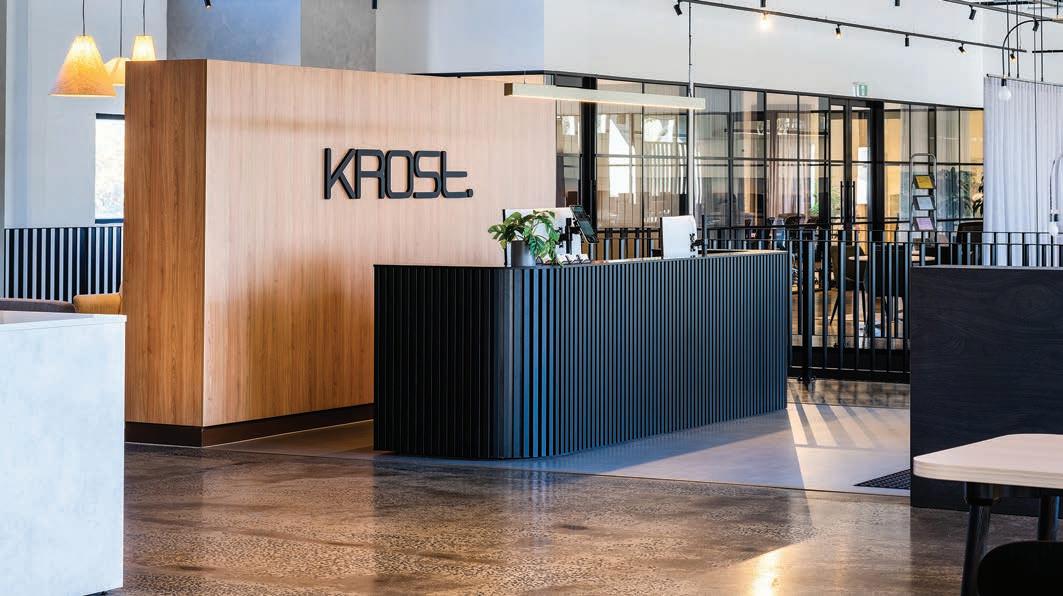
Image supplied by Krost
Southern Neurology Project Photographer — Pixel Collective
Image supplied by Krost
Crafting Success
Stories of entrepreneurs in the cabinet making and furniture industries
By Melanie Gardener
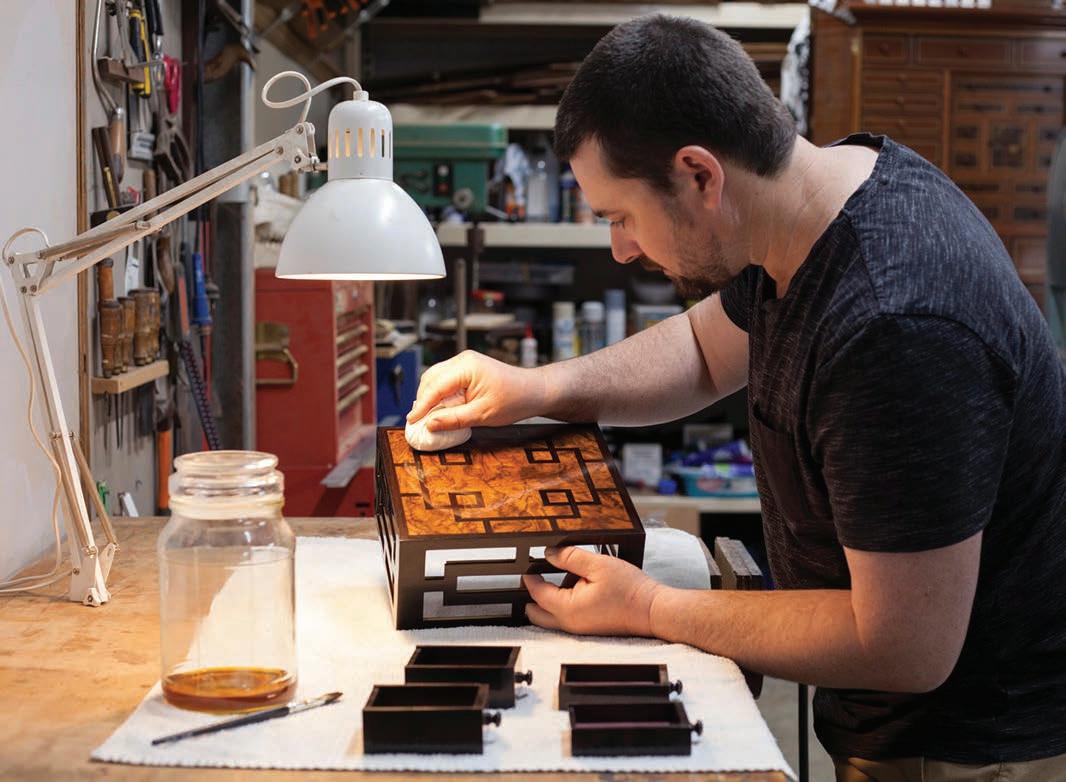
The cabinet making, joinery and furniture design industries are built on a foundation of craftsmanship, creativity, and precision. But beyond the skill of the trade, running a successful business in this sector requires determination, adaptability, and a solid strategy.
Across the industry, professionals have taken different paths to establish their businesses — some following family traditions, others pivoting from unrelated careers, and some setting out with a bold vision to redefine the market.
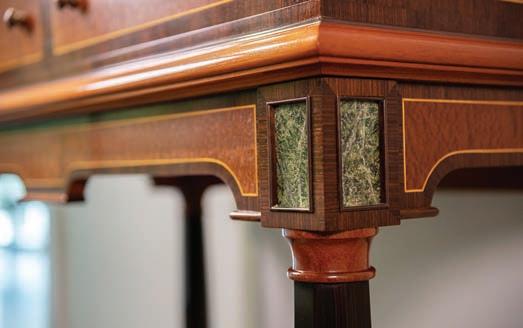
In this article, we explore the diverse journeys of several business owners who have carved out their own space in the industry. From small bespoke workshops to larger-scale manufacturing operations, we’ll uncover how they got started, the challenges they faced, and the unique business structures they have built. Their stories offer insights and inspiration for anyone looking to turn their passion for cabinetry, joinery or furniture making into a thriving enterprise.
Colin Fardon
Colin Fardon runs a small workshop based in Lismore, NSW that focuses on custom-made furniture and antique restoration. He has studied under Geoffery Hannah for more than 20 years and has so refined his craft that he has been chosen as a recipient of a Churchill Fellowship from the Winston Churchill Memorial Trust.
Colin explains that his interest in working with timber was sparked by his grandfather whose hobby was woodworking. “I always like to work with my hands, particularly woodwork at school,” he says. “And I’d grown up with my grandfather making model cars
The Wanderer Cabinet Image by Clayton Lloyd, Flawless Imaging
Colin Fardon Image by Amy Anderson
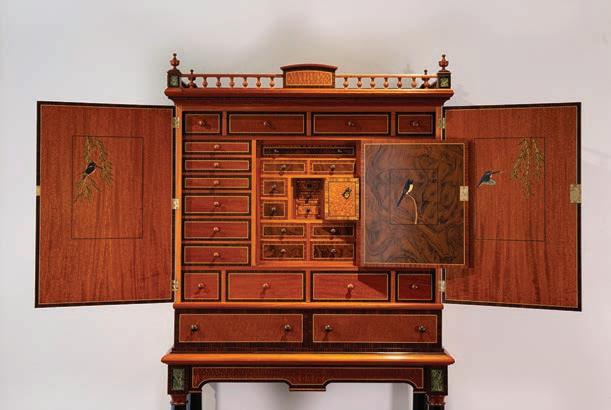
and timber sulkies, so it felt like a natural progression." His school careers advisor suggested Colin check out a prestigious furniture maker in Lismore (Geoff Hannah) and Colin soon started taking woodworking classes on a Saturday — classes that would continue for the next 19 years.
“Before I had even finished school I’d applied for an ABN and started a side business restoring furniture,” Colin explains. “I attended my first exhibition with Geoff and some of his students when I was 16 and it really opened by eyes to what could be done."
To that end, Colin obtained a position with a local joinery business working four days per week and, on the fifth day, he continued with his woodworking classes. He also worked nights and weekends on his own projects. A trip overseas on a study tour in 2007 with Geoff and some of his students, when Colin was 19, was an extraordinary experience which allowed Colin to truly appreciate pieces of furniture he hadn’t previously known existed.
Colin’s own pieces had been starting to gain attention in the local area. A cabinet he had made for his HSC project in Queensland maple was chosen by the Board of Studies to be exhibited, and a bookcase built in mahogany and American walnut for an Exhibition of Excellence in Grafton prior to the Europe trip won him first prize.
Colin credits Geoff as a major source of inspiration and a key mentor in his development as a furniture craftsman. Geoff’s reputation as a master craftsman was well established with some of his major pieces displayed at the Sydney Opera House and Government House, Canberra, plus a key piece known as the Hannah Cabinet which is publicly owned and was displayed at the Lismore Art Gallery.
Returning after his European trip, Colin embarked on his first solo furniture exhibition which was held in Casino in 2010 and featured 15 pieces. The event was a sellout with 11 pieces sold on the opening night, some even before the exhibition opened. “That was pretty good feeling at just 22 years old,” laughs Colin. “It was also a great morale boost and, practically, it allowed me to invest in new machines." Colin’s HSC project and the first-prize bookcase both sold at this exhibition.
The success of that first exhibition meant Colin’s diary filled up quickly with commissions and restoration projects and, for the next few years, he was able to reinvest that income into new machines and updated tools.
In 2016, Colin was offered the opportunity to exhibit at the Old Art Gallery in Lismore with Geoff and some of his students. For this project, Colin wanted to push himself so he set out to create a table cabinet utilising a variety of timbers including olive, olive burl, North Queensland walnut and ebony, with 12 internal drawers behind two front doors and exquisite interior detailing created by hand. “It was small, but it was a big job,” explains Colin. “Beautifully ornate furniture has such a presence and that inspired me to make a similar cabinet but on a larger scale." When the original table cabinet sold after the exhibition, this provided the impetus for Colin to make plans for a follow-up piece, destined for another exhibition three years in the future.
“It took me a total of 1137 hours and it has 40 drawers with three secret compartments,” Colin says
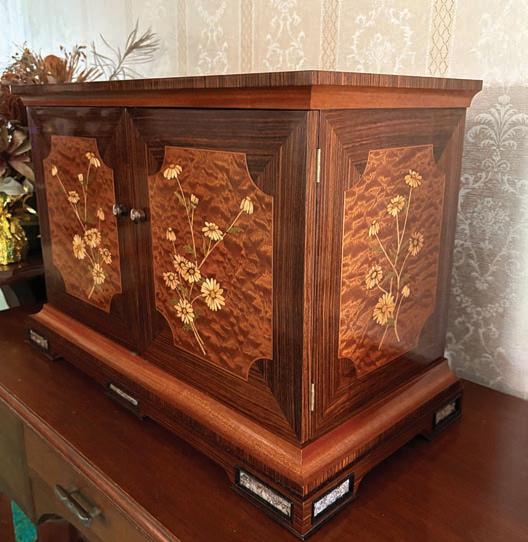
The Table Cabinet
The Wanderer Cabinet Image by Clayton Lloyd, Flawless Imaging
Business & Finance
of the larger piece. “I used 15 different species of timber, and it was the first time I had ever cut and polished stone so I had to take myself off to learn how to do that."
Named “The Wanderer”, all the inlays in this project were inspired by scenes from Colin’s parents’ property including finches, blue wrens, she oak trees, kingfishers, willy wagtails and butterflies. Four small drawers were created from Australian cedar which Colin sourced from a stair tread from the original post office in Sydney, with the rest created from Brazilian mahogany and American black walnut.
The exhibition was an immediate success, with the cabinet selling minutes after the opening. It allowed Colin to finally leave his day job and set himself up to work in his business full time. “It’s just me in the business doing what I love,” he explains. “But I’ve been able to establish a reputation now and that’s been very beneficial."
There is a business reality in this type of work and Colin has had to be realistic about what he can achieve with the hours available. “When I build a new piece, I put up all the materials and the time before I see any return. It needs to be finished and displayed before it can be offered for sale,” he explains. “Most of my commission work is in restorations and I do get some private commissions for new pieces but you can’t rely on commission work."
Colin learnt early in his career that pricing and keeping accurate records was essential. “Geoff taught me to have a job card for every project that records every cost and material so each can be calculated accurately,” he says.
“Small furniture makers like myself have the same business pressures as everyone else,” he adds. “My association with Geoff has certainly meant some good jobs have come my way but that doesn’t mean I’ve seen automatic success. It’s a great feeling when people get excited to see what you’ve built but it can be an overwhelming experience, too."
Colin will head off to Europe on his Churchill Fellowship from April to June 2025 and, on his return, plans to start work on his next big project. “It took me 47 hours to draw it at full size on two sheets of plywood pinned together,” he describes. “When something’s that big, you really need to get it right." He estimates this cabinet will take around 3000 hours to complete and it’s Colin’s largest undertaking yet measuring 2.3 metres high x 2.2 metres wide with eight legs, all in solid Brazilian mahogany.
He will also be undertaking restoration work on Geoff’s Hannah Cabinet which was badly damaged in the Lismore floods of 2022. Luckily the cabinet flipped as the water rose and it floated on its back which has saved most of the decorative elements on the front drawers. But Colin says it was heartbreaking to see it in that condition.
“The cabinet was removed piece by piece and it was immediately put into cold storage to stop mould growing,” he explains. “I need to recognise the conservation work carried out by Greg Peters and the team from Patinations Furniture Conservation. They have done amazing work to ready the cabinet for my part of the project and it’s a real team effort."
A fully sound-proofed and insulated extension has been added to Colin’s workshop with 13mm acoustic board to maintain a standard temperature inside and facilitate work on the Hannah Cabinet. He estimates it will take around 2.5 years to consolidate the cabinet.
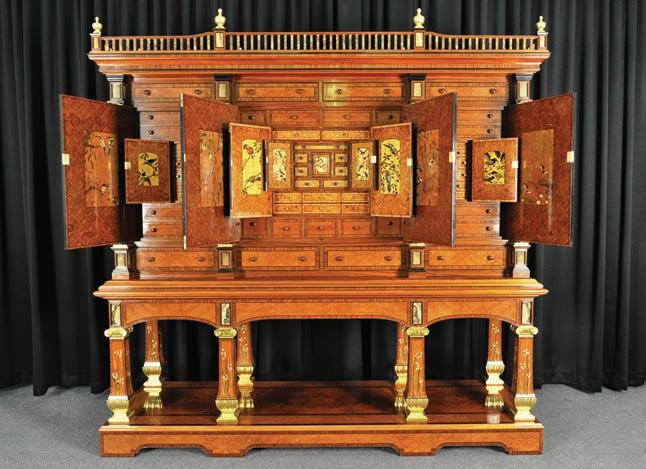
With the European trip, his next large project and the restoration of the Hannah Cabinet, Colin will have his hands full for the next few years but he’s not daunted by this prospect. “It’s such a privilege to be able to work on this piece and help restore it to its former glory,” he says. “I’m excited to see what I can learn in Europe and I’ll keep working away on my big project when I can."
Hannah Cabinet Image by Clayton Lloyd, Flawless imaging
Paul & Jannah Tucker — Jemmervale Designs
Jemmervale Designs started in Paul and Jannah’s garage following a challenging, yet successful, cubby house build that sparked Paul’s love for working with timber and building small gifts for friends and family. As the hobby expanded, the duo established an Etsy store and initially sold nursery-oriented shelving and baby items.
As the business took off, they quickly outgrew their garage and a redundancy offering provided Paul with the opportunity to invest in the business. “I needed a sea change from my very demanding HR career,” explains Paul. “The arrival of Covid-19 helped push us into setting up the online store and start selling our products more broadly."
A shared space at the local business centre became available which provided a shed which was slightly larger than the garage, subsidised by the local council for start-up businesses. Paul used some of his redundancy money to invest in new tools and the business was able to do quite well through Covid — financially, there was a market for their products and Paul enjoyed having time to experiment with new ideas.
Jemmervale Designs moved to its current location in October 2023 and Jannah says she almost feels as though the building chose them. “We had been looking for more than a year for a factory,” she says. ”This building was on the way to the children’s school and I had seen it before but, for some reason, this day I really noticed it. We contacted the agent and by the end of the day we’d made an offer."
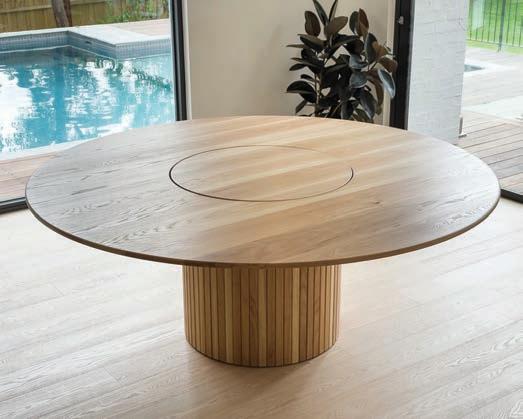
The building is very well known around Shepparton, Victoria. Originally it was used to transmit radio signals during the war, then it became the base for Radio Australia until around 2017 when it stopped transmitting. It was briefly used for office space then stood empty for four to five years before Paul and Jannah moved in.
“The building is so perfect for us,” enthuses Jannah. “It’s double brick, with 10-metre-high ceilings, and the temperature stays incredibly stable which is just what we need to maintain the timber in peak condition." Two original diesel generators from the building are now housed in heritage museums but the beautiful 10-tonne gantry crane, used to build engines, is still in situ.
Paul and Jannah have relished the opportunity to bring the old building back to life and are loving the connection to the history of the local area. It was quite a long process with local council and the owners due to the amount of work required, but persistence and a belief in the potential of the building saw them through.
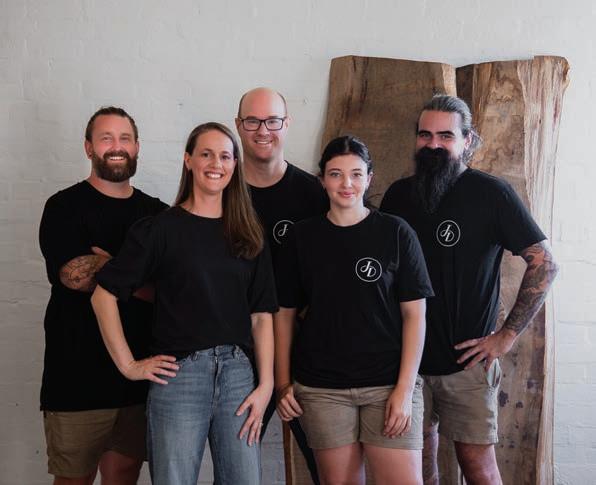
Today Jemmervale Designs employs a team of two full-time staff (one is an apprentice) plus a casual as well as Paul and Jannah. Over the years Paul has built up his cache of machinery, all Felder, including a panel saw, planer, spindle moulder, white belt sander and jointer. In addition, they have installed a MN spray booth and have amassed a number of Festool hand tools.
Establishing a business in this field with no official training has thrown a few challenges in Paul’s direction but he is nonplussed about
Webster Round Dining Table
Jemmervale Designs Team
Business & Finance
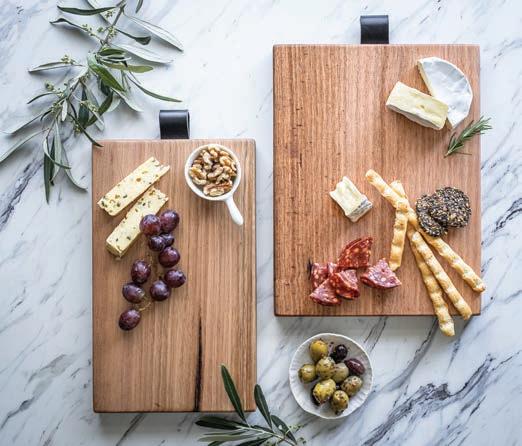
how much he has left to learn. “I certainly haven’t followed a traditional path to get here,” he laughs. “It hasn’t necessarily come naturally and I haven’t always known what to do. I’ve had to learn to ask a lot of questions and be prepared to sound dumb but I’m so grateful to the generosity of those who have shared their experience." Paul has also found it helpful working with his qualified staff to further develop his knowledge and skills.
Jannah reports that the business has undergone a number of transitions which means both owners have had to be flexible and adaptable and she says this is part of their success. “Covid-19 meant our online business took off but post-Covid-19 things are very different,” she explains. “We’ve had to very quickly learn about marketing online but also thinking ahead so we’re not so reliant just on the online store."
The business has slowly expanded to include not only single pieces but also to encompass B2B work, larger commissions, and expanding skill sets such as the introduction of the 2-pac spray booth. “We’ve had some great help,” says Jannah. “We won an Australia Post Local Business Award, we worked with a business coach through Small Business Australia, and we were able to take advantage of a grant through the Timber Resilience Package."
Because the business grew organically, Paul and Jannah did not start with a business plan, but in terms of marketing and promotion, coming from a corporate background helped Paul and Jannah understand about relationship building and networking. When they decided to make the business a full-time concern, they embarked on a more formal plan with a focus on financial viability.
“We were pretty careful and very conservative with our spending,” explains Paul. “It meant we grew a bit slower but that gave us a more stable base. We definitely tried to be very strategic with our decisions and we developed a sound relationship with our accountant who has been such a great resource."
“We learnt early on that a really good photograph is the key to success,” adds Jannah. “We didn’t have a lot of cash to outsource so we’ve had to teach ourselves and I think we do a pretty good job for amateurs!"
When Jemmervale Designs first started, most pieces were created in Victorian ash, given it was readily available and very popular with its light, blond colour. With the closing of the Victorian State Forest, brought forward from the original plan of 2030, the team had to transition across to American oak. But the company works with a variety of timbers including spotted gum, iron bark and other Australian hardwoods. “We like to use recycled timber when we can, particularly for the hotel industry, either recycled from the site or we also use a lot of recycled timber from the Docklands Wharf,” says Paul.
Today the product range has also transitioned, although the bath caddies are still very popular, as
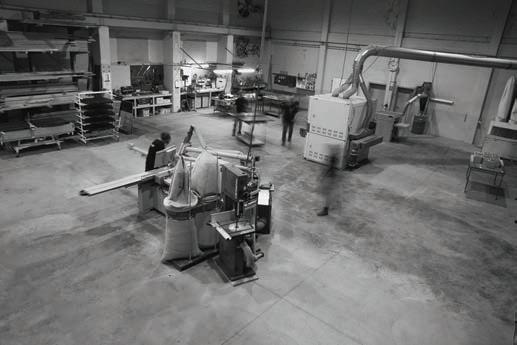
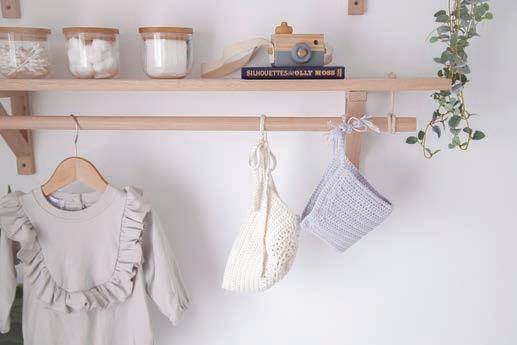
Jemmervale Designs Board
Jemmervale Designs Workshop
Bracket Shelf
are the nursery shelves, stools and round side tables. Paul and Jannah have added leatherwork and rope work to the company’s stable to complement the existing products and segue into new products.
With larger projects on the horizon and an expanding product range the business is constantly evolving. “We never thought we’d fill the space in the factory but we are running out of space already,” laughs Paul. “Larger projects mean bigger batches of items and multiple stages so we’re learning how to manage that."
Paul and Jannah both say that joining ACFA as a member has been a very positive step for their business. Their apprentice is part of ACFA’s Training program and they have taken advantage of the workplace advice, contracts and other resources available which they say have been very helpful.
As the business goes from strength to strength, larger projects have started to come their way. The team are currently working on a project with Swisstrade for a hospitality fit-out and this is an area they would like to expand in the future. Plus, they plan to continue with the local custom and bespoke work and develop new products for the online store.
Duncan Meerding
Duncan is a lighting and furniture designer based in Hobart, Tasmania with a broad variety of work based around sustainability and ethical construction. He has been practising since 2010 and his work has gained much local and international recognition.
Duncan’s love of making started at an early age; he vividly recalls helping his father create billy carts from whatever items were on hand, developing his skills with basic tools. High school saw him take this one step further with a furniture design and wood course in Year 12.
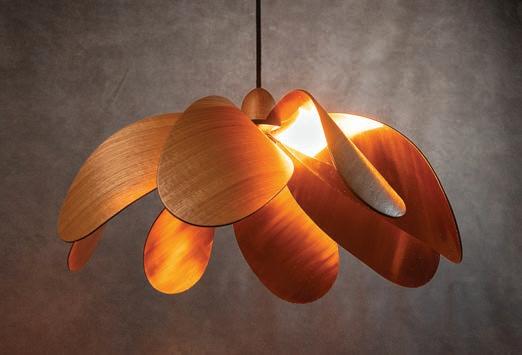

After high school, Duncan took a gap year and worked as a nursing orderly. At this stage he was undetermined about which career direction to take but the degeneration of his vision made the decision for him. With five per cent vision remaining, Duncan started university, originally studying sociology but at the end of 2006 he was introduced to the idea of vision-impaired persons learning how to use tools safely.
“I did a crash course to learn more and I was amazed at what I learnt about how to adapt, so I could work in safety,” he says. “So, I approached the head of the furniture school at the University of Tasmania and she was very open to having me as part of the student body."
Duncan started a course in design and wood skills in 2007 and he describes this time as transformative. “I became very interested in designing and making furniture,” he explains. “When I first started I thought it might only be a side hobby but then I was offered a scholarship and I realised it could be a real career for me."
Duncan’s first item made at university was an interesting entrance piece with a tapered ellipse and a unique hole similar to the sound hole of a guitar. “The music from the inside could only be turned on and off through touch, blocking out line-of-sight controls for the sighted appealed to my sense of humour,” he chuckles. The piece was made from myrtle and utilised a variety of veneer-bending processes.
Duncan says he has always been interested in environmentally conscious design and he enjoys
Duncan Meerding Image by Michele Warner
Propeller Image by César Carrasco Molina
Business & Finance
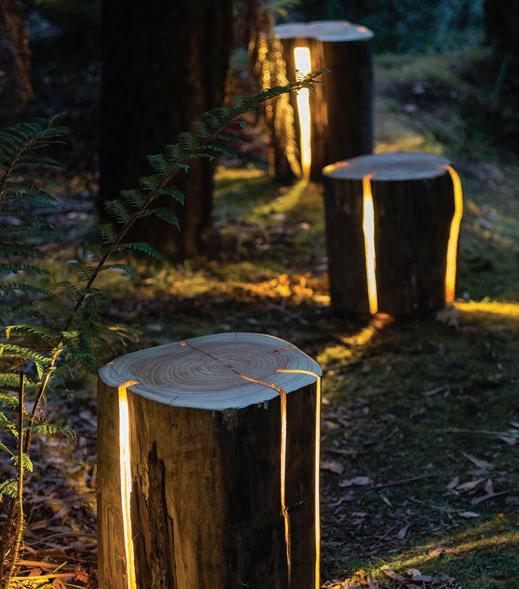
the challenge of designing by experimentation and playing with materials and what they are capable of.
“It’s not just about drawing on a computer,” he says. “I need to play around with the materials a bit and become more informed as I work with the piece."
This is exemplified in one of Duncan’s more wellknown items, the Stump light and Cracked Log lamp, made from a piece of walnut originally intended for a different use. “I discovered I couldn’t use it for what I wanted, so the design actually grew from that challenge,” he adds.
Since this original salvaged walnut version, the concept has grown, utilising various salvaged species, including macrocarpa. Different iterations have gained awards locally and internationally, including the Stump light being voted ‘Best Floor Light of 2018’ by more than 6000 of Duncan’s lighting design peers at the London-based Darc awards.
Duncan credits his success with hard work but he also recognises the opportunities provided to him along the way. “I prefer the term ‘good life chances’ rather than ‘luck’,” he explains. “My teachers were all so open minded, as were my peers. Rather than put barriers in my way, they were focused on how to improve my access to education." Duncan’s visionimpaired uncle was also a great mentor and source of inspiration.
Key opportunities included a chance to teach a course at the University of London about workshop
safety and safe practices for vision-impaired practitioners, as well as a scholarship which provided the opportunity for a soft transition into his business. “Lighting and furniture design is an area that bridges art, craft, design and cabinetry,” Duncan says. “There is not a huge program for apprentices, particularly in the area of fine furniture."
Following five years at Designed Objects Tasmania (DOT) as a full member, Duncan went out on his own and a highlight of these early years was the chance to exhibit at Salone del Mobile.Milano as part of Euroluce during Milan Design Week in 2017 and 2019. Since then, Duncan has had work commissioned broadly internationally including for Google Singapore, Clarion Hotel Stockholm and the Choctaw Nation Cultural Heritage Centre in Oklahoma.
Today, Duncan works out of his own workshop of just under 100 square metres in North Hobart. His workshop includes several traditional joinery machines as well as specialist equipment such as a cog-driven drill press. He works with hand-held tools as well as larger machinery with a small team who help produce and realise the unique works.
Duncan produces commission work as well as several stock items for which he has set up insitu tooling, but the work produced in-house is in small batch runs, rather than huge commercial quantities. “My work very much falls into the realm of craftsmanship, art and design,” he says. “I can’t just push a button and start a production line but that’s not really my end goal anyway."
Duncan’s work is very much informed by his visual impairment but he is keen to show this as a benefit and a unique selling point rather than a restriction. “Inspiration depends on each design and sometimes it will come when I start playing with the material,” he explains. “Light is always dispersed in interesting patterns and my vision impairment inspires that. It informs how I think about light and how I play with light. My peripheral vision sees light and shadow and that reflects positively within my work."
Safety in Duncan’s workshop is carefully planned but he doesn’t feel that he’s had to implement much more than would be the expectation in any factory. “We have safety guards on machines of course, but that’s a legal requirement,” he says. “Certain tools can’t be used unless signed off on by a more experienced person — we use a buddy system. We unplug all hand tools if they are not being used and
Stump light Image by Jan Dallas
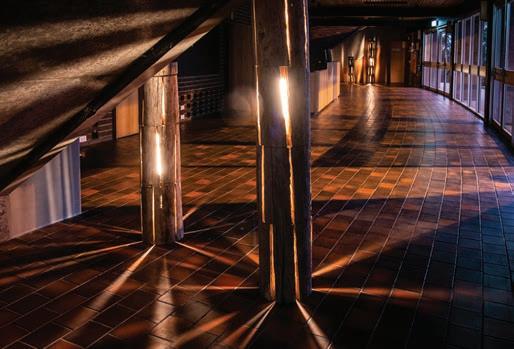
we have a shadow board for all the hand tools. All the power tools are kept in boxes inside pigeon holes — everything has a place."
For anyone new coming into the factory, Duncan emphasises from the outset the importance of returning items to their designated places, not just for his own benefit, but for everyone’s. “We vacuum up as much as possible so we avoid dust an any tripping hazards, and we use grip tape around the table saws as timber floors can be slippery at times,” he adds.
When asked about the challenge of running a small business Duncan says that, while it can be hard, sometimes the challenges will push you in new ways or in directions you hadn’t considered. “In a niche area, it’s not just about executing the work, it’s also about understanding how to market and how to keep work coming in,” he says. “I’m still learning every day about those things and I know I can’t rest on my laurels."
As with many creative people, Duncan recognises that having the conversation about costs is one of the hardest parts of the process. “It’s sometimes hard to get people to understand that things take time to make and design, and that design has a cost,” he says. “I want to make sure my items are created as responsibly as possible. Of course, I want them to be beautiful but I try to stick to an ethical code and that can be challenging sometimes."
Duncan is currently working on a new set of propellor lights with copper internals together with a new commission which followed a light installation at Vivid Sydney in 2023; ‘Light Forest’ which gained a winning place in the Swiss-based LIT lighting Design Award. He is developing the tooling to make the process to produce those larger items more efficient — but it’s a work in progress. He is also finalising a custom commission for a cabinet with an integrated
light source in the door, but he also wants to find time for more experimentation. “I have so many different light ideas and I want to find time to have a play with them at some stage,” he laughs.
Belinda Hall — Maxton Fox
Maxton Fox is a third-generation family business. Dennis Hall’s father and uncle ran an upholstery company ‘Hall & Etches’ which Dennis took over when his father became ill. Upon winning his first Government contract, Dennis then formed Tudor Furniture, with two other directors back in the late 1960s.
In the 1990s Tudor Furniture became Maxton Fox to take advantage of the flourishing contract commercial furniture and workstation market. As the business grew during this time, large tenders and Government contracts provided Maxton Fox with the security to add metal fabrication and powder-coating divisions to its capability to capture more detailed joinery-led fit-outs in addition to the ccommercial furniture contracts.
In late 2018 Belinda repatriated back to Australia to join the family business, having lived overseas for many years. “As a child I was always around the factory and offices, working in the business during school and university holidays for pocket money,” she explains, “but I wanted to carve out my own career in advertising and gain experience overseas." Belinda says that it was becoming evident that her father needed help in the business, and she decided it was the right time to come home and make a difference.
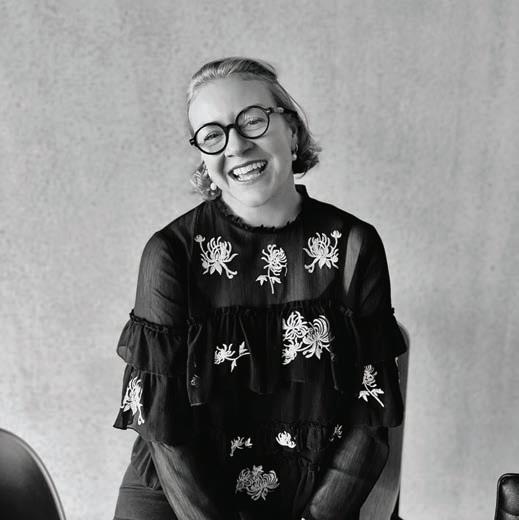
Hobart College Stacked Image by Chris Crerar
Belinda Hall
Business & Finance
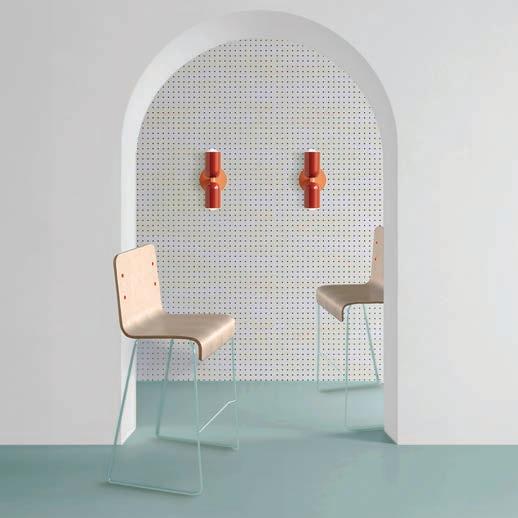
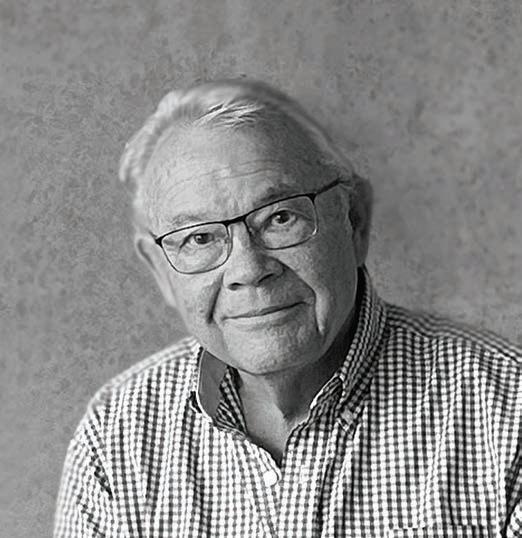
Belinda and Dennis knew that the business needed a fresh change to take it forward. The challenge at the time was that there were three directors and a lot of resistance. A key focus for Belinda was to get to know the market, understand the sector, and avoid making too many sweeping changes too early. “It was important to really understand the state of the business financially, understand the skill-set and culture within, and review the broader industry,” she says.
Significant events such as a deceased estate issue and the Covid-19 pandemic, plus challenges present within the construction sector, provided the perfect opportunity for a restructure.
Belinda and Dennis made a commitment to lead the business through the restructure, buying out the shareholder directors to become the sole owners and leadership team to drive the business into the future.
This change in leadership and ownership took place July 2024 and the business is now recovering and growing with new team members, new technology and systems to improve efficiency and new contracts being won.
The final major change will see the business move to a new purpose-designed facility. Maxton Fox has been located on the Vardys Road five-acre block since the 1970s so there is a lot involved in moving a factory of that size, not to mention the emotional toll. Belinda says "luckily we are only moving around the corner!"
“Space planning, Industry 4.0 principles, activitybased design, and style have all been key focus points for the new space. With a showroom, conference room, staff cafeteria, production meeting rooms, product factory areas, storage and workspace the entire design is going to be fit-for-purpose,” she adds.
With much of the hard graft of streamlining processes and systems, financial health checks and hiring new employees for key areas now done, the future for Maxton Fox will see a continued focus on the company’s core specialty; high-quality,
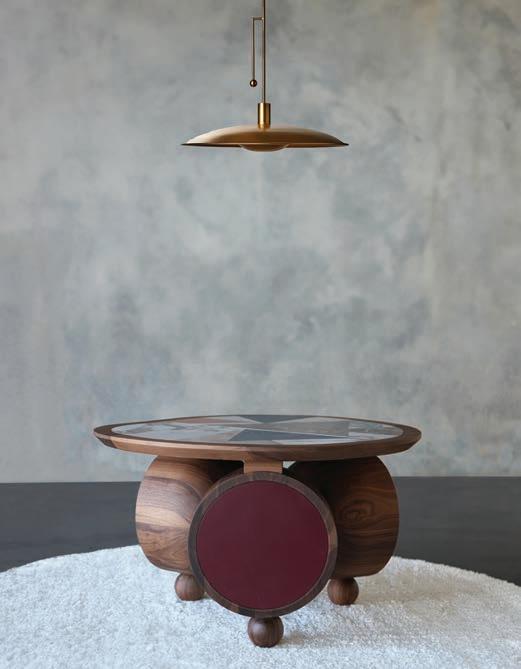
Dennis Hall
Dot Stool
Image courtesy Maxton Fox
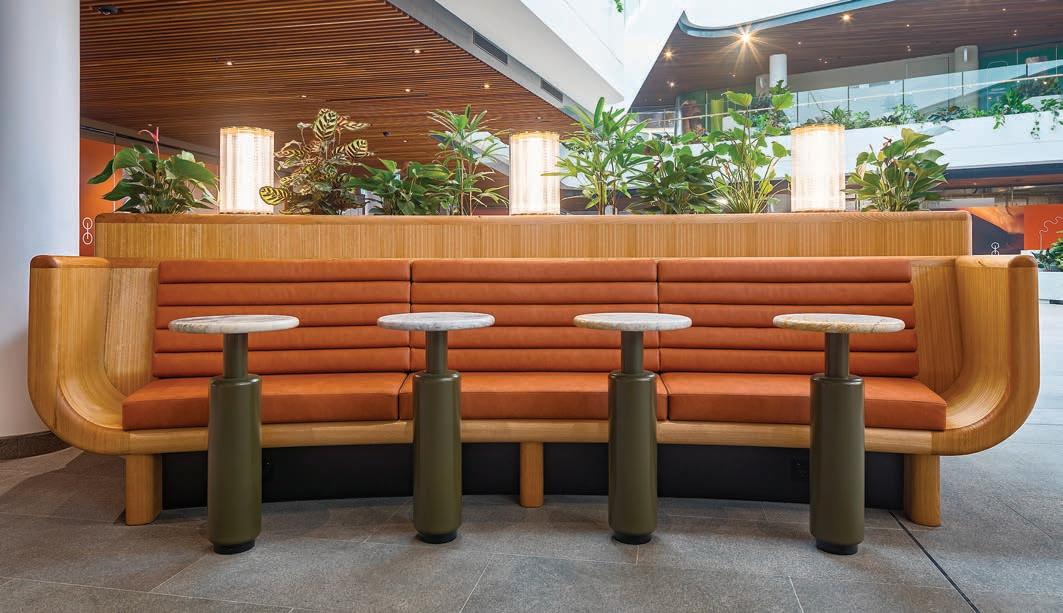
commercial and multi-residential joinery across all sectors with a plan to continue to develop and refine the commercial furniture product offering.
Several large projects are on the horizon which will keep the team busy, as will the fit-out and design of the new showroom which Belinda’s sister Jacqueline (a commercial interior designer) is currently undertaking.
“My goal is to continue to build credibility within our market, continue to do our best work and build great partnerships and products,” Belinda says.
“I came into this not wanting to hide behind a façade of knowing everything, because I didn’t know a single thing! I might have had a great career, but it came with its own challenges” she says. “Part of the job was selling ideas and negotiating large advertising campaigns and negotiating deadlines, so I’m not afraid to have the hard conversations. I’ve found that if you are honest and integral with your approach, hold firm on your position but also list, and speak your truth most people will respect that,” Belinda says.
Belinda doesn’t relate any significant issues with being a woman in a predominantly male industry although she does laugh when she recalls often being the only female at all-male events; “that’s hard!." “I grew up in and around the factory, so the guys
are just like brothers. I feel very comfortable in that environment and onsite, and I’ve found everyone to be very respectful,” she says.
Maxton Fox is committed to sustainability and committed to Australian manufacturers. The fast furniture market in Australia contributes to 30,000 tonnes of waste each year with 95 per cent of that ending in landfill, an area in which Maxton Fox is not willing to play a part.
Maxton Fox will continue to work with designers and architects at the forefront of projects to choose and select the right materials that are made with sustainability at the core, and work on developing items with longevity in mind. This commitment to local manufacturing sees the company design and manufacture all its joinery and furniture items in Australia, delivering items that are built to last.
The paths to success in the cabinet making and furniture making industries are as varied as the designs these businesses create. Whether built on generations of expertise, a leap of faith into entrepreneurship, or a carefully planned business model, each journey offers valuable lessons in craftsmanship, resilience, and innovation. As the industry continues to evolve, these stories serve as inspiration for the next generation of makers, proving that with the right blend of skill, passion, and strategy, a thriving business can be built from the ground up. ■
Image courtesy Maxton Fox
Image: Olivia Cirocco, GIA Renovations
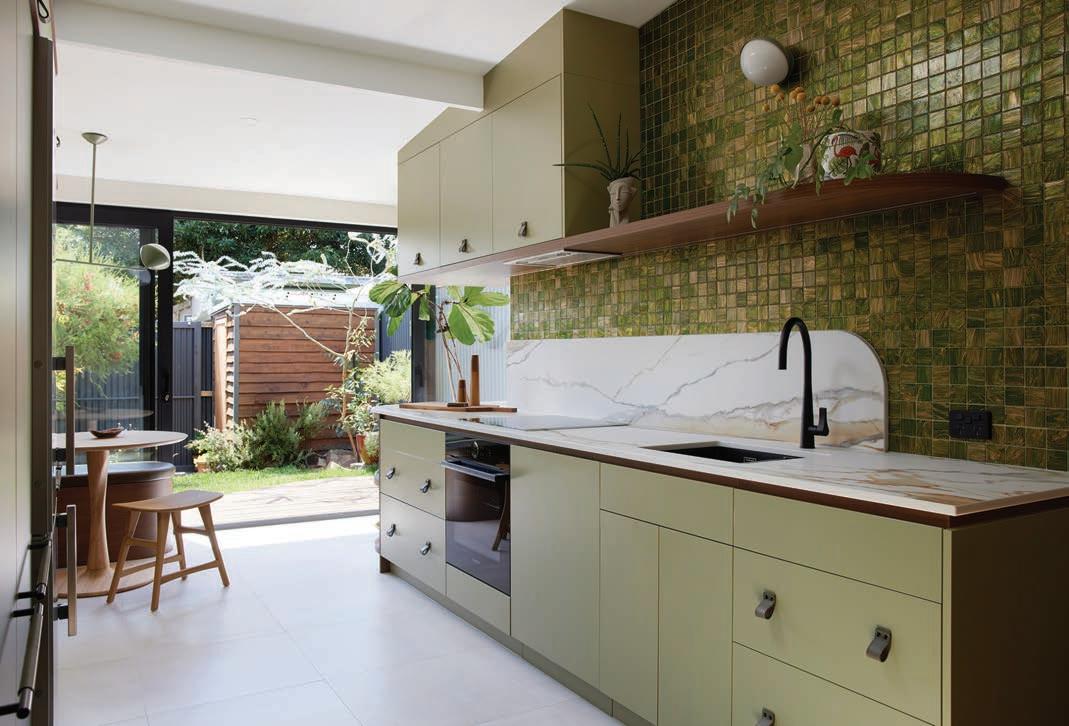
Pathways to a Productive Future
Building a career in the kitchen and bathroom industry
The kitchen and bathroom industry is one of the most dynamic and multi-faceted sectors in the design and construction space. It offers a fusion of creativity, technical skill, craftsmanship, and innovation, resulting in visually stunning and functional spaces in the most-used areas of all Australian homes.
Despite its incredible potential for meaningful careers, the industry still faces a challenge: many school leavers and young adults are unaware of the wide range of opportunities available or the various pathways they can take to reach them. From trade apprenticeships to interior design diplomas, this article explores the different entry points into the world of kitchen and bathroom design and manufacturing — and how we, as an industry, can better support the next generation in joining us.
A Diverse Industry with Room for Everyone
The kitchen and bathroom industry offers much more than meets the eye. Despite what consumers see on their favourite renovating shows, it’s not just about selecting cabinetry colours and feature tiles. The
sector spans design, production, installation, logistics, technology, and customer experience, meaning there’s room for a diverse range of talents, interests, and skills.
Education and Training Pathways into the Industry
There is no single way to enter the kitchen and bathroom industry, and that’s part of its appeal. Some come through formal education; others learn on the tools. What matters most is building a strong foundation of skills, knowledge, and a commitment to quality and collaboration.
Design-Focused Pathways
For those who are creatively inclined and interested in the design side of the industry, formal qualifications can provide an excellent springboard.
The KBDi membership base reflects the variety of pathways related to kitchen and bathroom design. Members include building designers, interior designers, interior decorators, sales representatives, and architectural draftspeople.
The training associated with the above roles varies. The Good Universities Guide sets out the following summaries:
Occupation The Good Universities Guide (extract)
Interior Designer
Interior Decorator
Sales Representative
To become an interior designer, you usually have to complete a VET qualification. As subjects and prerequisites can vary between institutions, you should contact your chosen institution for further information. Entry to this occupation may be improved if you have a degree in applied design, interior design, interior architecture or spatial design. To get into these courses you usually need to gain your Senior Secondary Certificate of Education. Prerequisite subjects, or assumed knowledge, in one or more of English and mathematics are normally required.
• Related qualifications:
• Diploma of Interior Design or
• Advanced Diploma of Interior Design
• Bachelor of the Built Environment (Interior Architecture)
You can work as an interior decorator without formal qualifications, but employers usually require Year 10. You will probably get some informal training on the job. Entry to this occupation may be improved if you have qualifications. You may like to consider a VET qualification.
• Related qualifications:
• Certificate IV in Interior Decoration or
• Diploma of Interior Design
You can work as a sales representative without formal qualifications. You will probably get some informal training on the job. Entry to this occupation may be improved if you have relevant sales qualifications. To work as a sales representative in a specialised or technical area, you will usually need to undertake post-secondary study in that area.
• Related qualifications:
• Certificate III in Retail or
• Certificate IV in Retail or
• Diploma or Bachelor in business management, marketing, commerce or related field
To become an architectural draftsperson, you usually have to complete a VET qualification in building design or residential drafting.
Architectural Draftsperson
• Certificate IV in Residential Drafting or
• Diploma of Building Design or
• Advanced Diploma of Building Design
Business & Finance
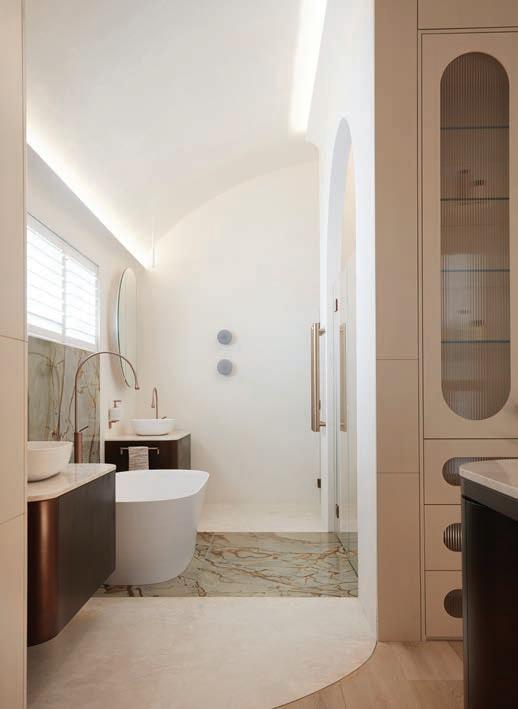
To be effective in these roles, individuals in the kitchen and bathroom sector need a solid understanding of spatial planning, creativity, ergonomics, building codes, Australian Standards, and product knowledge. With its technical support service, KBDi is always willing and ready to assist members with any questions that arise specific to kitchens and bathrooms, and encourages further learning when appropriate.
Many KBDi members, spanning across all the disciplines above, have undertaken further study with the dedicated MSF40318 Certificate IV in Kitchen and Bathroom Design course. As its name would suggest, this course focuses heavily on these two spaces, introducing specialist knowledge and skills. With their forthcoming merger, KBDi and ACFA are busy building this course and hope to add it to the ACFA portal soon.
Trade-Focused Pathways
For those who prefer hands-on, practical work, trade apprenticeships provide a solid and highly respected entry into the industry.
Both KBDi and ACFA are proud to provide an ‘association home’ for Australia’s best cabinetmakers
and joiners. These skilled technicians turn raw materials into bespoke, high-quality cabinetry and furniture. With their experience and practical know-how, they also contribute great value to the design conversation.
A Certificate II in Furniture Making or a Certificate III in Cabinet Making serves as the essential foundation; experience in various applications (residential and commercial) during and after the apprenticeship cultivates well-rounded, skilled cabinetmakers.
Software training is also a critical part of the curriculum, with programs such as Cabinet Vision, PYTHA 3D CAD, SketchUp or AutoCAD playing a key role in today’s kitchen and bathroom design.
Much like the design roles described earlier, these valued trade roles are enhanced with specialist knowledge related to kitchens and bathrooms. While a tradie’s technical knowledge may be shipshape, extended learning helps improve client communications, such as determining design briefs, assisting with colour and product selections, and more.
A number of KBDi and ACFA members have taken on this challenge, undertaking the Certificate IV course and rounding out their practical skills with dedicated design knowledge. Additionally, many skilled cabinetmakers have taken advantage of the experience-based pathway to KBDi accreditation, adding well-earned post-nominals (CKD Au or CBD Au) to their names.
Hybrid Pathways and Career Crossovers
Many successful industry professionals have arrived in their current roles from varied starting points.
KBDi has been proud to follow the journey of many cabinetmakers who’ve transitioned into design after years of working closely with clients and mastering drafting software.
Many members have entered the industry through retail or showroom roles, using their product and customer experience as a platform for branching into more technical areas.
A mature-age entry to the field of interior design is another common story in the KBDi community. We’ve heard from members with backgrounds in psychology, software development, medicine and speech pathology (to name just a few) who’ve pursued their passion for interiors later in life. They’ve
Image: Sarah Nolen, Birdblack Design
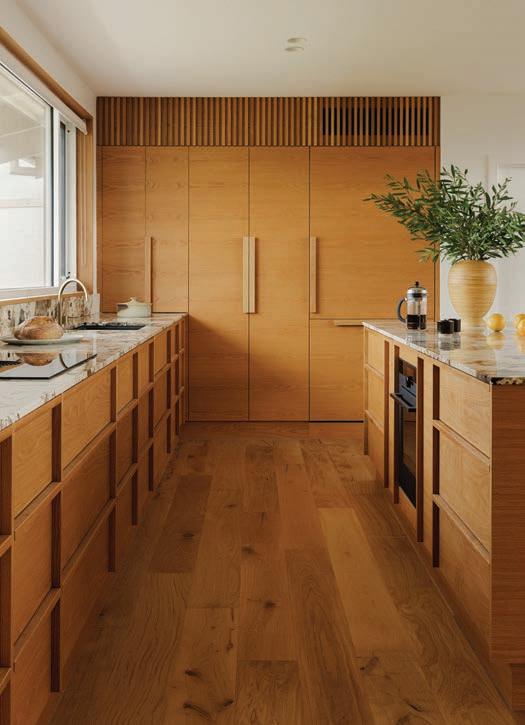
all maintained that their previous careers have added depth to their deliverables, and we’ve seen the results in the project outcomes and business success.
This cross-pollination of skills enriches the industry and creates professionals who are not only technically sound but also client-focused and adaptable.
Cultivation of Collaborations — A New Way of Working
We’re increasingly seeing clever and creative collaborations take shape in our design community. Members are joining forces with their peers in practical and supportive ways, bringing together their respective skill sets and experience with great results. These ‘mini-mergers’ allow designers and manufacturers to expand their service offerings and broaden their skills and knowledge while maintaining their individual business identities.
How Do We Inspire the Next Generation?
Despite its rich career potential, the kitchen and bathroom sector isn’t always top-of-mind for school leavers. There is significant cultural pressure for university education, and vocational pathways are often misunderstood or undervalued.
Changing the Narrative
How can we transform this culture? We can begin by sharing more compelling stories — narratives that accurately represent the current realities of our industry:
• Career Growth and Earning Potential: Whether you’re an installer, designer, or business owner, opportunities exist to build a rewarding and well-paid career. The success of ACFA members testifies to this.
• Creative Fulfilment: Designers often express the joy of bringing ideas to life and witnessing them implemented in real homes. Likewise, makers take great satisfaction in creating custom furniture pieces and finely finished interiors. Our mutual awards programs showcase the creative potential in our sector.
• Job Stability: The home renovation market in Australia continues to thrive, with a consistent demand for skilled workers. While artificial intelligence begins to trample on many whitecollar roles, its threat to finishing trades is less intense. Undoubtedly, AI will be used as a new tool in the belt of many tradies, but it won’t replace the craftsmanship required for custom cabinetry.
Through our unified platform, we will seek more opportunities to share these stories and engage a new generation of designers and manufacturers. By expanding our training offerings, we’ll create new pathways into the industry and enhance current roles. Finally, with a stronger voice, we will advocate for the industry and support those dedicated to its ongoing improvement.
As we look to the future, it’s clear that the kitchen and bathroom industry presents boundless opportunities for those willing to explore it. With a shared commitment to education and collaboration, we can reshape perceptions and highlight the many rewarding paths available. By working together — designers, manufacturers, educators, and industry bodies alike — we’ll strengthen our sector and ensure its continued growth and innovation for generations to come. ■
KBDi
kbdi.org.au/home 1300 253 223
Image: Nathan Wundersitz, SpaceCraft Joinery
Improving Market Confidence to Drive Kitchen and Bathroom Activity
HIA has just released its annual Kitchens & Bathrooms Report for 2024/25, providing insight into this important sector, as well as the broader housing and renovations markets and economy
By Tom Devitt, HIA senior economist
Affordability constraints in recent years forced many Australians to put their recent home improvement ambitions on the backburner. Now with household incomes improving and market confidence returning, many of these trends are expected to make a comeback.
With Australians spending more time at home, their demands for space and amenity at home also increased. The desire to improve one’s living environment had a two-fold impact:
• A boom in the renovation of existing dwelling stock: which, among other things, included demands for additional bathrooms and higherend kitchen appliances and finishes.
• A boom in the construction of entirely new and larger homes: which occurred despite the stagnation of Australia’s population in the face of border closures and, like renovations of existing housing, included additional bathrooms and higher-end kitchen appliances and finishes.
The result was more than 140,000 detached houses commencing construction at the peak of the home building cycle in 2020/21, and $59.8 billion worth of renovations work at the peak of this market’s cycle in 2021/22 — record highs in both markets.
Unfortunately, realising the home improvement ambitions of recent years became impossible for an increasing number of Australians. Surging interest rates and construction costs, combined with a broader cost of living crisis, created insurmountable affordability barriers to such projects. Both new builds and renovation projects started being delayed or abandoned, and those projects that still went ahead were scaled back. Australians opted for more affordable kitchen appliances and finishes and forewent the extra bathroom.
The result was three years of decline in both of these markets. Less than 100,000 new houses commenced construction in 2023/24, and renovations activity in 2024/25 is forecast to reach a trough that is 10.6 per cent down on its record high in 2020/21.
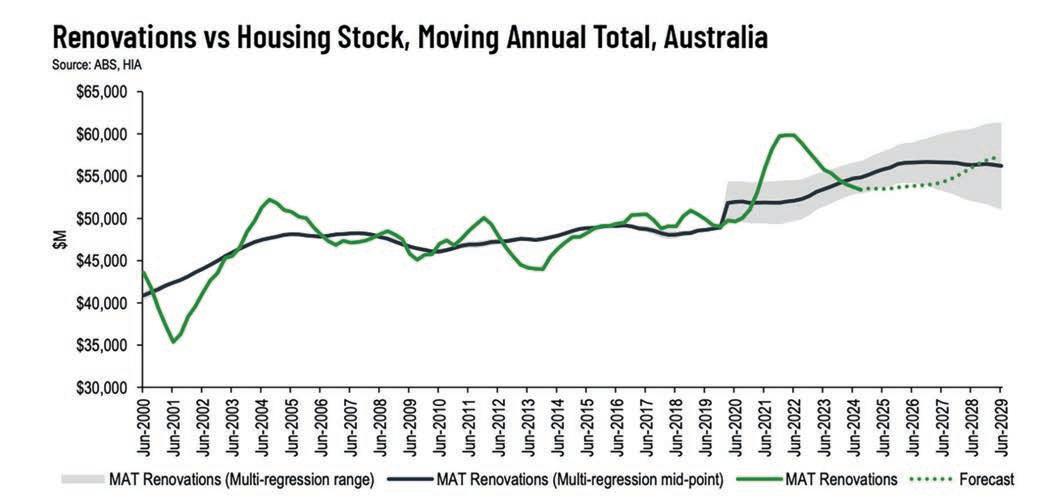

The good news is that market confidence has been returning.
Even before the RBA’s rate cut in February, interest rates had already been relatively stable since mid2023. Population growth has moderated but remains very elevated. Labour markets remain tight, with near-record low unemployment levels. Real incomes have also started crawling back up after the recent inflation shock.
These factors have all brought people back to the new home build and renovations markets, which is expected to drive kitchens and bathrooms activity on a number of fronts:
• Improving build volumes generally mean a kitchen and at least one bathroom per new home build.
• Demand is being funnelled into detached housing, with apartment construction more constrained by labour shortages, finance costs and punitive government taxes and regulations. This means even more bathrooms, as detached houses tend to have more bathrooms than apartments.
• Preferences for additional bathrooms and higher-end kitchen appliances and finishes are expected to return as recovering incomes help households overcome affordability constraints.
• There are more than 11 million dwellings across the country, which continue to age and most of which will not have been upgraded or improved in a manner consistent with recent bathroom additions and kitchen flourishes. This implies a lot of residual potential for home improvements in existing housing stock.
• Recent flooding up and down the Queensland and New South Wales coasts could motivate not just repairs but upgrades and improvements.
To put it simply, households are expected to increasingly overcome affordability constraints and the legacy of ‘more bathrooms and higher-end kitchens’ is expected to return. Combined with improving build volumes and weather-related repairs, this creates a brighter outlook for the kitchens and bathrooms sector. ■
Housing Industry Association hia.com.au/
ACFA + KBDi Merger Update
With KBDi members voting in May, the merger is moving ahead with confidence
The proposed merger between ACFA and KBDi has progressed since our last update, with the KBDi Board approving the merger document in early April.
The merger document outlines the comprehensive benefits of combining the strengths and expertise of both associations for the benefit of the broader design and cabinet making industry. It specifies the next steps each association will undertake to finalise the merger.
Particular focus has been placed on advocacy, training and support for design members and facilitating access to the broad spectrum of resources required to support individuals and businesses.
KBDi members received a notice of intent and had the opportunity to cast their vote at the KBDi AGM held in mid-May. The ACFA Board was to meet after this vote and, if all was in the affirmative, confirm the final stages of the merger, which would commence on 1 July 2025.
Greg Grant, business manager for KBDi, was quoted as saying, “This merger is a giant step forward for our industries. It brings together the needs of the cabinet and furniture industry, as well as the requirements of kitchen, bathroom, and interior designers, placing us all under one umbrella. It will provide a much more cohesive platform to serve members and the industry in the coming years and foster a united purpose."
This strategic step goes beyond uniting two organisations; it’s about expanding the opportunities and resources available to all members. As a united entity, the merged organisation will present a more powerful voice in advocacy and offer a wideranging set of collective resources to support the industry as a whole.
• Enhanced advocacy and representation — a unified voice provides greater impact both within government and the industry.
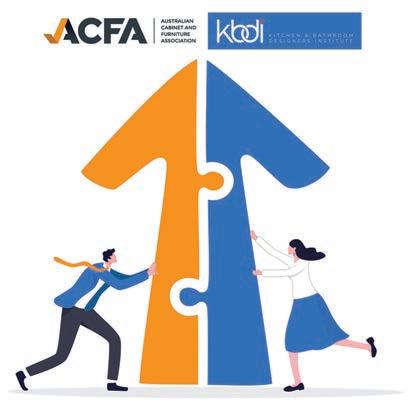
• Expanded networking and collaboration — network and collaborate with a broader community of professionals to foster creativity and create new business opportunities.
• New markets and resources — bridge the gap between design and manufacturing to help explore new avenues for growth and success.
• Comprehensive industry support — a combined expertise and a wider array of resources will provide unparalleled support.
• New training opportunities — KBDi and ACFA are actively developing a new training course focused on the design of kitchens and bathrooms, based on the KBDi Accreditation program, which will be released later this year.
• Elevated industry standards — the merger will ensure best practices are shared and implemented widely to not only improve the quality of work but also enhance the reputation of the industry.
• Enhanced professional development — through training and development programs will assist all members in staying ahead of industry trends and technologies.
Both associations stand to gain by combining their strengths to create a more cohesive and collaborative industry. It truly represents a Concept to Completion solution for the cabinet and design industries.
The representatives of both organisations are available for further consultation and discussion so please reach out if you would like more information. ■
For more information acfa.net.au/ or kbdi.org.au/home
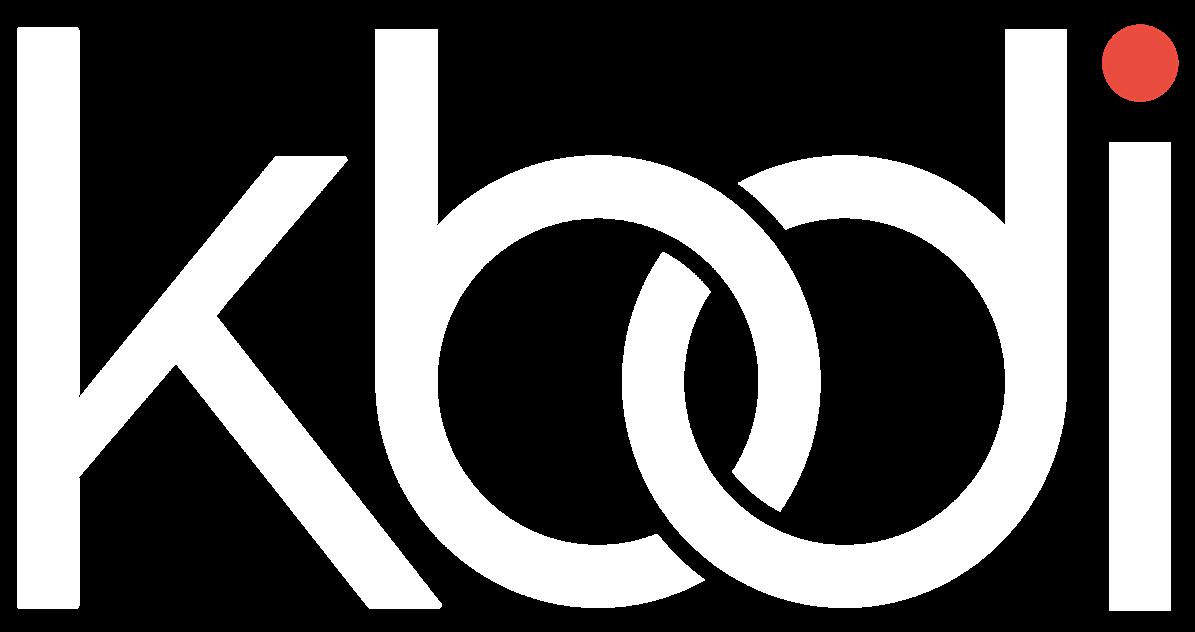

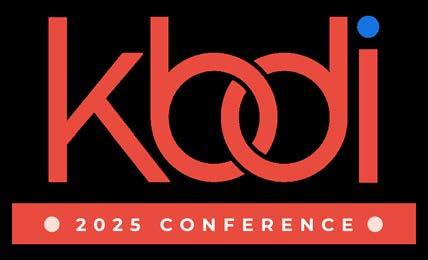
2024 Vivid Emerging Designer Awards
Held as part of Décor + Design, the Vivid Emerging Designer Awards celebrate the future of Australian design
For more than 22 years Vivid, Australia’s longest-running competition for emerging Australian designers, has been held as part of Décor + Design. Curated by Latitude Group’s Daniel Dalla Riva, it has helped kickstart the careers of prolific designers such as Nicole Monks, Dale Hardiman and Adam Markowitz.
Here are the winners from the 2024 Awards program — we’re excited to see the 2025 winners later this year.
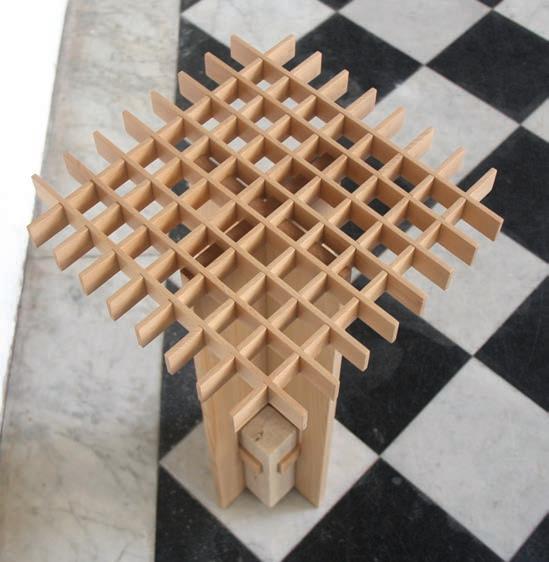
Lighting Design
Presented by Lucy Bishop
Winner Mozzarella by Amy Vidler
Commendation ETER by Haoqi Hong Commendation Six Sticks by Kaspian Kan
Commendation Ripple by Amy Vidler
Mozzarella, an object of sumptuous form and texture. Intended to visually impact space with its surface tension and delicious glow. The craftsmanship is meticulously executed with a silky smooth shade and polished stainless steel base. Comforting and uplifting, just like an Italian cheese. Vidler also won the 2024 VIVID Judges Choice award for best overall, for both Mozzarella and another work, Ripple — a decorative wall piece of amber light filtering through stone fibres.
Furniture Design
Presented by Laminex
Winner Ballast by Jess Humpston
Commendation ELLE by Dirk du Toit
Commendation Casper by Marty Whittle
Jess Humpston won the prestigious Furniture Design award for Ballast, which balances lightweight construction with solid stone batons anchoring to the ground. Interlocking, collapsible joints hold each other, formulating a gridded structural system allowing for interplay of light and shadow and visibility through the central framework. Humpston also won the Authentic Design Alliance (ADA) Award of Merit for both Ballast and another work, A Table for One.
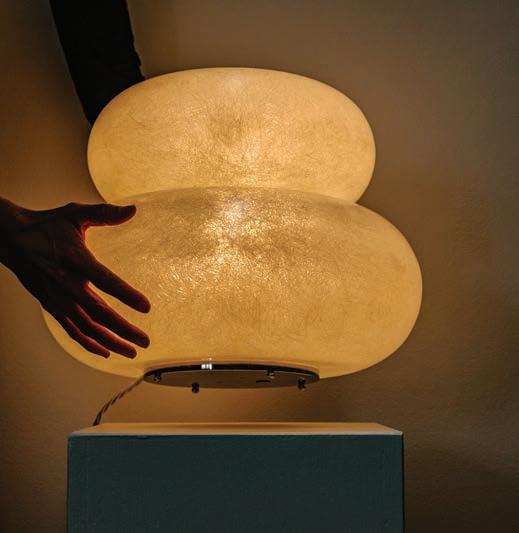
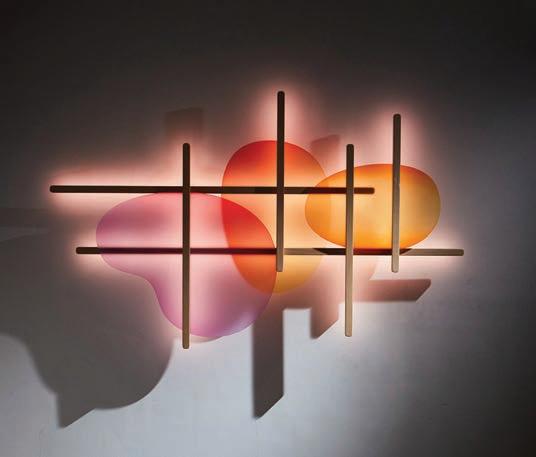
Object Design
Presented by Circa
Colour Award
Presented by Dulux
Winner Six Sticks by Kaspian Kan
Commendation Cheeky by Maryam Moghadam Commendation Pixel Arches by Eamon Riley
Designed in consultation with neurodivergent communities, Six Sticks places sensory comfort at the forefront. A natural timber frame cradles hand-dyed acrylic panels which interplay with diffused lighting in a captivating wall display that soothes the soul.
Winner Fjall Juicer by Fraser Greenfield & Oliver Alexander
Commendation Sorbet by Sze Yek
Commendation Lotus Incense Holder by Mark Lilly
Commendation Dovetail Floor Vase by George Davies
The Fjall Juicer: Inspired by mountain peaks and designed for both functionality and aesthetic appeal, the Fjall boasts a sleek design that fits perfectly in your hand, allowing for comfortable juicing. Its ceramic construction ensures longevity, while its minimalist yet rugged appearance adds a touch of elegance to any kitchen.
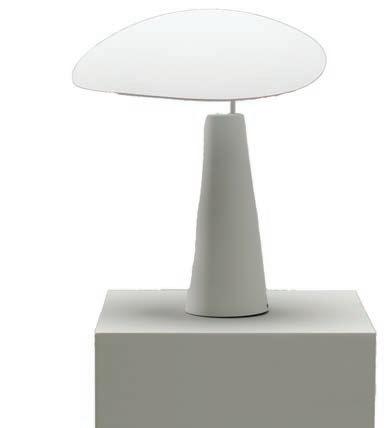
Student Design
Concept Design

Presented by Architecture Media
Winner Helio Lamp by Grant Capriotti Commendation //SHIFT// by Kaspian Kan Commendation Wishing Box by Eliza Radford Commendation Rope Lounger by Carl Broesen
Inspired by the motion of plant parts in response to the sun’s direction, the asymmetric cantilevered top of Helio Lamp has full rotation, allowing the user to refract light in any direction. Spun aluminium forms the top and base, which house a rechargeable light source, cased in a 3D-printed internal support structure. Helio won Grant Capriotti both the Student and Concept categories. We can’t wait to see what Grant and all our winners do next.
Presented by Design Institute of Australia
Winner Helio Lamp by Grant Capriotti
Commendation ETER by Haoqi Hong Commendation Sorbet by Sze Yek
Judges Choice
Presented by Annie Paxton
Winner Amy Vidler for Ripple and Mozzarella
The next edition will take place at Decor + Design from 16–18 July 2025 at Melbourne Exhibition Centre, with entries open from March 2025. ■
Authentic Design Alliance (ADA) Award of Merit
Winner Jess Humpston for Ballast and A Table For One Commendation Amy Vidler for Ripple and Mozzarella
Décor + Design decordesignshow.com.au/
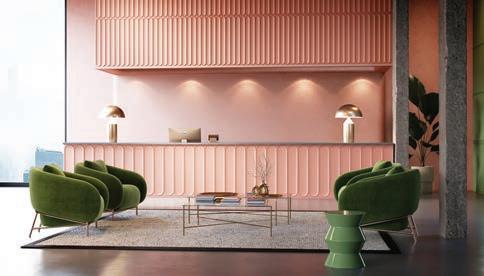
ARC 3D Wall Panels
Inspired by the retro-futuristic interiors of the 1970s, with their rounded and elongated silhouette, the ARC 3D wall panels reinterpret the traditional wainscoting in a contemporary way, adding character to any environment. Available in two versions, ARC S and ARC L, they can be combined to create unique and original wall compositions.
noel-marquet.net/en/
Product Update
CSR Gyprock® Opera Cornice
Offering an innovative dimension of style and detail, the new Opera™ cornice combines smooth flowing curves and distinctive modern lines. The timeless 90mm profile adds an architectural accent designed to bring a sense of sophistication and elegance to any room.
gyprock.com.au/
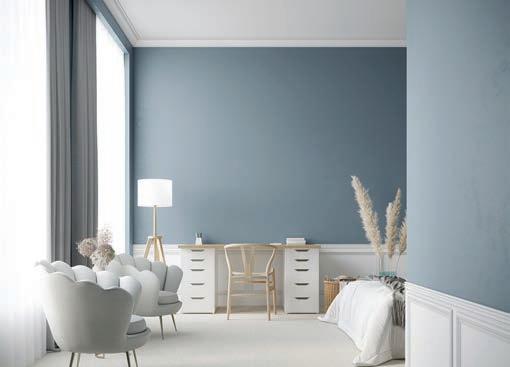
Give your next project a lift with our editor’s pick of the latest kitchen, bathroom and interior products
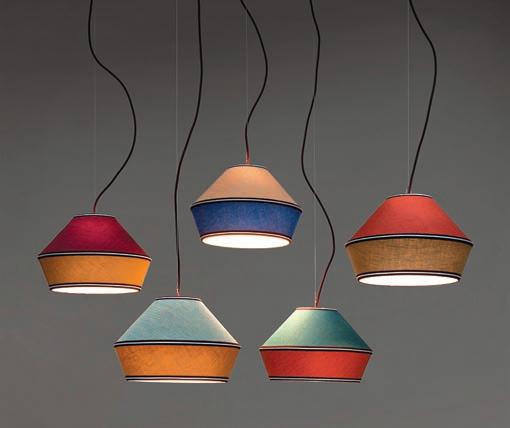
Servomuto Meringa lamp
The Meringa lamp is one the most iconic and versatile pendant lamps by Servomuto. The Meringa lamp is fashioned from pure linen and is available in five different colour combinations and two dimensions, 35 and 60 centimetres in diameter, with a burgundy fabric cable. servomuto.it/
Glass Design Venezia
A new countertop washbasin released at this year’s ISH, Venezia is fashioned from Murano glass, mouthblown and hand-opened by master craftsmen. Available in three exclusive finishes — Clear Gold powder, Fume Gold powder and Blue Gold powder. glassdesign.it/en/
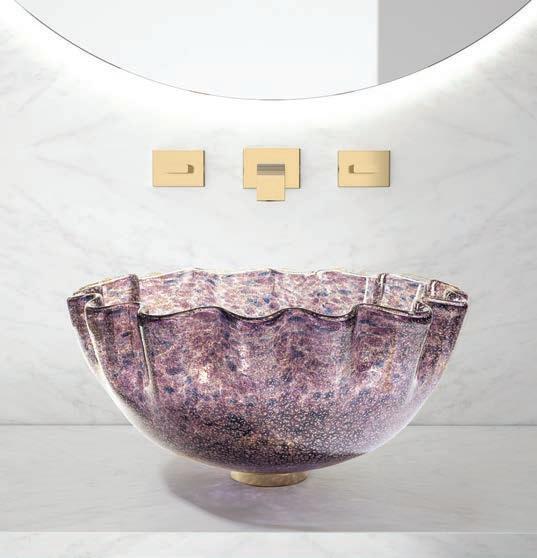
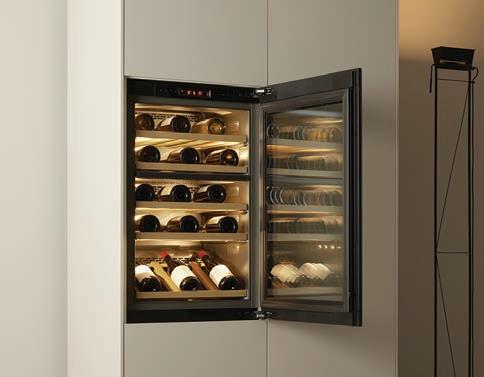
V-Zug V4000
90 wine cooler
With space for up to 38 bottles and two temperature zones ranging from 5°C to 20°C controlled by a digital touch display, the V-Zug V4000 90 allows the user to customise its settings as needed, while ambient lighting is provided thanks to the 10 energy-efficient LED lights included. vzug.com/au/en/products/kitchen/ wine-cabinets/
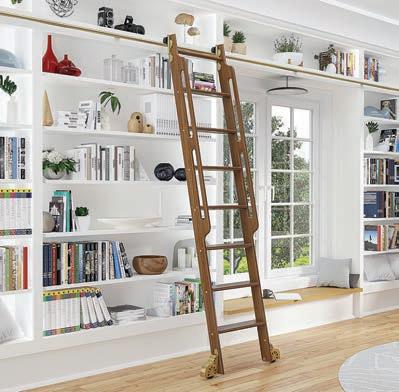
Shells wallpaper by Abigail Edwards
Smeg COF01 countertop oven
The new COF01 countertop oven, whose curved shapes evoke the unmistakable timeless style of FAB refrigerators, is available in black, white, cream, pastel blue, pastel green and red. The COF01 oven has a 30-litre capacity and is equipped with Galileo CombiSteam technology and 10 functions included in the single oven.
smeg.com/au
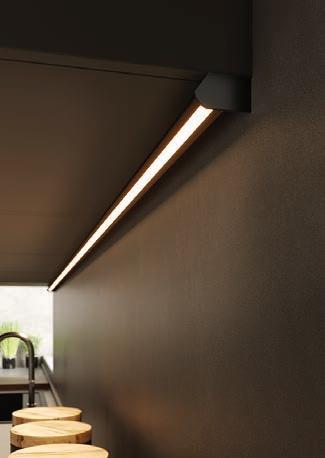
Quiet Glide ladder system
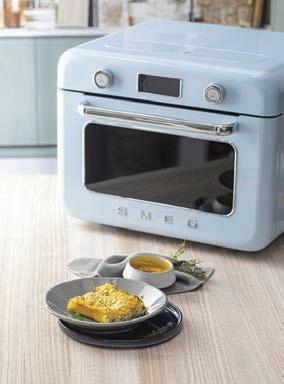
Domus Line VELIT
VELIT is a swivelling profile, capable of moving along the horizontal access at an angle of up to 35 degrees, illuminating the work surface in the preferred area. Unlike traditional solutions where the entire luminaire rotates, with VELIT only the light chamber pivots while the anchoring structure remains fixed.
domusline.com/
RAM Hardware Products’ Quiet Glide ladder system is available in five finishes including Black, oil-rubbed Bronze, Satin Nickel, Satin Brass and Chrome. All hardware components of the ladders can be personlised including wheels and end rail caps. Two standard ladder heights are kept in stock with two widths available — standard and wide — in American Oak and Maple. ramhardware.com.au/
Depicting simply sketched seashells, hand drawn by Abigail, Shells wallpaper is available in four colourways: Scallop, Cockle, Ocean, and Watercolour (printed from the original watercolour pencil sketch). Subtle hues of peach, oyster and sandy neutrals evoke the tranquil colours of the coast. Rolls are 10m long and 52cm wide. abigailedwards.com/
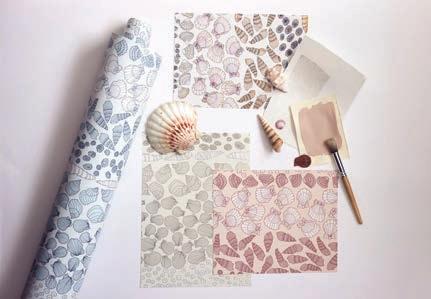
School-Based Apprenticeships & Traineeships
Educational Pathways Program for MSF30322 — Certificate III Cabinet Making (Kitchens & Bathrooms)
Discover the value of bringing an apprentice or trainee into your business with the SBAT program. Take advantage of this unique opportunity to invest in your team's future and have the training costs covered by the NSW Government.
The program allows students to combine paid part-time work and formal study toward a nationally recognised qualification while at school, which then transitions into a full-time second-year apprenticeship once schooling is complete.
Employers benefit from the business contribution of the SBAT during the training period plus securing future skills needed for the business.
Financial Incentives For Employers
This qualification has been identified as a priority trade with various financial incentives available for employers who take on SBAT staff. This is a part-time apprenticeship so the incentive is half the usual incentive for employers.
How it Works
Students in years 10 and 11 commence a part-time apprenticeship with a specified number of days of paid employment (minimum requirement 100 days). Days must be completed before the end of the HSC year.
The employer commits to employing and training the apprentice/trainee for the duration of the training contract. Support for both employer and apprentice/ trainee is provided via ACFA’s trainers and the SBAT Engagement Officer at the school.
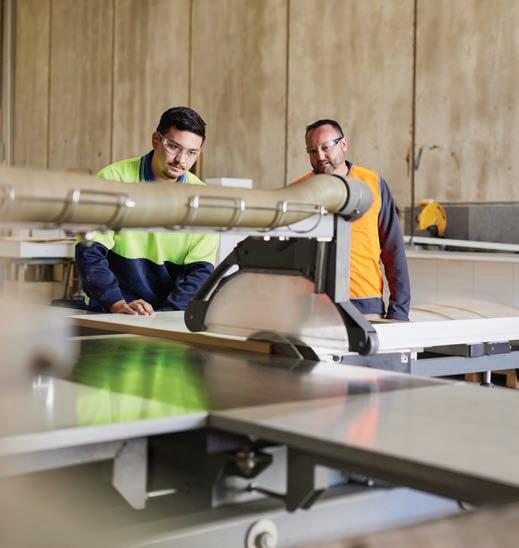
Once complete, the student transitions into a fulltime, second-year apprentice.
How to Enrol
Enrolment is through the school with all parties present including the student, school representative, RTO representative, employer and apprenticeship centre representative.
Once enrolled, an induction is carried out with the RTO representative.
FAQs
How often are the apprentices/trainees on site?
One or two days per week (upon agreement from all parties) at the place of employment for a total of 100 days over two years. School holidays can be utilised to increase the number of days completed. The 100 days must be completed prior to the end of the HSC year.
When does the student complete their online theory training?
All theory-based modules are completed during school hours as part of the student’s VET training. The students complete weekly logbooks to record work activities which must be signed off by their supervisor.
How often is the student visited on site by the trainers?
An ACFA workplace training visit is conducted once every eight weeks (minimum) by a qualified trainer/assessor.
How many units of competency will apprentices/ trainees complete in two years?
Students are allocated one unit of competency to be completed every two months, equivalent to a first-year full-time apprentice.
What happens if the student decides to leave school to take up a full-time apprenticeship?
The student applies for a variation to change from SBAT part-time to a full-time apprenticeship.
What happens if student leaves SBAT prior to completing the program?
The student will receive a Statement of Attainment which can be used to apply for credit transfers if they choose to return to a cabinet making qualification at a later date.
Essential Information for Employers
• The SBAT becomes a paid part-time employee under the Timber Industry Award 2020.
• SBAT Students are to work a minimum 7.5 hours per week. Shifts can be split on weekends or hours increased during school holidays.
• Completion of SBAT Stage 1 is deemed to be equivalent to the first year of a “regular” apprenticeship/traineeship. Providing the student has successfully completed the requirements of the training program, the student then transitions into their second year
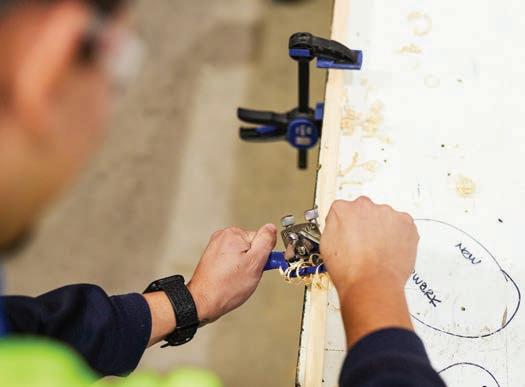
of a cabinet making apprenticeship as a fulltime apprentice for the remaining contract period. A variation is applied to the contract to reflect this change from part-time to full-time.
• Student probation periods apply as per normal workplace policies.
• Full support for the SBAT and the employer is provided by ACFA’s trainers/assessors.
This opportunity provides the employer with additional resources immediately while also securing future skills for the business. ■
ACFA Training acfa.net.au/sbat RTO: 90432
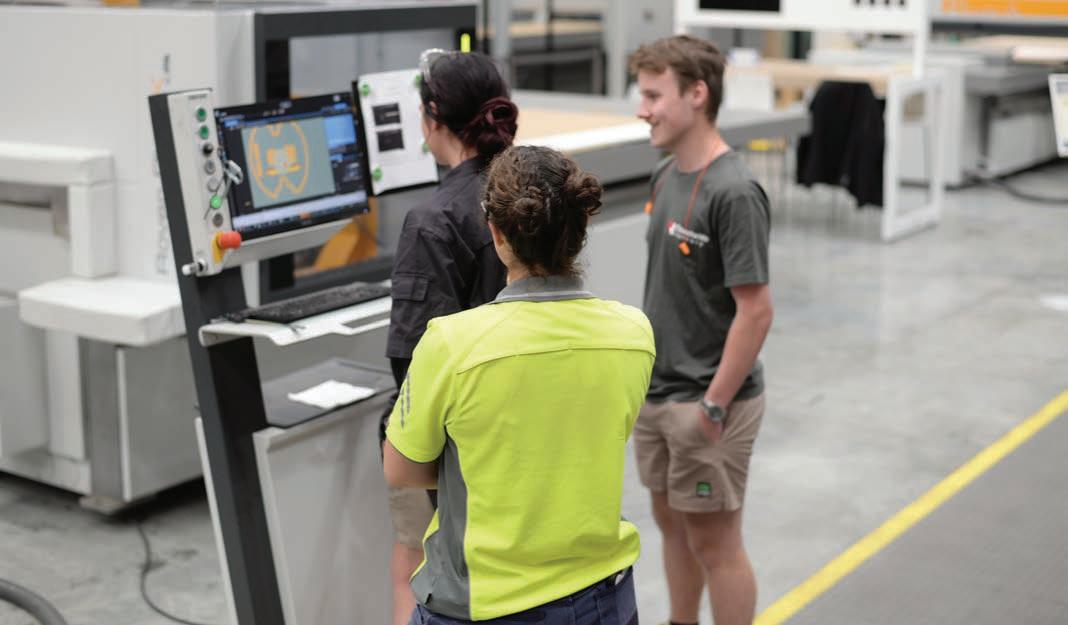
ISH 2025 Designplus Awards
From more than 160 entries, 13 outstanding solutions have been selected
ISH is the world’s leading trade fair for HVAC and water and was held in Frankfurt, Germany at Messe Frankfurt from 17-21 March 2025.
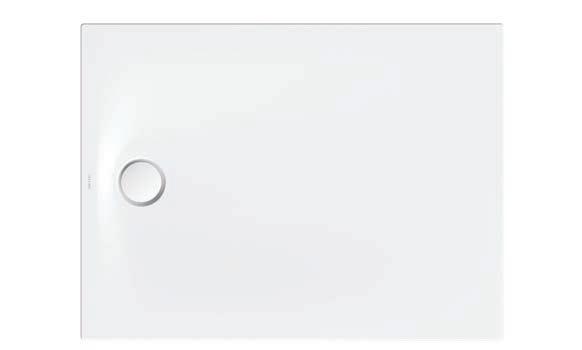
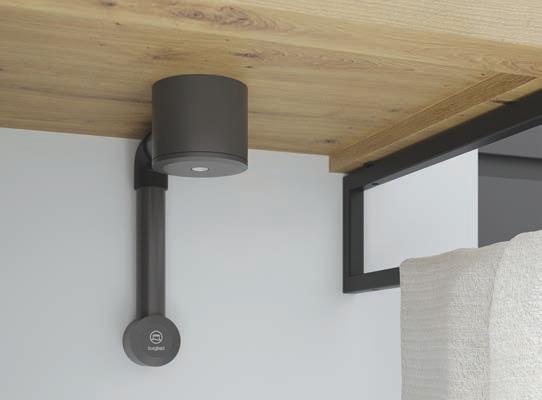
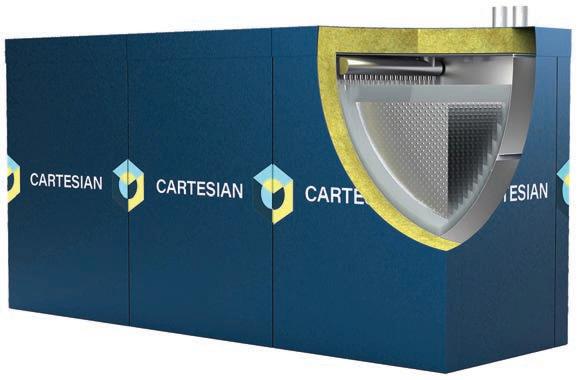
Design & Innovation Category
— BetteUltra Space
The new BetteUltra Space shower tray is flat, elegant and versatile. Made from high-quality glazed titanium steel, it combines modern design with robust material to ensure a seamless, hygienic and easy-care surface.
Design & Innovation Category — cleanFlow & cleanFlow+ from burgbad
This innovative siphon offers an environmentally friendly alternative to a traditional basin trap. The drain is easily accessible from above, making it easy to clean and particularly low-blockage, as well as below. The cleanFlow+ is a specially developed closing valve with integrated automatic overflow protection.
HVAC & Sustainability Category — Cartesian Thermal Box
Cartesian’s Thermal Box relies on sustainably sourced phase change materials (PCMs) to store heating and cooling energy efficiently with a minimal footprint. The technology offers a compact and sustainable solution to energy storage challenges by optimising energy usage, balancing grid capacity and reducing peak power demands and energy costs.
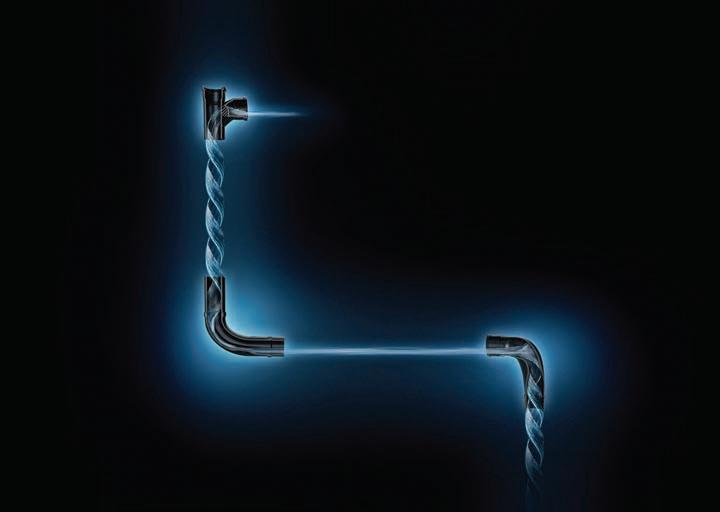
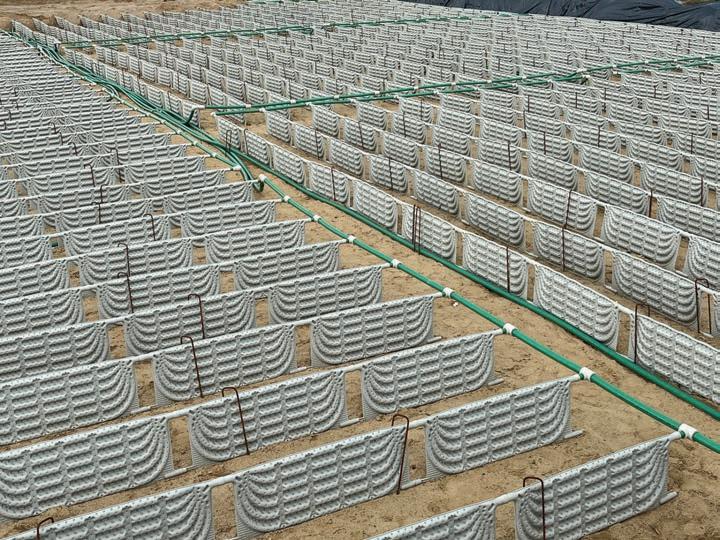
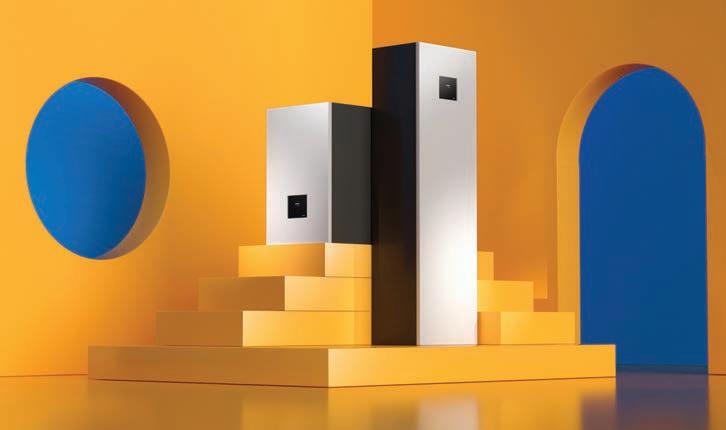
Water & Efficiency Category — Geberit Silent-Pro-Super Tube
Geberit has expanded its soundinsulated Silent-Pro drainage system with new, hydraulically optimised fittings specifically developed for highrise buildings or houses with multiple distorted downpipes. The technology means bypass pipes are no longer required and horizontal pipes can be installed without a slope and discharge capacity is increased.
Water & Efficiency Category — GeoCollect Edwärme Absorber Modul
The GeoCollect ground absorber is a hybrid between classic ground collectors and ice storage. The individual absorber strings are connected in parallel via a brine distributor while hydraulic balancing is carried out by means of flow-rate limiters in the distribution shaft.
Water & Efficiency Category — EHS ClimateHub & EHS Hydro Unit
The EHS ClimateHub is an all-in-one solution for heating and domestic hot water, featuring a built-in water tank less than 600mm deep. The EHS Hydro Unit provides heating and hot water when paired with a third-party tank. Both appliances are designed to blend with modern interiors and connect to various smart home control devices.
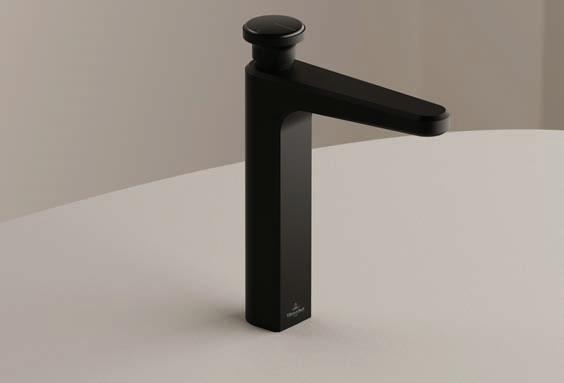
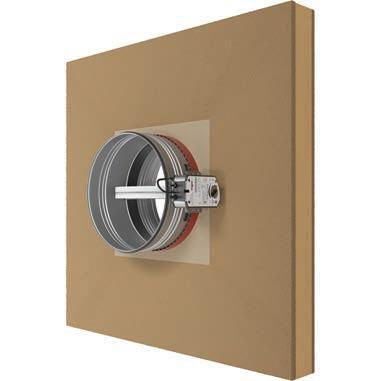
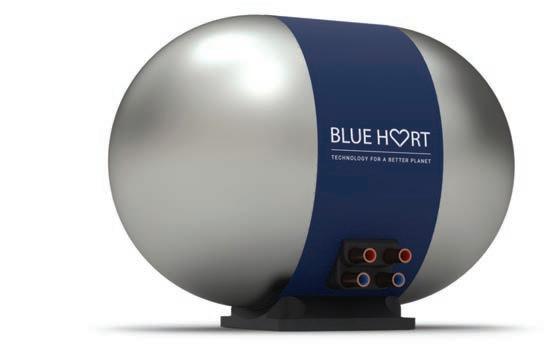
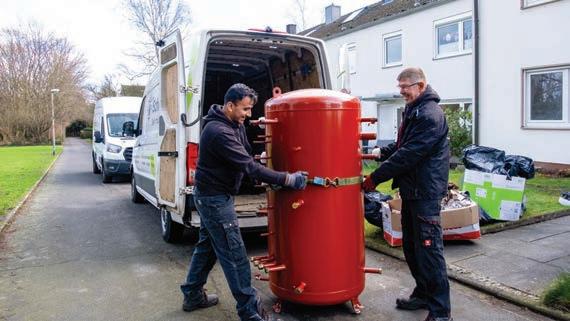
Design & Innovation Category — Vienna by Villeroy & Boch
Designed by Christian Haas, the Vienna collection is equipped with ViPush technology; water can be switched on and off at the touch of a finger. Temperature is set by turning the knob. The design was inspired by the shape and function of a perfume bottle with straight lines combined with a delicate facet cut edge design.
Design & Innovation Category — FK90 & FR90 by Wildeboer Bauteile
A new ecological fire protection system that allows the fire dampers to be used in wall constructions with clay panels. A versatile application option means the units are also ideal for timber-framed or solid buildings, listed buildings and renovation projects. The new installation method is uncomplicated and saves valuable time and resources.
Young Innovators Category — Blue Heart Unit
Blue Heart replaces the refrigerant circuit with a thermos-acoustic engine. The new system offers a quiet, durable, flexible and comparatively inexpensive system that works without refrigerants or Co2 emissions. This is the first time thermoacoustics have been transferred to heat pumps for residential buildings.
Young Innovators Category — ScrapBees
The company offers a comprehensive solution for the environmentally friendly, efficient and safe disposal of old HVAC systems as well as support with the installation of new systems. In this way, ScrapBees addresses the shortage of skilled tradespeople and enables HVAC companies to outsource fast and smooth retrofitting.
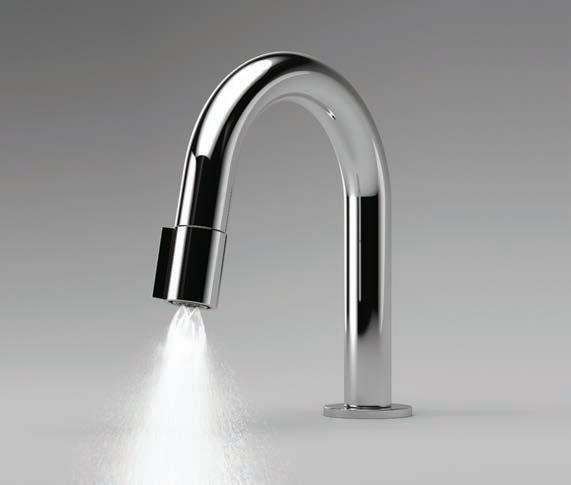

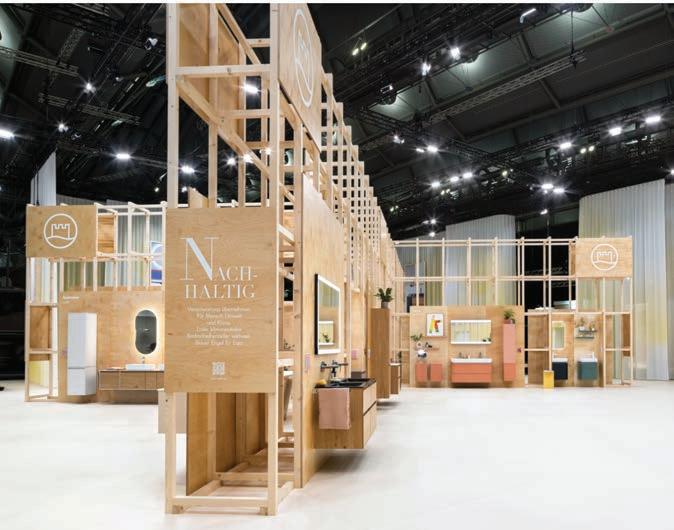
Young Innovators Category — Swiss Eco Tap
With an extremely low water consumption of just 0.65 litres per minute, the Swiss Eco Tap sets new standards in water management. Three turbulators accelerate the water jet and enable a high cleaning effect with low water volume. Its design is minimalist with a slim profile that blends seamlessly into modern and classic washrooms.
Young Innovators Category — NextBT
With NextBT, a scalable, digital platform, companies can organise material procurement, production and construction processes in a more climate-friendly way and make informed decisions that contribute to a sustainable value chain. NextBT can also be embedded in existing company systems.
Sustainable Exhibition Stand Category — burgbad Messestand
burgbad’s stand for ISH 2025 was a modified reconstruction of its stand concept from ISH 2023. The centre of the stand is a 4.5metrehigh timber shelf which is arranged in an asymmetrical cross shape which is slightly rotated in the room. All materials used are natural and reusable; thanks to the modular design almost 100 per cent of materials from 2023 were able to be used in 2025.
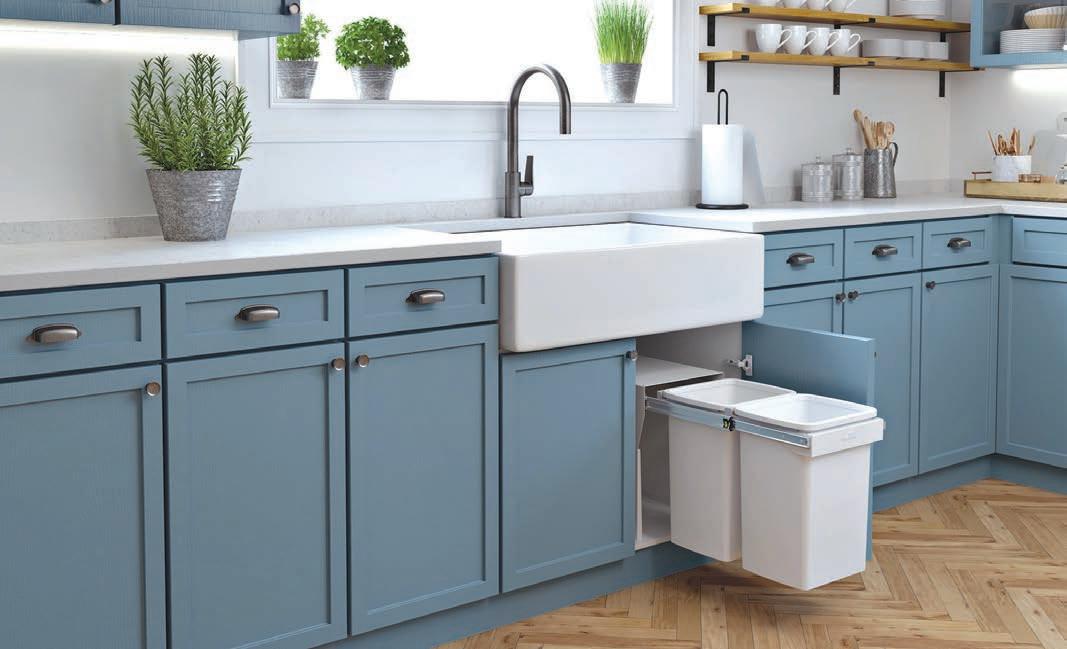
Hideaway Floor Mount Range
Striking the balance between premium design and great value
The premium design of the Hideaway Floor Mount Bin Range ensures durability and strength while offering excellent value.
Floor mount waste bins often lack stability during use. However, the Hideaway Floor Mount Bin features a robust steel letterbox-designed frame that securely encases the buckets. This innovative design keeps the frame solid once installed, addressing common stability issues. With straightforward installation, it serves as an ideal retrofit solution. The frame also acts as a sleek cover for the waste bin, enhancing the overall aesthetic.
Each unit is equipped with soft-close, overextension runners that support a dynamic weight load of 38kg. The buckets are crafted from recyclable, food-grade polypropylene plastic and include a liner holder to keep bin liners securely in place.
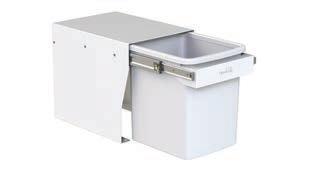
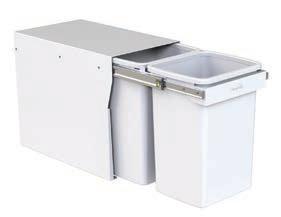
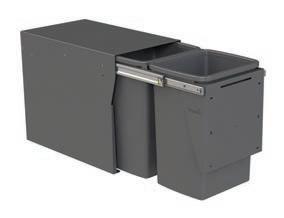
Bins shown —
A. KCF115SCH-W (1 x 15L)
B. KCF215SCD-C (2 x 15L
C. KCF220SCH-W (2 x 20L)
The extensive range is available in two sophisticated colour options: Arctic White and Cinder, ensuring seamless integration into various cabinetry designs. Bucket configurations include 1 x 15L, 1 x 20L, 2 x 15L, and 2 x 20L. Twin bin options enable convenient waste separation, while single bucket solutions are perfect for accommodating cabinets with plumbing or other appliances. The range offers both handle pull options and, for twin bin solutions, a convenient door pull design.
With its sturdy construction, user-friendly installation, and elegant design, the Hideaway Floor Mount Bin Range offers the perfect balance of functionality and style. ■
To learn more, visit hideawaybins.com.au or contact one of Hideaway’s distribution partners – Häfele or Nover.
Your HR & Workplace Support Team

ACFA membership offers businesses access to a wide array of industry resources, including tailored templates, checklists, policies and a personal HR advisory call services. Expert guidance from hiring to HR compliance; protecting your business at every stage. Hear from one of our members
“After being a member for a few years now, I have found that ACFA are suited for both small & large businesses, as they have the resources, knowledge base and expertise. Being a member of
has essentially freed up my time to work on my business and not in my business.”
NCVER 2024 RTO Outcomes Explorer
A summary of ACFA’s results in the recent NCVER 2024 training survey
The National Centre for Vocational Education Research (NCVER) undertook a National Student Outcomes Survey in 2024, an annual survey of students who undertook VET in Australia during the previous calendar year. The results are based on the responses of more than 243,000 VET students collected between June and August 2024.
ACFA training manager, Kristy Cole, says “At ACFA, we’re proud that the 2024 NCVER survey highlights the strength of our workplace-based, industryintegrated training model. With 100 per cent of students employed after training and more than 92 per cent reporting improved job outcomes, these results reflect the real-world impact of our programs."
She adds that ACFA’s training remains highly relevant to the needs of apprentices and employers, with 93.8 per cent of students finding the training directly applicable to their current job, and 97 per cent achieving their main reason for training. Importantly, 90.2 per cent would recommend ACFA, confirming its strong reputation for quality and practical training delivery.
With overall training satisfaction at 91.5 per cent and recommendation rates at 92.9 per cent, both exceeding national averages, the 2024 NCVER survey highlighted the strong impact of ACFA’s training programs.
ACFA is committed to continuous improvement, and while the 2024 NCVER survey results were
Summary of NCVER 2024 RTO Outcomes Explorer
overwhelmingly positive, they also provided valuable insights into areas where the learner experience can be strengthened.
The training team is actively enhancing the learner and employer experience through a range of strategic initiatives. These efforts ensure programs remain responsive, supportive, and closely aligned with the evolving needs of industry.
ACFA’s training team is currently:
• Investing in ongoing professional development for trainers.
• Implementing structured assessment moderation sessions.
• Expanding learner support, including weekly oneon-one sessions for students needing extra help.
• Exploring mentoring grants — similar to the successful government initiative of ISMAA (Industry Skills and Mentoring for Australian Apprentices) in which ACFA participated in 2018-2019.
These results not only validate ACFA’s approach, but also motivates the team to continuously evolve and enhance support for learners and industry. Overall, the findings affirm ACFA’s mission: to deliver practical, future-focused training that drives careers forward across NSW’s cabinet making industry. ■
ACFA Training acfa.net.au/training/ 1300 342 248
Kitchen+Bath Show is coming to Melbourne in June 2025
As the premier event dedicated to the kitchen and bathroom industry, Kitchen+Bath Show brings together the best brands, manufacturers, designers and specifiers for three days of inspiration, innovation and networking. Whether you're looking for cutting-edge materials, stylish fittings, or stateof-the-art technology, this is the event where the industry connects.
Why you can’t miss this:
• The ONLY dedicated kitchen & bathroom trade event in Australasia.
• See new product launches first and explore the latest innovations shaping the industry.
• Learn from top designers and industry experts through a packed schedule of free talks.
• Network with key decision-makers, including kitchen and bathroom designers, interior designers, cabinet makers, builders, retailers, architects and specifiers.

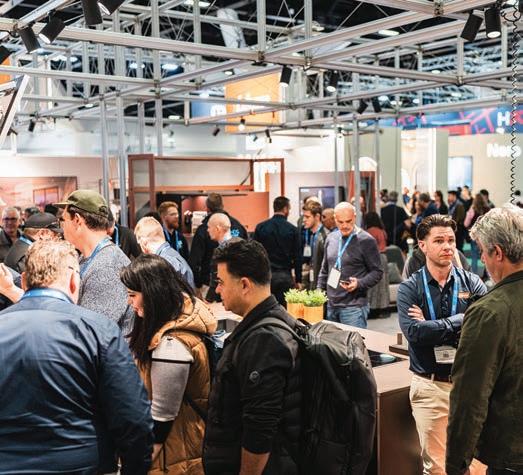
• The biggest names in the industry will be exhibiting, including Blum, Cyncly, Hafele, Hettich, Jobman, Kesseböhmer, LOFRA, Nero Tapware, Nood Co, Nover & Co, Otti Australia, Planit, Polytec, Porcelanosa, Schweigen, Unox CASA, and more!
Running alongside Design Show Australia and ArchiBuild Expo, these powerhouse events create an unparalleled platform, offering a one-stop destination for sourcing, networking and industry insights.
This is a must-attend event! Scan the QR code to register for your free trade ticket today — prices increase to $50 on 12 June! ■

Kitchen+Bath Show kitchenandbathshow.com.au/ 12-14 June 2025, Melbourne Convention & Exhibition Centre
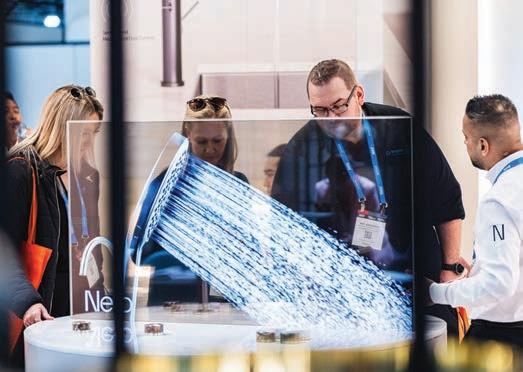
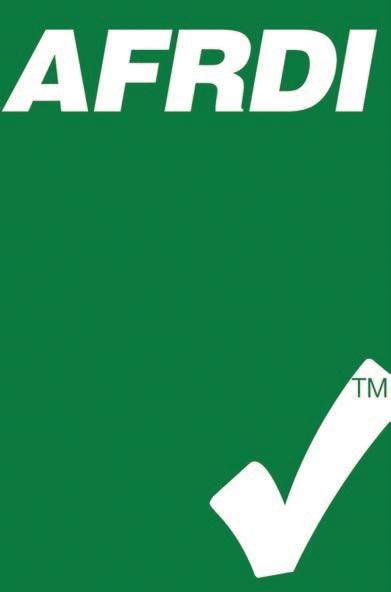
AFRDI Green Tick Update
ACFA has received an update from the Australasian Furnishing Research and Development Institute (AFRDI) regarding its Green Tick certification program
This update is specifically in regards to the Green Building Council of Australia’s (GBCA) “Future Focus” Responsible Products Framework.
The GBCA’s online portal “Score Checker” shows the Responsible Product Value (RPV) awarded to various sustainability schemes/standards under the new framework for Green Star Buildings (which supersedes Green Star Design and As Built respectively). The portal can be accessed with a free-to-create GBCA account.
AFRDI has assented to the publishing of scores awarded for two levels of Green Tick Certification. The breakdown of RPVs awarded (based on the March
2012 version of AFRDI Standard 150) is as follows:
• AFRDI Green Tick Platinum (level A) with 100 per cent of points available awarded for a product with timber components = RPV 7
• AFRDI Green Tick Platinum (level A) with 100 per cent of points available awarded for a product without timber components = RPV 5
• AFRDI Green Tick Platinum (level A) with 85100 per cent of points available awarded for a product with timber components = RPV 4
• AFRDI Green Tick Platinum (level A) with 85100 per cent of points available awarded for a product without timber components = RPV 2
• AFRDI Green Tick Gold (level B) for a product with timber components = RPV 3
• AFRDI Green Tick Gold (level B) for a product without timber components = RPV 1
Note: the 2012 version continues to be awarded the same level of recognition and points in Furniture/Fitout calculators under the legacy scheme for Green Star projects incepted before and during the phase-in of the new Green Star Buildings standard guidelines.
AFRDI has been given a preliminary indication that the new draft of AFRDI Standard 150 currently in development may receive an RPV score between 12 and 15 for the (highest) Platinum level.
Feedback on the draft update and proposed changes to AFRDI Standard 150 will be sought very soon, before submitting the final version to the GBCA for updated RPV scoring.
ACFA is a member of AFRDI and submissions/ feedback will be sought from ACFA members as part of this process. ■
Australasian Furnishing Research and Development Institute (AFRDI) furntech.org.au/

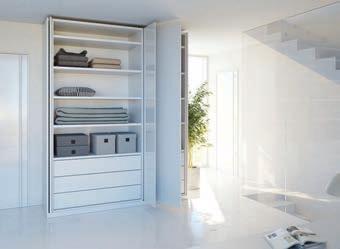
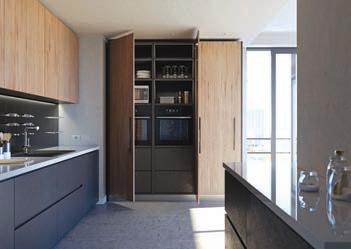
Salice Exedra Pocket Door System
Designed for interiors where space is limited, the Salice Exedra Pocket Door System from Nover Australia features a cam-assisted sliding mechanism complemented by a linear damping system that ensures smooth and controlled opening and closing. Easy to install and remove from the cabinet, the system allows the doors to open and close smoothly
and uniformly. Each system is supplied partly assembled to reduce manufacturing and installation times.
Exedra optimises space and helps maintain the aesthetic of a clean, organised area by hiding away those elements that create visual clutter. This versatile system can be used in a variety of applications including for larder units in kitchens, or to hide away bulky items such as washing machines, freezers or even sinks. Beyond the kitchen, Exedra can also be used in living rooms as a refined solution for media units or library shelving, for bedroom wardrobes, or for home office storage.
Its sleek, streamlined look complements modern interior designs that favour minimalism, allowing the beauty of the space to shine without distraction, and enhancing the design process by providing a solution that reflects the expectations of homeowners. ■
Nover nover.com.au/salice-exedra-pocket-door-system/ 1300 668 371
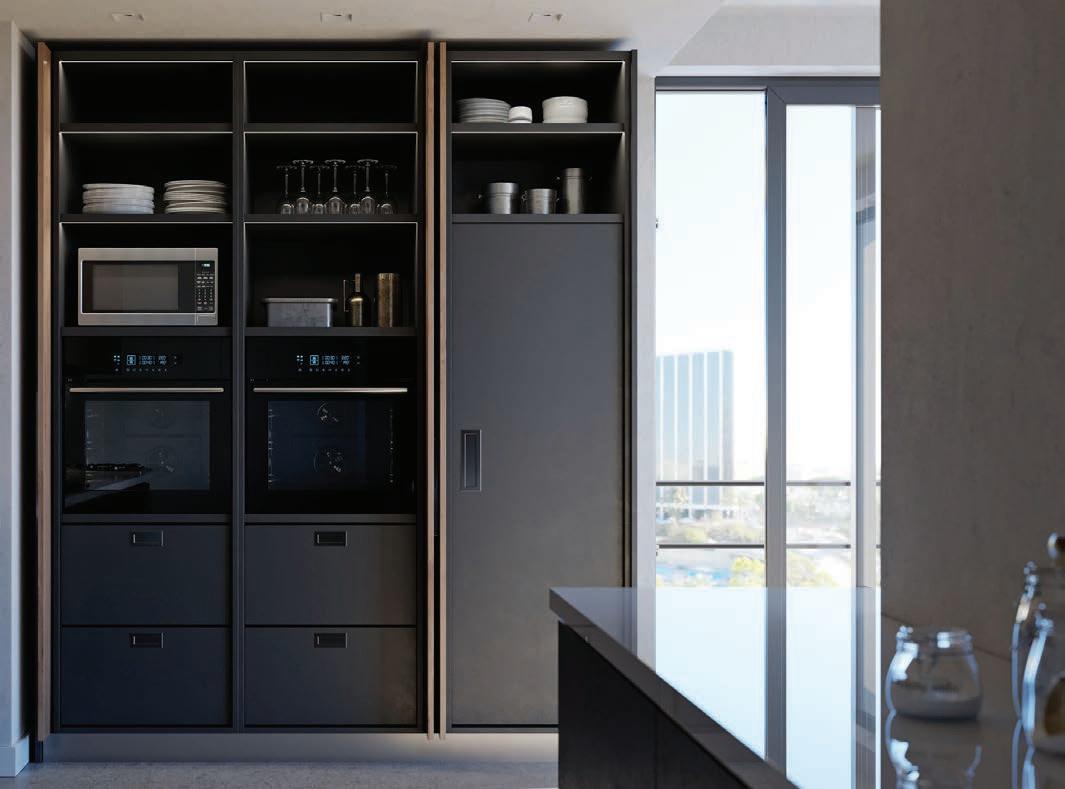
A global leader in the field of opening systems.
The Nover / Salice partnership has been re-established. For the first time in over 30 years, Salice will now be available through the Nover network. Local stock, local people, supporting local business.
www.nover.com.au

WingLine L – The Folding Door you Love, UPGRADED!
Hettich is proud to announce the latest enhancements to its most popular folding door system, WingLine L
Driven by a commitment to continuous innovation and quality, Hettich has optimised the WingLine L to deliver even greater convenience, functionality, and design flexibility.
This sleek and elegant bi-folding door system offers an impressive panorama effect and provides access to 6m² of cabinet content, so your clients can easily see and take out what they need. Perfect for kitchens, bedrooms and bathrooms alike, this handleless option uses Hettich’s inimitable push-tomove technology to create a moment of pure magic that will never become tired or boring.
WingLine L pull-to-move comes with an optimised running performance, soft opening and closing operation, and a concealed profile on the bottom
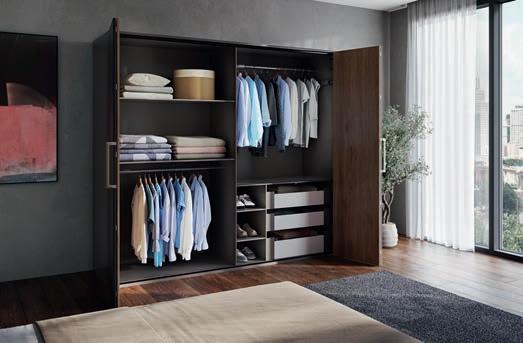
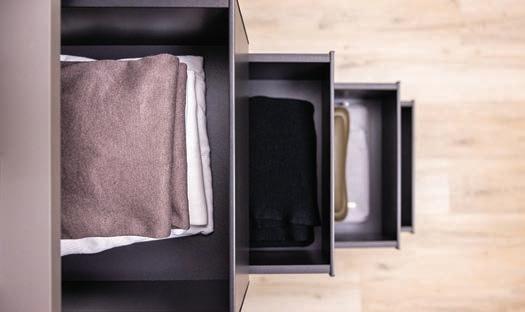
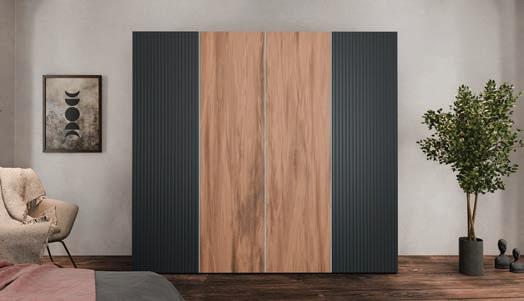
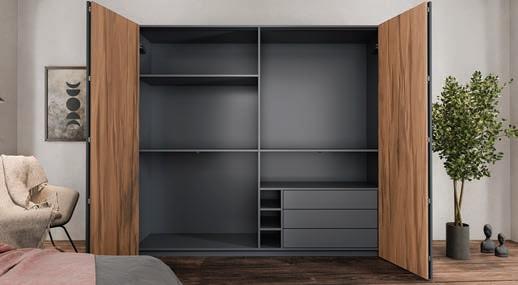
panel, making it a versatile all-rounder capable of fulfilling all your design needs.
The Folding Door you Love, UPGRADED!
• Ball bearing rollers and two-component rollers ensure quieter, smoother operation and better durability.
• Now with four guide rollers, and adjustable depth and height, WingLine L provides improved stability and a more refined movement.
• Maximum door height of 2600mm and reveal adjustments enable seamless installation with greater precision.
• Steel Spring technology replaces gas spring kinematics, offering customised opening speed and dampening intensity. Now left-right compatible for added convenience!
• Hidden fittings and a high-quality finish ensure a sleek and modern aesthetic for your projects.
• Reduced complexity with less stock variation and a streamlined conversion process for easy integration into your product range.
Additionally, Hettich has introduced a new Anthracite colour option, alongside the existing White and Silver finishes, providing more design versatility. ■
Hettich Australia designwithhettich.au
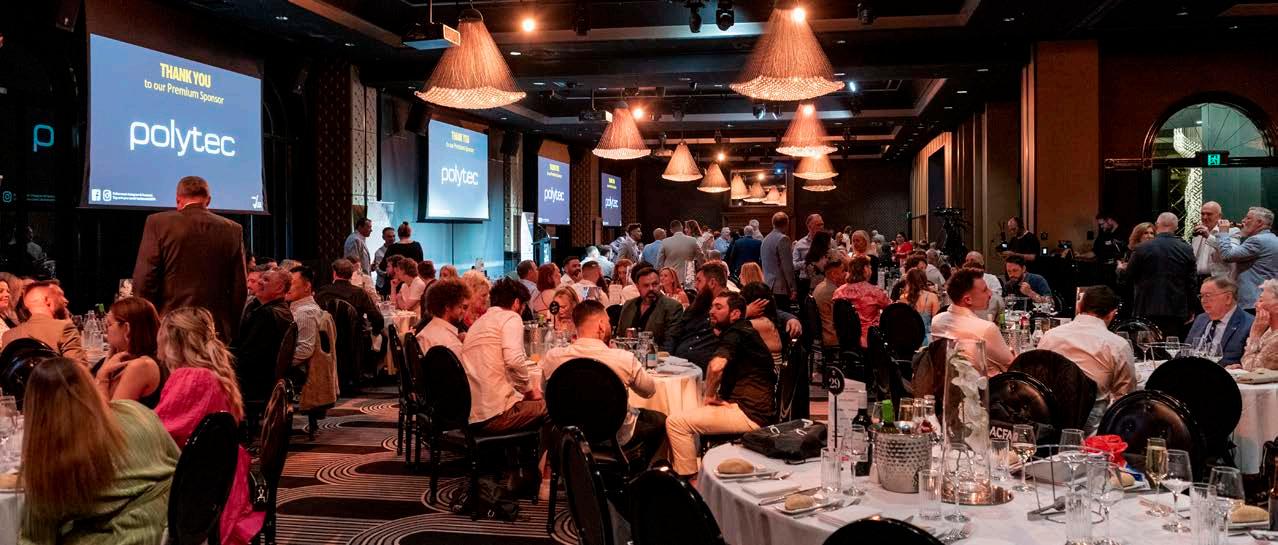
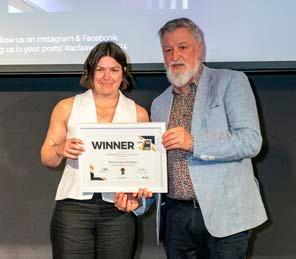
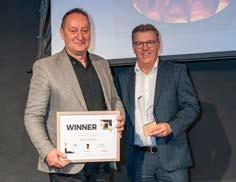

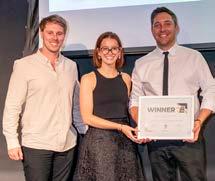
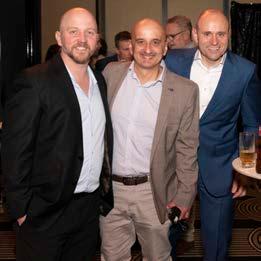

The ACFA Industry Awards celebrate the outstanding craftsmanship, innovation, and leadership across the cabinet, furniture and design industry. Whether you’re an emerging talent or a seasoned professional, this is your chance to showcase your talent, gain industry-wide recognition, and elevate your business.
Don’t miss the opportunity to boost your profile, attract new clients and stand out!

Workplace Advice
Casual Employment Law Changes
With the upcoming changes to casual employment laws, it’s important that employers understand their obligations
Under the new Employee Choice Pathway, employers are now no longer required to make casual conversion offers to employees.
From 26 February 2025 for large employers (15 or more workers) and 26 August 2025 for small employers (fewer than 15 workers), casual employees will have the right to request conversion to permanent employment if they:
• Have been employed for at least six months (12 months for small business employers).
• Believe they no longer meet the casual employment definition under the Fair Work Act.
New Definition of a Casual Employee
(applies from 26 August 2024)
Regardless of employer size, a casual employee is only considered casual if:
• There is no firm advance commitment to ongoing, indefinite work.
• The employee receives casual loading or a specific casual rate of pay.
What to Do if You Receive a Notice from an Employee
If a casual employee provides a written request to convert to permanent employment, you must:
Consult with the Employee Before responding, you must discuss:
• Whether the employee would become full-time or part-time.
• Their new hours of work.
• The date the change will take effect (this must be the first full pay period after the response, unless both parties agree to another date).
Respond in Writing Within 21 Days
Your response must either:
• Accept the request, confirming the employee’s new status (full-time or part-time), their work hours, and start date.
• Refuse the request, but only on lawful grounds.
When Can an Employer Refuse a Request?
An employer can only refuse the request if:
• The employee still meets the casual employment definition.
• There are fair and reasonable operational grounds, such as:
• Significant changes to the way work is structured.
• Major impacts on business operations.
• Compliance issues with a fair work instrument.
• Accepting the request would breach recruitment or selection processes required by law.
If a request is refused, the written response must explain the reasons for refusal.
Employer Protections & Obligations
Employers cannot take action to avoid their obligations or an employee’s right to convert to permanent employment. This means you cannot:
• Reduce or change an employee’s hours of work to prevent them from converting.
• Modify their pattern of work to maintain casual status.
• Terminate an employee to avoid conversion obligations.
Casual employees are also protected from adverse action if they:
• Exercise their right to request conversion.
• Receive and respond to an employer’s decision.
• Participate in a dispute about changing to permanent employment.
What Employers Need to Do Now
• Review your casual workforce and assess whether employees still meet the casual definition.
• Update internal systems to ensure casual conversion requests are handled promptly and fairly.
• Prepare a consultation process to discuss changes with employees before responding.
• Ensure compliance with the 21-day response period for any request received
To assist you in meeting your obligations, ACFA has developed a suite of resources which can be found in the member portal on the website. ■
ACFA Workplace Advisory Team Membership@acfa.net.au 1300 342 248
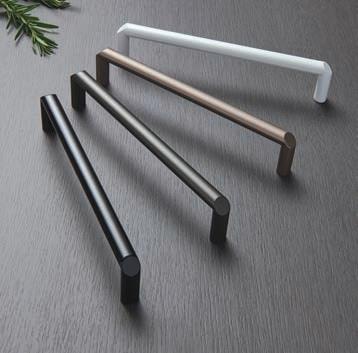
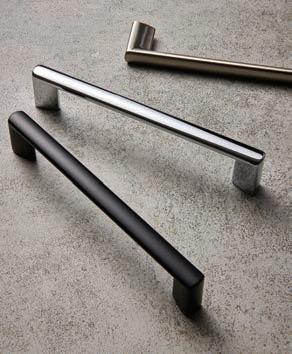
Modar® Handles at Lincoln Sentry
Styles and finishes for all types of projects; Modar® Handles are exclusive to Lincoln Sentry
Introducing the Modar® Handle Range by Lincoln Sentry; a superior selection of handles which integrate practical functionality with modern architectural design. Expertly designed to work in harmony with your defined space, this handle range is perfect for residential, commercial, retail and custom free-standing or built-in furniture applications.
Engineered with meticulous attention to detail, the range offers everyday functional styles as well as more modern/contemporary and traditional designs. Modar handles are available in a wide range of finishes to ensure every designer and cabinet maker can craft a project that expresses the individual style desired.
Inspired by the latest technology, architectural innovation and modern design trends, Modar handles will complement your design and decor perfectly with a wide array of sizes and finishes available. Reflecting leading-edge concepts and colourways, the range features sophisticated forms that create a modern aesthetic.
The entire Modar Designer range has been curated from premium-quality Italian manufacturers and features soft squared lines that are elegantly
understated and equally compatible with traditional and contemporary cabinetry styles.
Designed for practical and stylish simplicity, the Modar Everyday range comfortably handles the demands of a busy environment, while encapsulating a sophisticated approach to aesthetics. The fashionable and functional forms feature clean lines that evoke a pure, free-flowing organic mood.
The Traditional range, inspired by classic or antique style, enables individuality to come to the fore in every project through bold yet subtle inspirations that achieve a timeless, classic look with contemporary influences.
The Profile range is streamlined and functional in design, allowing the space to feature a clean, handlefree look while still being practical and easy to use.
So, whether you are creating large, open-plan rooms or working within a confined area, explore this stylish collection of high-quality drawer and pull handles. Whether you're a designer, cabinet maker, carpenter, builder, or renovator looking to give your project a lift — you will find quality products that offer both functionality and style. With Modar’s wide range of handles, you can confidently transform any space. ■
Lincoln Sentry 1800 551 919 lincolnsentry.com.au/

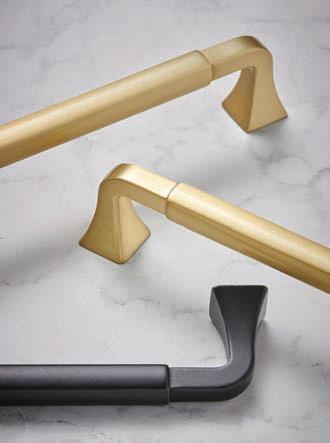
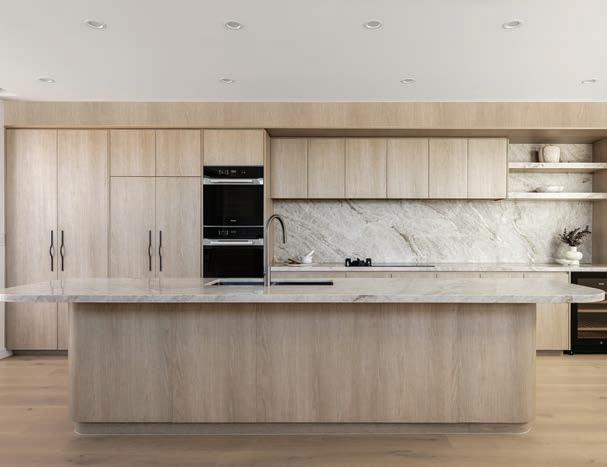
The Home of Beautiful Natural Stone
CAV’ART Designer Stone has established a reputation as a leading supplier of natural stone with an incredible range
As a market leader in premium natural stone slabs, CAV’ART Designer Stone offers a large range of some of the finest natural stones from around the world. Renowned for its ability to source and supply extraordinary natural stone products, the company is proud of its established relationships with designers, architects, joiners and end users.
Natural stone is known for its unique properties and its ability to make a space truly one-of-a-kind. Designers and architects around the world use natural stone to create a visual element that can’t be replicated, and one which makes a statement in any residential or commercial environment.
CAV’ART’s experienced team can assist with choosing the perfect slab for your project, to suit your client’s needs and lifestyle. For truly amazing design spaces in both residential and commercial projects, the company’s range of beautiful natural stone can be viewed on its website or in person at its Sydney warehouse.
Take advantage of CAV’ART’s personalised stone selection experience to find the perfect stone for your client’s space and project. The expert team is on hand to assist with making selections that not only meet, but exceed, expectations. Neither you or your clients will be rushed through the process; CAV’ART’s philosophy is one of education and inspiration and the team understands the need for truly considered and informed decision making.
Using a consultative approach, designers and clients will be guided through the selection process, helping to reduce any feelings of overwhelm. The team pays particular attention to the design intent of the project, as well as how the clients will use the space, to ensure that all recommendations are fit for purpose and find the right balance of design and functionality.
The Sydney stone warehouse is packed with a wide variety of natural stone slabs but, if you can’t see the right product for your needs, the team is able to work with you to source a broader range of options through its network of trusted overseas stone suppliers.
Many of CAV’ART’s long-term clients return again and again thanks to the exemplary service received from the selection team, and to take advantage of access to natural stone which cannot be sourced elsewhere.
Founded in 2021, CAV’ART Designer Stone has quickly made its mark on the design and cabinet making industries with its unique approach to service and support. To see the extensive range of natural stone available, visit the website or contact the team to arrange a design consultation at the warehouse. ■
CAV’ART Designer Stone cavart.com.au/
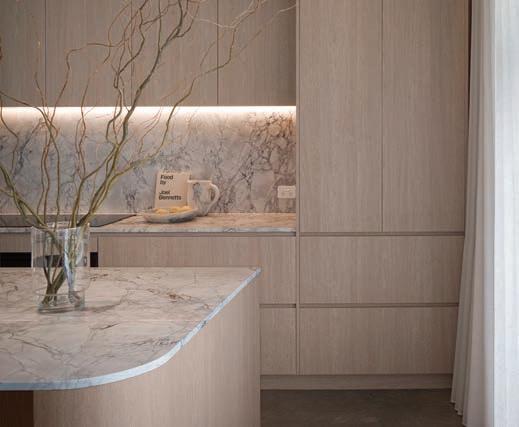
Photography — Sebastian Mrugalski Builder — Rose Construction
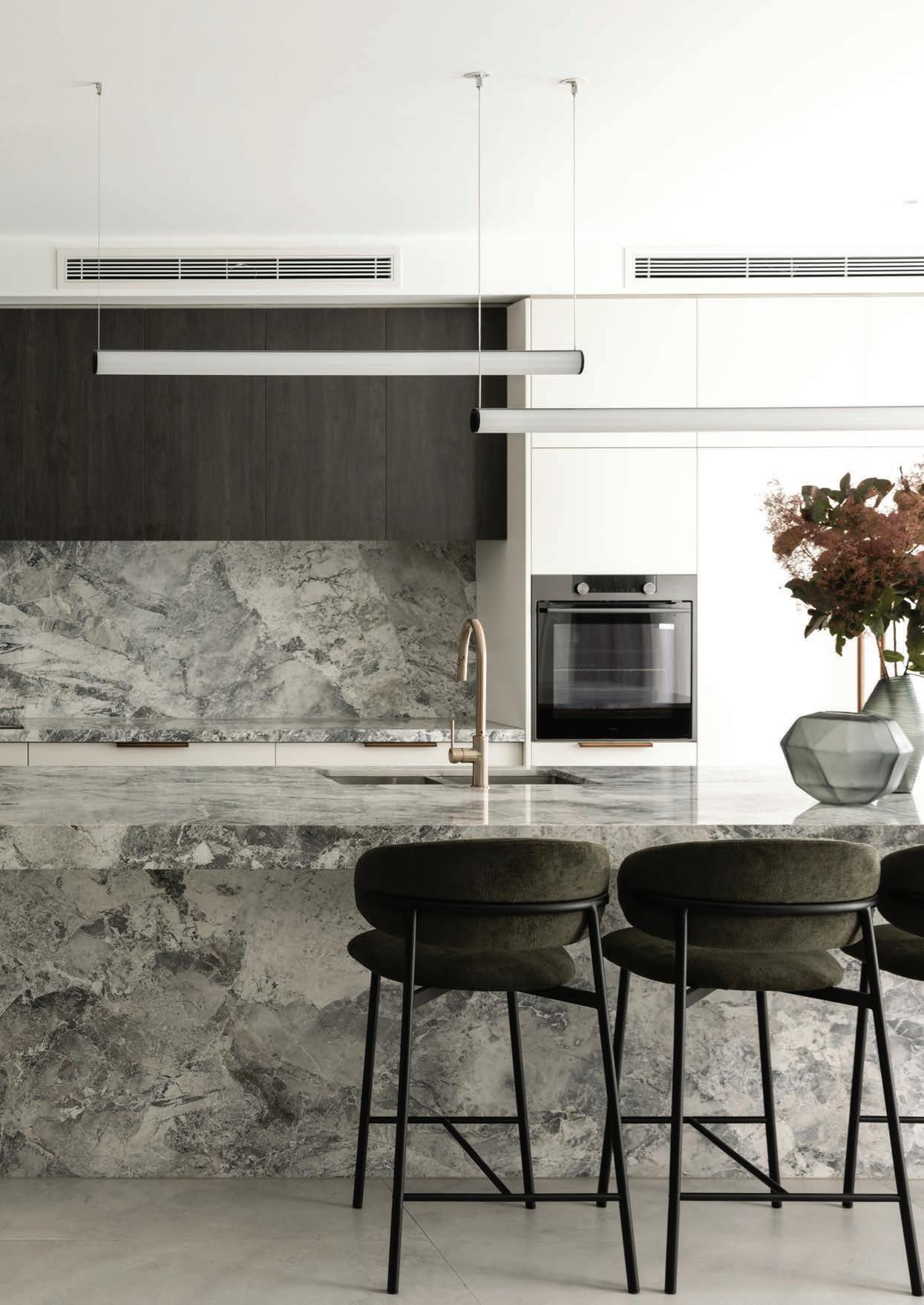
The home of beautiful natural stone
Interior design: Anita Nader Interior Design
Photography: Simon Whitbread
Transforming the Joinery Industry with VORTEK Spaces and CABINET VISION
In the ever-evolving world of joinery and interior design, staying ahead of the curve is crucial
Planit Australia is committed to equipping businesses with the best tools to boost productivity, creativity, customer presentation and, ultimately, sales. Two of the most powerful tools available are VORTEK Spaces and CABINET VISION, which together are revolutionising how professionals approach design and manufacturing.
VORTEK Spaces: A Game-Changer for Design Presentations
VORTEK Spaces is immersive 3D rendering software built for the joinery industry. It is ideal for presenting interior projects such as kitchens, bathrooms, closets, and other residential or commercial spaces.
With no technical skills required, users can quickly create 3D video walkthroughs, 4K images, and VR experiences. This versatility ensures that projects are presented in a highly engaging and visually striking way. Users can import projects from CABINET VISION, apply materials, and add 3D models and accessories to build a full, immersive presentation within minutes.
One standout feature is real-time visualisation, allowing users to see design changes instantly — no long render times required. Designers can make edits live with clients and get immediate feedback, streamlining decisionmaking and improving customer satisfaction. Simple to use yet incredibly powerful, VORTEK Spaces is an essential tool for design professionals looking to impress clients and work more efficiently.
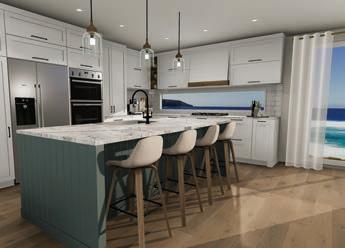
CABINET VISION: The Backbone of Efficient Design
While VORTEK Spaces shines in presentation, CABINET VISION is the foundation of efficient design. This fully modular software takes joinery projects from concept to completion, simplifying the process for designers while supporting both creativity and precision.
CABINET VISION allows users to produce professional designs and generate pricing estimates tailored to project needs. Key features such as material optimisation and CNC output ensure designs are accurate and production ready. When used alongside VORTEK Spaces, professionals can easily move from detailed technical drawings to polished, interactive presentations — enhancing both workflow and client engagement.
Another major advantage of CABINET VISION is its ability to generate precise bids and pricing directly from designs, helping businesses protect their margins. The software also produces cut lists and material requirements, reducing waste and improving productivity.
A Synergistic Approach
Planit Australia believes in the power of synergy. By combining the presentation strength of VORTEK Spaces with the manufacturing efficiency of CABINET VISION, the company delivers a full-spectrum solution for joinery professionals.
This integrated approach not only improves the design and production process but also elevates the client experience.
VORTEK Spaces and CABINET VISION are set to transform the joinery industry by boosting creativity, efficiency, and profitability. Planit Australia is proud to support its clients with these cutting-edge tools, helping them succeed in a competitive market. ■
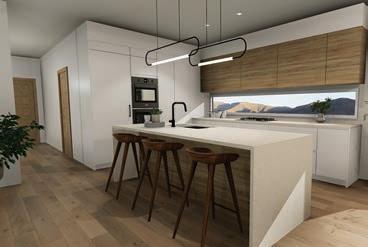
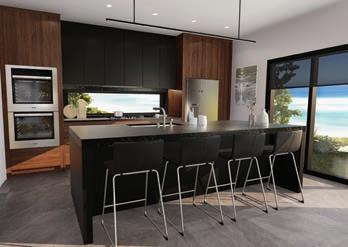
CHANGING SOLUTIONS.

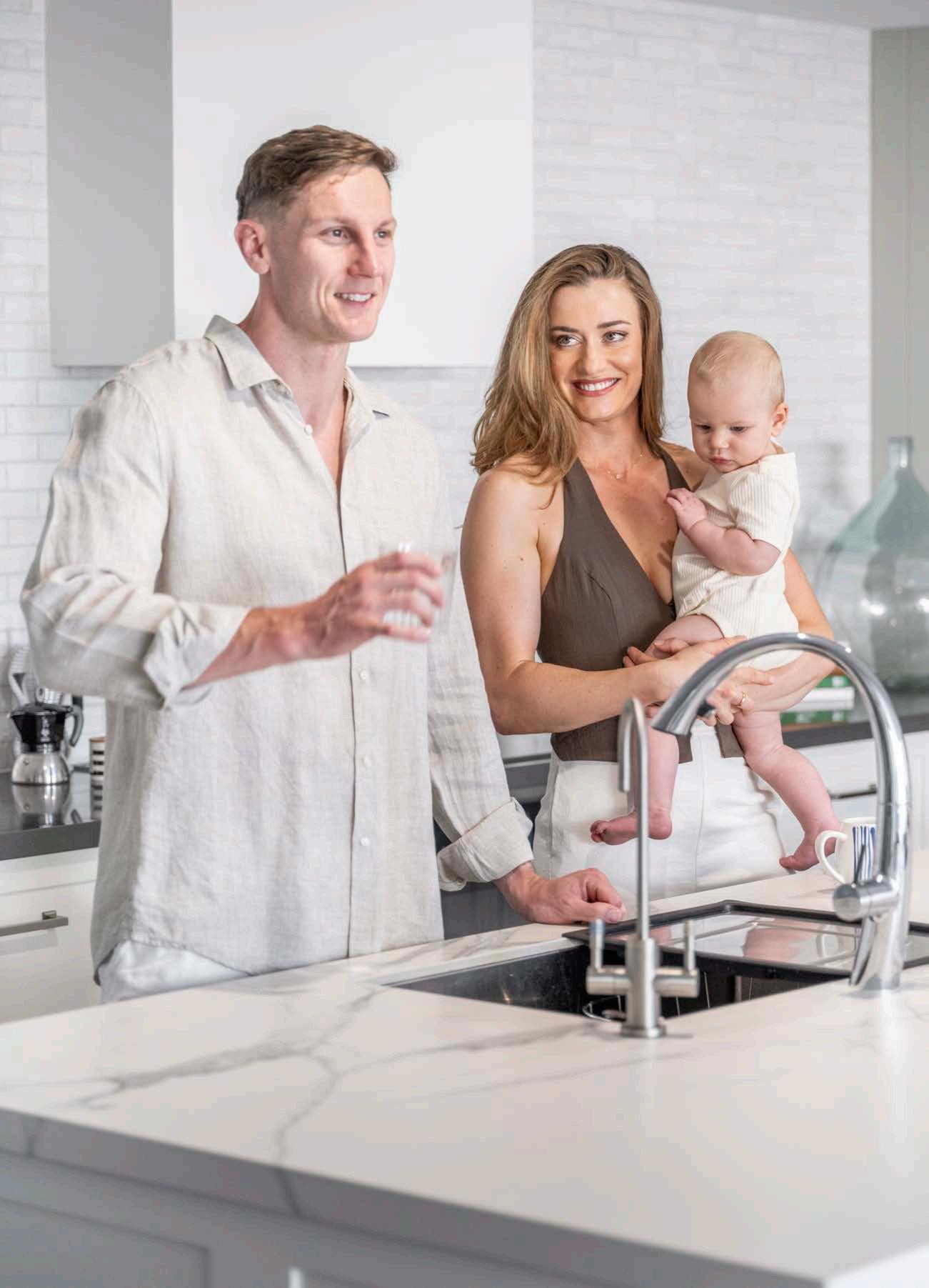
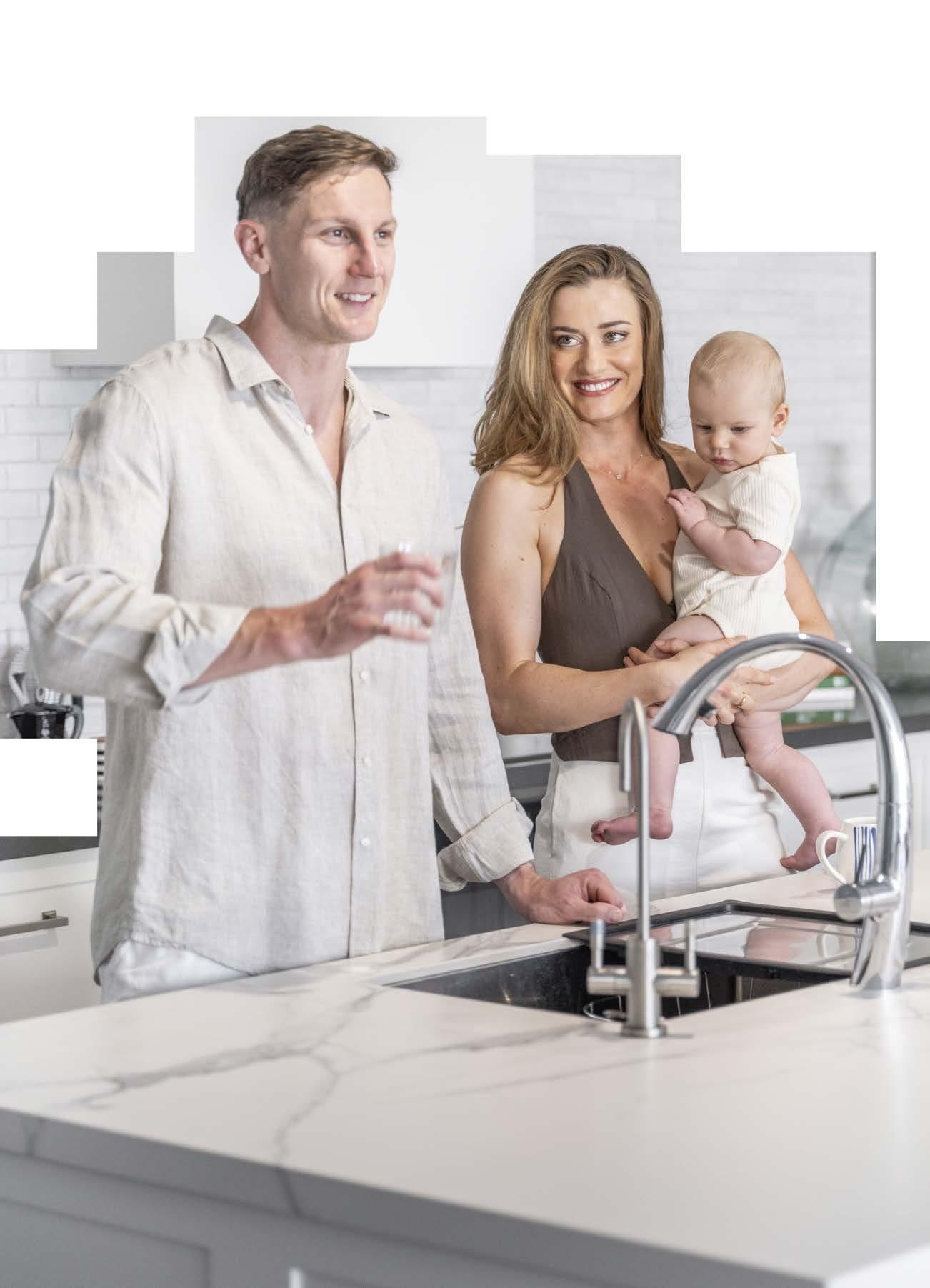
Reimagine the Possibilities for Dynamic, Multifunctional Spaces with REVEGO
REVEGO by Blum is designed to optimise room functionality while maintaining a sleek, contemporary aesthetic
Offering an intelligent solution for concealed storage, REVEGO seamlessly integrates into any room, allowing for a clean and uncluttered environment without compromising on style or accessibility.
Leveraging Blum's renowned expertise in precision engineering and design, this pocket system is ideal for homeowners and designers looking to maximise space efficiency, while also adding an element of elegance and sophistication to their interiors.
More Possibilities with Pocket Systems
Complete with fully integrated technology, the pocket door system supports large fronts from floor to ceiling that challenge the typical design of sliding or pocket doors.
Customisable for nearly any space, REVEGO is available in single and double door applications. REVEGO uno and REVEGO duo can be combined as required or can be used independently. Adding an extra element of ease and elegance, the full overlay fronts disappear into a dedicated narrow cabinet which measures 100mm for uno and 150mm wide for duo.
Characterised by high quality and ease of use, REVEGO uses its Blum TIP-ON motion technology, which allows users to open cabinet doors with a light press and slide them away into the pocket. TIP-ON also provides an opportunity to design door fronts with or without handles, depending on the design needs of the customer.
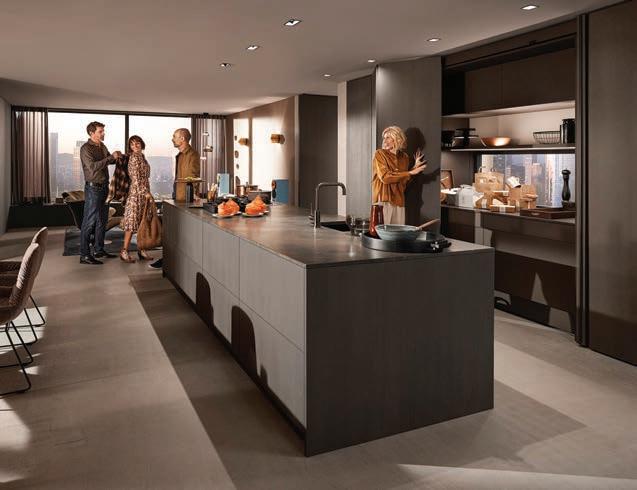
To close off the space and conceal the entire area, simply press the door to release the front from the pocket. When the doors are closed, furniture units are concealed, including their pockets, making REVEGO the ideal solution for the multifunctional use of space.
Easy Planning and Ready-to-Install Solution
REVEGO’s standardised pocket widths make it simple and easy for manufacturers to assemble, ensuring a precise fit for every project. Unlike other pocket systems, REVEGO is fully integrated into the run of furniture. This gives designers and cabinet makers the freedom to explore and enhance their designs surrounding the application, making the most of the furniture within and next to the pocket system.
The well-thought-out solution has all essential components integrated into the pocket system. This means there is no hassle of transporting individual component parts or assembling them at customers' premises. Instead, cabinet makers can easily preassemble the tall cabinet in their workshop and transport the product to the site, keeping the hardware always protected while also ensuring the ease of installation for the cabinet maker.
Blum makes the planning, ordering and assembly of REVEGO pocket systems simple and effective with its free-to-use E-SERVICES. Product configurator provides checked parts lists, planning information and CAD data within minutes for easy planning, while its EASY ASSEMBLY app offers step-by-step assembly instructions on-the-go for a precise fit every time. ■
Blum Australia blum.com/au/en/
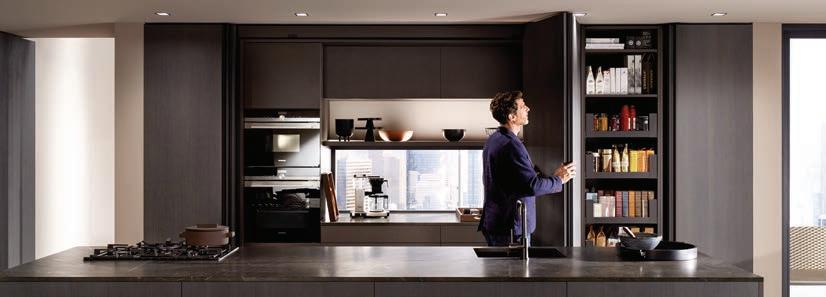
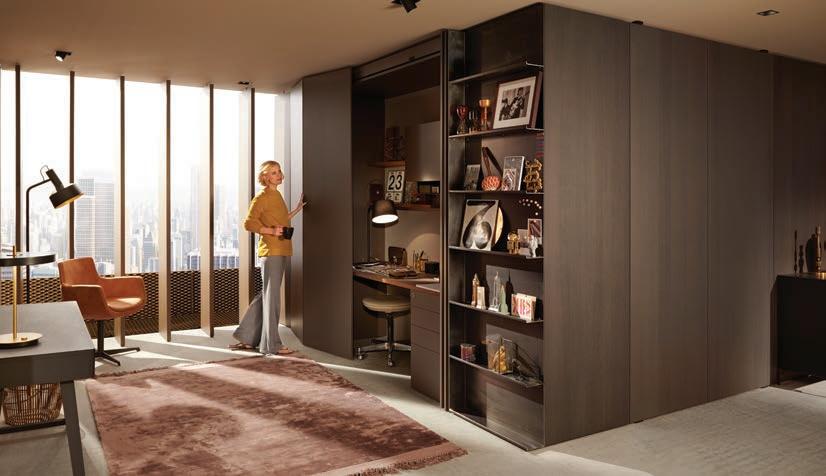
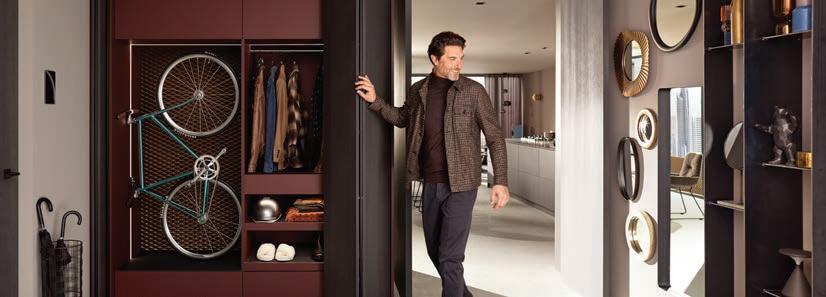
Software
Stair Innovations Reaches New Heights with Staircon
Digitalisation is transforming how stairs are designed and built — thanks to Staircon
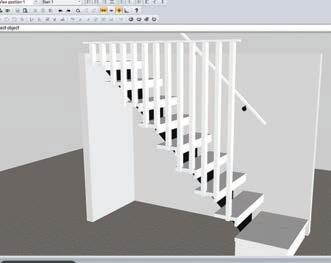
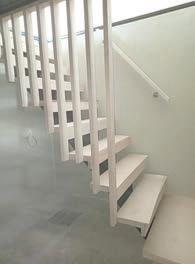
Adelaide-based Stair Innovations has embraced this shift, replacing hand-drawn plans with advanced 2D and 3D digital modeling. The result: faster workflows, greater design accuracy, and clearer client communication.
With more than 30 years in the stair industry, Stair Innovations saw the need to modernise. Staircon’s intuitive features and seamless CNC integration help reduce lead times and simplify the production of complex stair designs.
“Staircon improved not just our process, but also how we connect with clients,” says operations manager Mark Benham. “It helps them visualise the final product with confidence.”
Transitioning to digital came with a learning curve, but strong local support — through on-site training and consulting — ensured a smooth adoption. Recent upgrades to CNC machinery, combined with Staircon’s CAM 5+, have further increased output and flexibility.
Looking ahead, Stair Innovations plans to expand its product range and stay ahead in a growing market by leveraging Staircon’s customisable, scalable platform. “It’s a solution that grows with us,” says Mark. “We’re ready for what’s next." ■
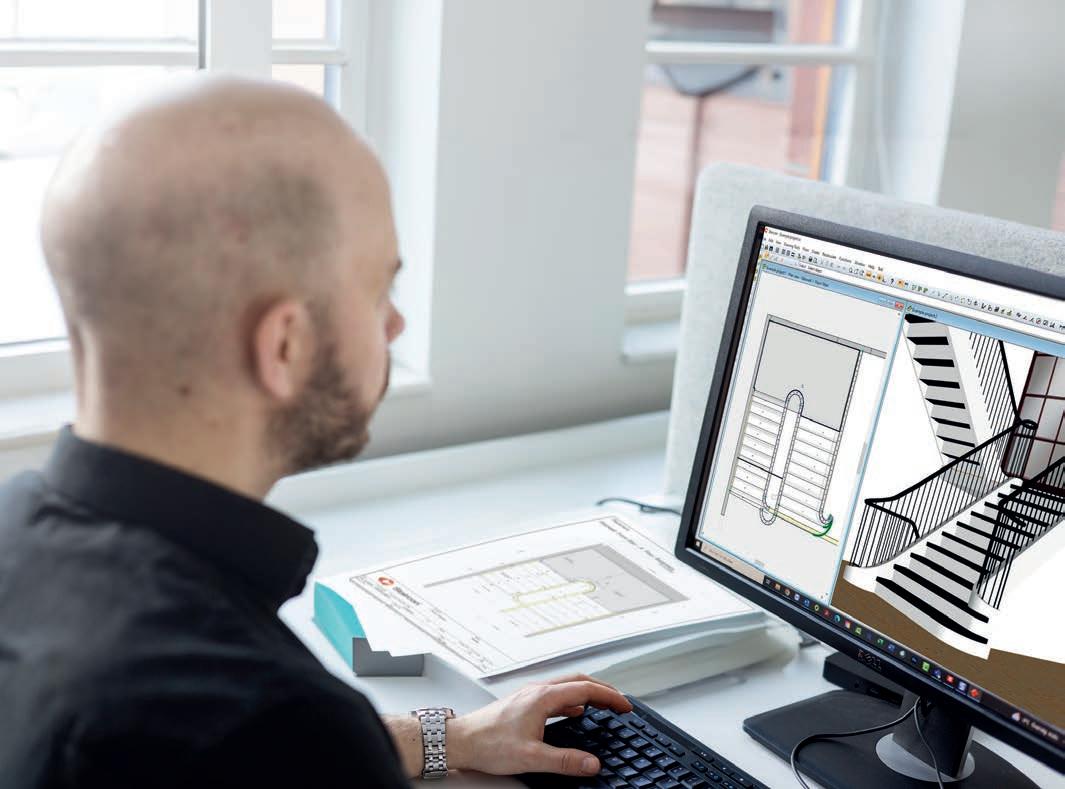
3D Software for stair design and production
Staircon
What are the Most Profitable Cabinetry Businesses Doing Differently?
Join the Cutting Edge Expo — an event connecting close to 100 of Australia’s most innovative cabinet makers and manufacturers.
It’s all happening June 13 at the Melbourne Convention Centre. If you’re serious about scaling smarter, this is where you want to be.
This one-day event is powered by Cabinetry.Online and packed with real-world insights, practical sessions, and unfiltered stories from those who’ve scaled, automated, and transformed their businesses.
Scaling a Cabinet Manufacturing Business
Discover how to define your niche, step away from unprofitable work, and build systems that support longterm growth. Hear from operators who’ve pivoted from installs into scalable, cut-to-size manufacturing models.
The Smart Factory
See what tools, layouts, and workflows that the top manufacturers are using to create lean, high-output production environments. This is factory strategy in real terms — from layout design to software and machine integration.
Automation Advantage
Learn how smart tech can reduce overheads, increase throughput, and free up your time. Real examples, real numbers, real wins.
Stand Out or Blend In
Your Unique Selling Proposition (USP) is everything. Find out how cabinetmakers are saying “no” to the wrong work, getting laser-focused, and using that edge to attract better clients and higher-margin jobs.
Gain practical insights to run smarter, faster, and more profitably from expert panels, live demonstrations, and candid conversations from those already doing it. Contact us to learn more. ■
Cabinetry.Online 1300 783 997
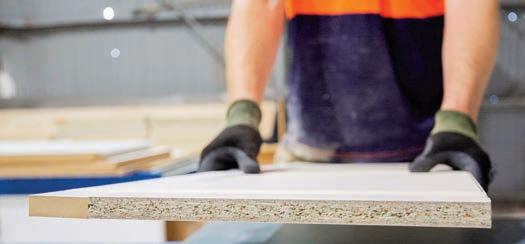


Products Saving Cabinetry with Removable Labels
Say goodbye to sticky residue and left-behind bits of label with industry-tested removable labels, reducing labour costs and damage for cabinet makers
When family-owned and -run All About Labels first began promoting labels into the construction industry, it realised that many cabinet makers were using permanent labels on their products. This would then lead to issues with removing the label and the risk of an unsightly or damaged product when it came time for removal.
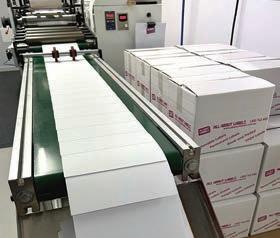
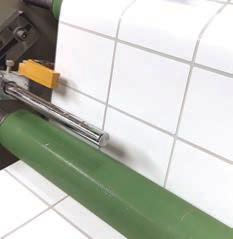
All About Labels’ removable adhesive has been industry tested to ensure that it will stay firmly in place on the cabinetry but, when it comes to installation time and the label is no longer required, it can effortlessly be removed with no sticky residue or label left behind.
All About Labels offers:
• Removable roll labels printed by a label printer and automatically labelled by a ‘print & apply’ CNC machine.
• Removable roll labels printed by a label printer and applied by hand after the CNC manufacturing process.
• Removable sheet labels which can be printed on a desktop laser printer and applied by hand.
• Label and printer starter packs for customers to implement printing labels in a cost-effective way.
• Business branding labels to advertise a business after installation.
All About Labels is a proud member of the Australian Cabinetry and Furniture Association (ACFA) and Australian Woodworking Industry Supplier Association (AWISA). ■ All About Labels
1300 762 603






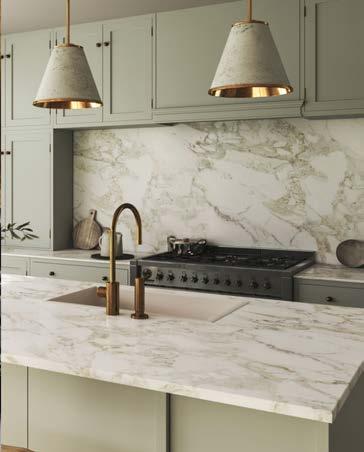


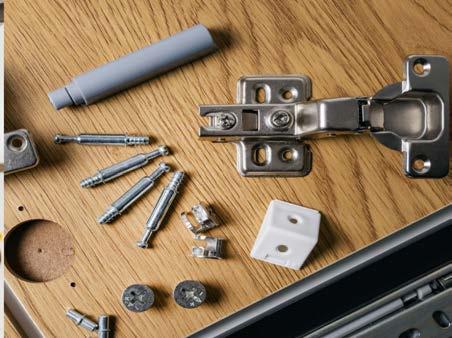
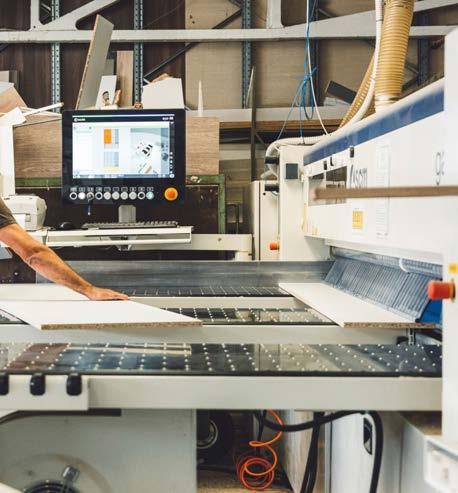



Want to Be the Go-To Manufacturer for Cabinets?
Cabinetry.Online’s new 3D Room Planner lets cabinet makers and tradies create cabinetry designs directly from your website — without needing to purchase or install software themselves.
The best part? Orders come straight to you, ready for processing, with zero time required from you.
With no CAD programs to learn, no expensive licenses, and no technical roadblocks, anyone can start designing and ordering from you.
Why would a cabinet maker or tradie go anywhere else for cut-to-size?
With drag-and-drop simplicity, your customers enjoy realtime pricing and can place accurate orders in minutes — boosting satisfaction, building long-term loyalty, and giving you a powerful edge over the competition.
• Room Design Flexibility: Confirm room shape and specify wall dimensions and heights.
• Full Customisation: Design cabinets to exact specifications and drag them into place across the room.
• Interactive Visualisation: Open doors/drawers or switch to wireframe view for detailed product insights.
• Real-Time Dimensions: Visualise dimensions and distances during designing to ensure accuracy and fit.
• Instant Pricing: Real-time updates streamline budget management for clients and save you hours of quoting time.
Unlock this in-demand functionality for your clients and position yourself as an industry leader. Contact us today to schedule a demo and elevate your business to new heights. ■
Cabinetry.Online cabinetryonline.co


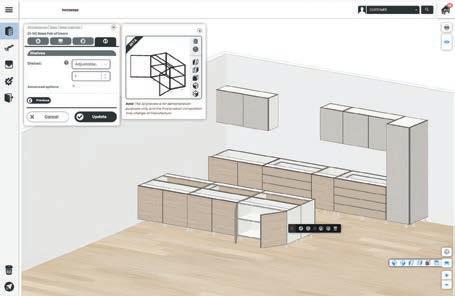
scaling your cut to size faster now! Clients can CREATE 3D DESIGNS and SUBMIT ORDERS FROM
Design and place cabinets to EXACT SPECS
REAL TIME DIMENSIONS ensure accurate fit Live pricing updates SAVE HOURS ON QUOTING
Owning vs Renting a Factory: What’s Right for Your Business
Deciding whether to own or rent your factory can have a major impact on your long-term finances and business flexibility
Benefits of Owning: Owning allows you to build equity, customise the space, and benefit from property appreciation. It also offers tax advantages through deductions on interest, depreciation, and maintenance. Ownership provides long-term stability, potentially lower costs over time, and leaves you with a valuable asset — whether for ongoing use, rental income, or sale.
Benefits of Renting: Renting requires less upfront capital, offers location flexibility, conserves funds for other business needs, and limits exposure to market and interest rate risks.
Can You Afford It? If you're paying $200/sqm in rent for a 200sqm factory ($40,000/year), that’s equivalent to a $506,000 loan with $3333/month repayments.





With a 30 per cent deposit, you'd be looking at a $725,000 purchase. Every extra $100,000 borrowed adds roughly $660/month. Deposits might come from savings, equity, business profits, or super via an SMSF.
Market Trends: Factory values in Sydney rose from $250-$500k in 2004 to $800k-$1.2M in 2024. If you're renting now, think about where you'll be financially by 2045.
General info only — seek tailored advice. ■
Finlease Michael Ryan michael@finlease.com.au finlease.com.au.










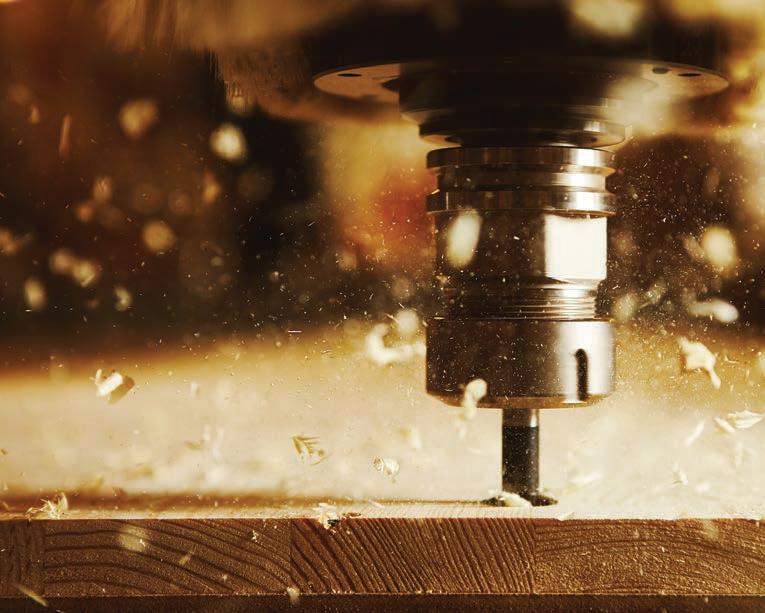



Sharpening Your Personal Saw – part 2
Creating better business owners by establishing good habits and routines, and asking for help when you need it
By Dean Brakell
Rule number one in First Aid is ‘look after one’s self, first’. In the previous issue, we spoke about the lack of supervisory skills and ineffective middle managers across our industry and the direct effect on productivity and safety.
We also touched on the lack of personal development for business owners, often due to being ‘time poor’ and juggling multiple roles in the business.
This issue I’d like to touch on those common issues and challenges we see every day and that we hear from ACFA members and the broader industry.
All too often I hear from tired and stressed business owners and/or managers who feel as though the business is controlling them, rather than the other way around. Constantly changing, and sometimes complicated, IR/HR issues are a key factor in burnout and small business failure, as are meeting customer deadlines to ensure enough cash flow to keep the business afloat. Sound familiar?
Ask yourself: When was the last time you spent time on business development activities? When was the last time you met with your key staff to help improve their performance? When did you last review your business plan or marketing plan? Have you looked at your profit and loss statement lately?
A recent survey of ACFA members encompassing micro, small, medium and large businesses across Australia confirmed the need for business mentoring or coaching/advice to assist business owners to not only get back on track but also to ensure they are on the right train.
Business coaches can assist business owners with better planning, improved performance and greater productivity. They can offer support, guidance and advice on improving your business. The right business coach can provide you with the confidence to make the right decisions. ACFA has recently teamed up with MaxMyProfit, offering a bespoke business coaching service to ACFA members.
Our industry has become increasingly competitive. We simply cannot compete on price alone; imports, and the big box retail companies have brought additional challenges to our design and manufacturing sectors. The only effective response is to ensure we have a skilled and educated workforce and skilled, educated and supported business owners who understand how to navigate and run a successful business.
Benefits of a Business Coach Advice
The biggest benefit of a business coach is having someone of whom you can ask questions and obtain individual advice. A business coach is trained to assist with more complicated business matters that are out of the realm of expertise of family and friends.
Methods and Strategies
In addition to simply giving advice and helping improve your personal business skills, business coaches can prepare you with the methods and strategies that will assist with your career as a business owner, with a focus on your particular niche in this industry.
Confidence — Making the Right Decisions
Business coaches help you work through your options and make informed, confident decisions. This, in turn, leads to the enhanced likelihood of staff retention and development, skill and leadership development and increased employee productivity.
I’ve been that business owner, and I know the hardest task is to ask for help and be open to receiving feedback you may not like to hear. The famous Australian runner, Ron Clarke, once said “the hardest step for a runner to take is the first one out the door." Don’t stay indoors!
If your business needs support, don’t hesitate to contact ACFA. While members enjoy discounts and exclusive offers, our training and support services are available to everyone in the industry. ■
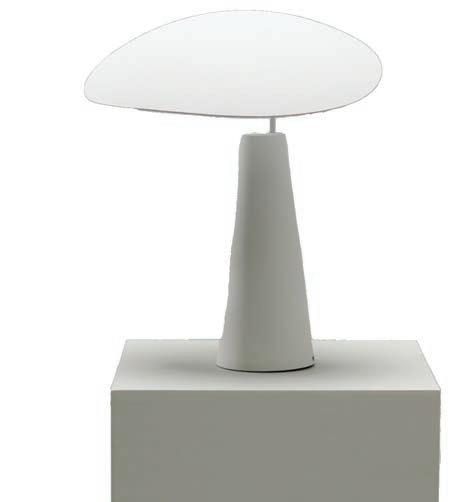
Company Name Page Number
All About Labels 78
Blum 74, 75
Cabinetry.Online 77, 79
Cav’art Designer Stone 70, 71
Elecosoft 76
Finlease 80
Hettich OBC, 66
HIA Economics 46
Hideaway Bins IBC, 60
KBDi 42, 49
Lincoln Sentry IFC, 69
National Media 63
Nover Australia 65
Planit 72, 73
Australian Cabinet and Furniture Association Ltd (ACFA)
Connect The Magazine
Connect magazine will be published quarterly and distributed free to end users involved in the cabinetmaking, kitchen, design, furnishing and joinery industries. Every issue of Connect magazine brings you the most relevant and impactful stories from the cabinet making, furniture and design sectors. Our content is curated to keep you informed and be inspired. The Summer Edition — Industry Awards & Design; Autumn Edition — Machinery & Safety; Winter Edition — Business Insights, the Economy and Finance; Spring Edition — Design Trends & Sustainability.
ACFA The Association
ACFA, formerly named the Furnishing Industry Association of Australia (FIAA), is a not-for-profit industry association. ACFA, incorporated since June 1948, has a proud history of representing the needs of businesses in the sector. FIAA and the Cabinet Makers and Designers Association (CMDA) merged in 2018 and ACFA was born.
ACFA is a membership organisation with members located all around Australia. ACFA’s altruistic existence is to assist members in trade and commerce throughout Australia and to deliver high-quality education, training, information and resources to those who are involved in the cabinetmaking, kitchen, furnishing and joinery industries.
Membership information can be located at: acfa.net.au/membership/
ACFA The Registered Training Organisation (RTO) RTO National Code: 90432
ACFA has been a Registered Training Organisation for more than 25 years. In that time, ACFA has served the needs of the furnishing, cabinet-making and kitchen sector with structured, flexible, accredited, and nationally recognised trade training. ACFA exists purely for the industry — the organisation speaks as a united voice to the community, consumers and all levels of Government to ensure the best interests of the industry.
ACFA offers both accredited and non-accredited training and more information can be found at: acfa.net.au/training/
Distribution
Connect magazine is distributed free of charge to ACFA and KBDi members, subscribers, ACFA database, and client databases of major suppliers and partners of ACFA. To be added to the distribution list, please visit the Connect magazine website: connectmagazine.com.au/
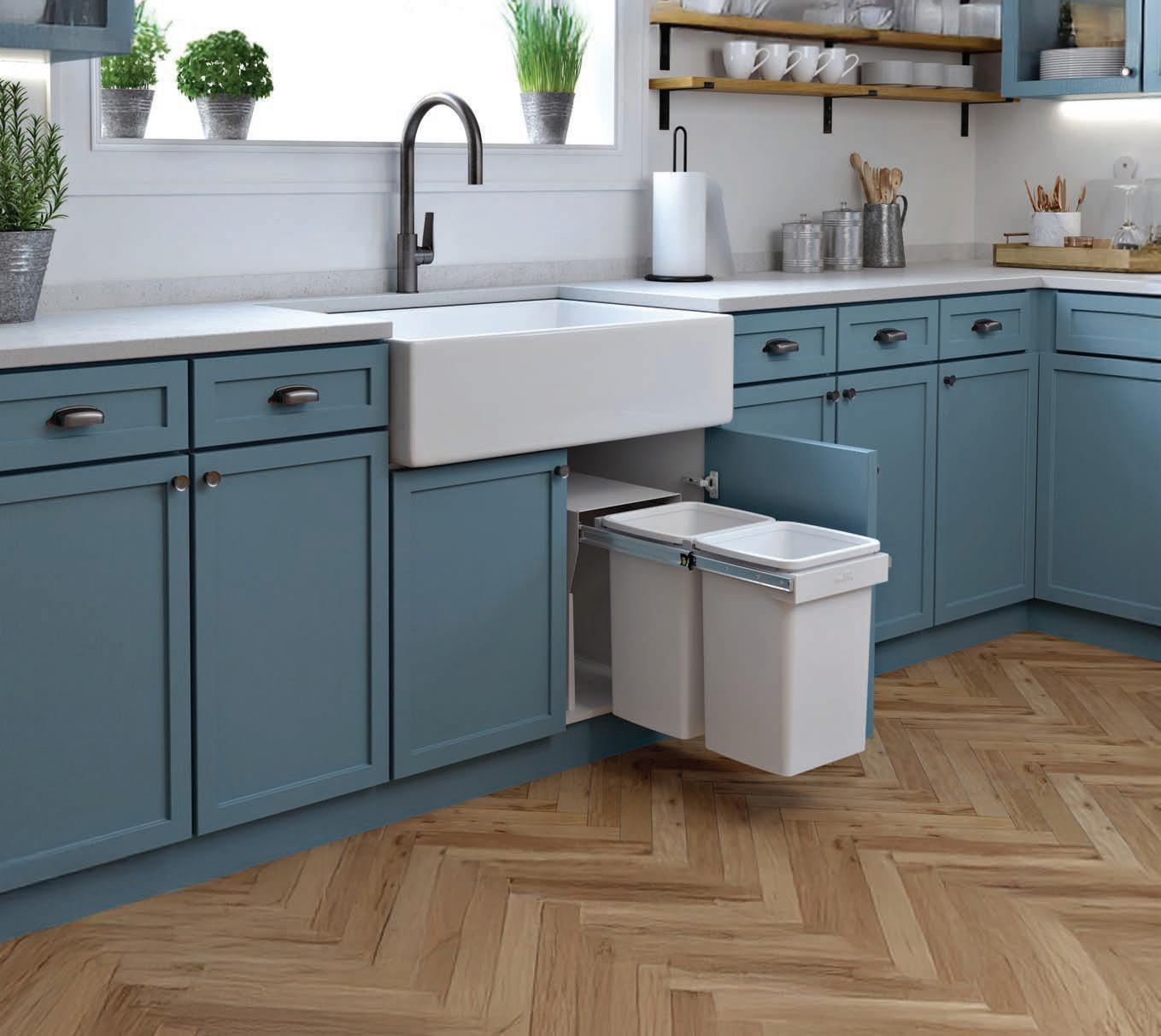
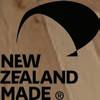

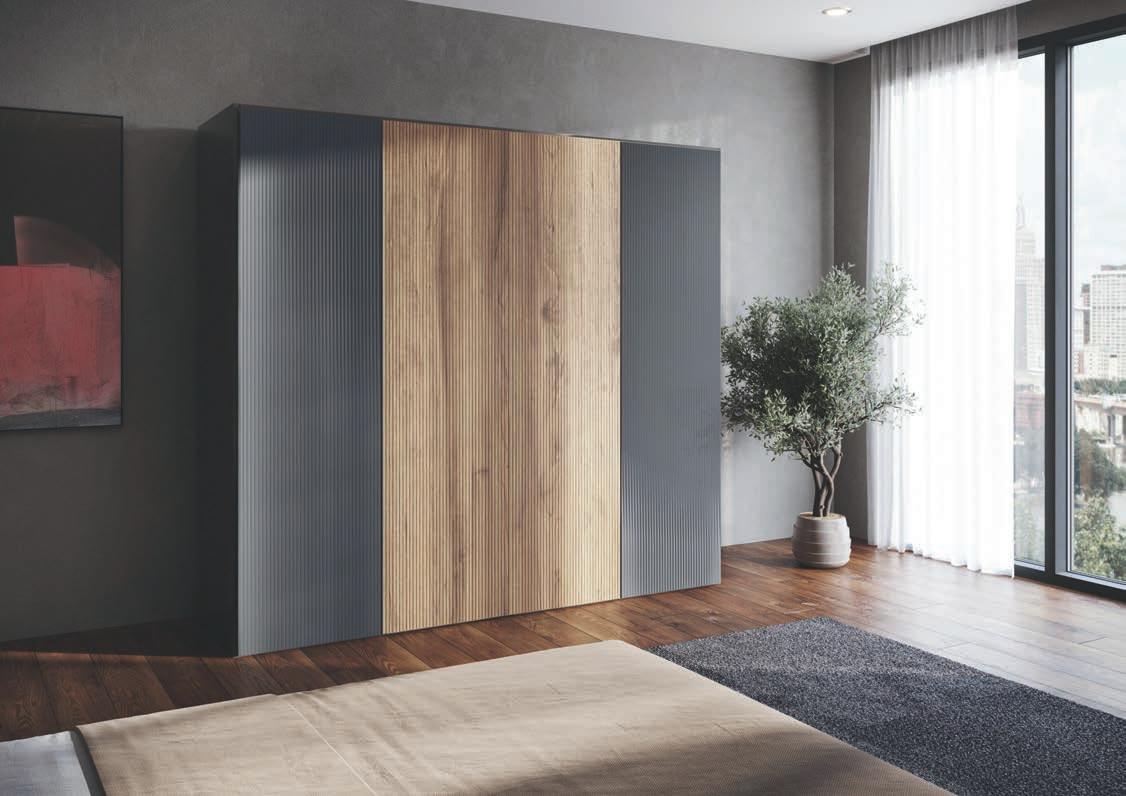
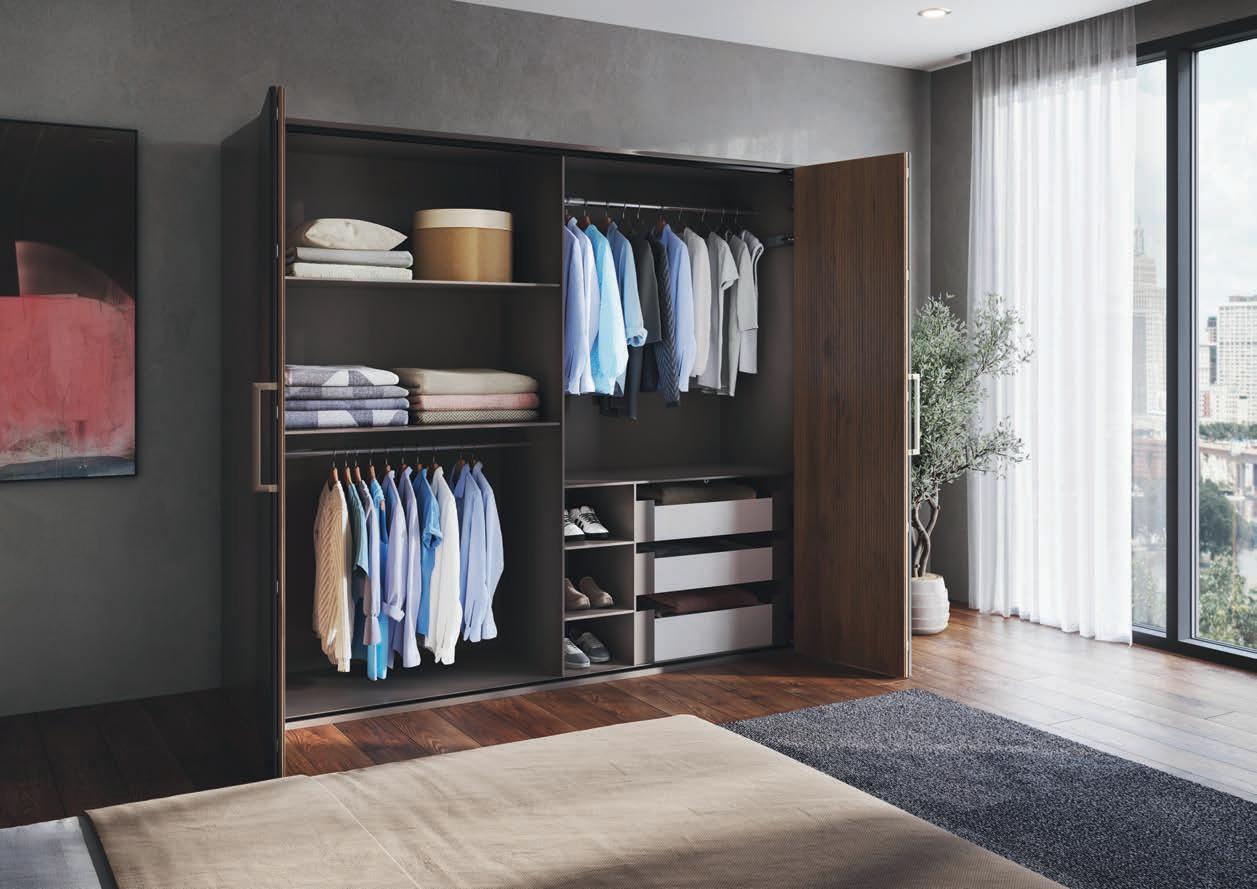
The Folding Door System you Love, Upgraded.

Introducing the enhanced WingLine L: our sleek, handleless folding door system with push-to-move magic, smooth performance, and access to 6m² of storage — perfect for any room.

Push to open & Pull doors
Smooth running
Track system now available in Anthracite.
Panoramic view
